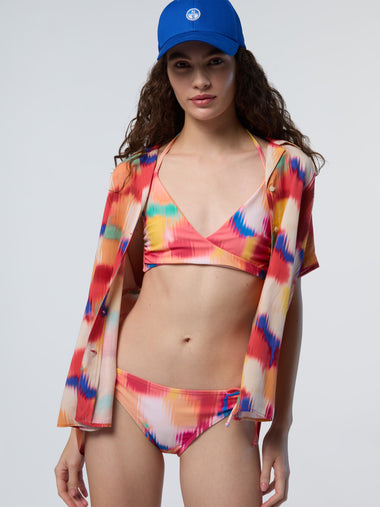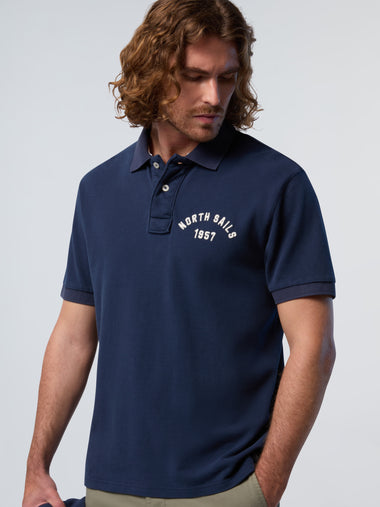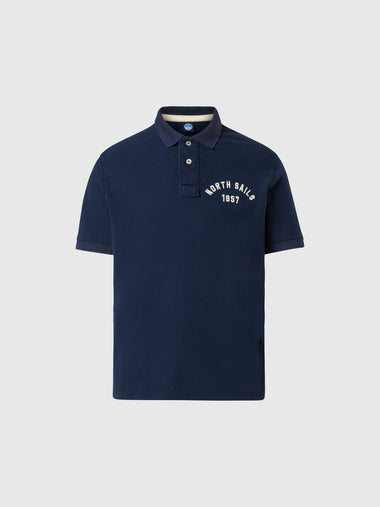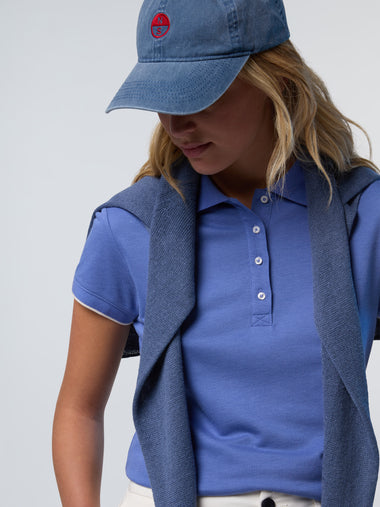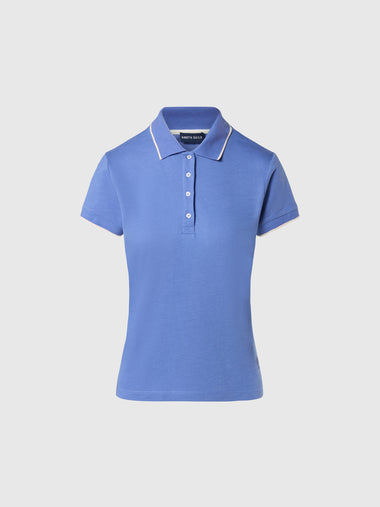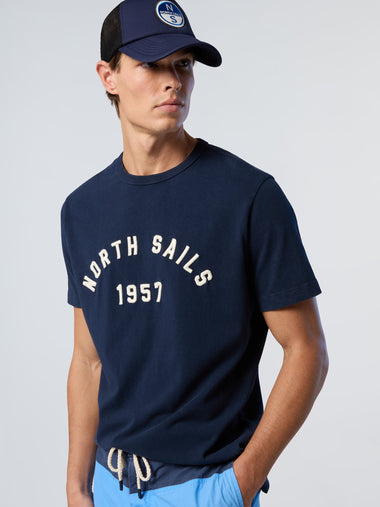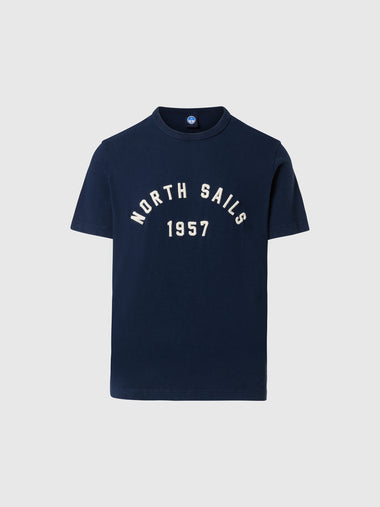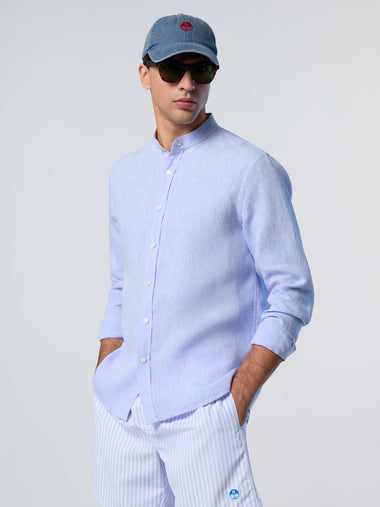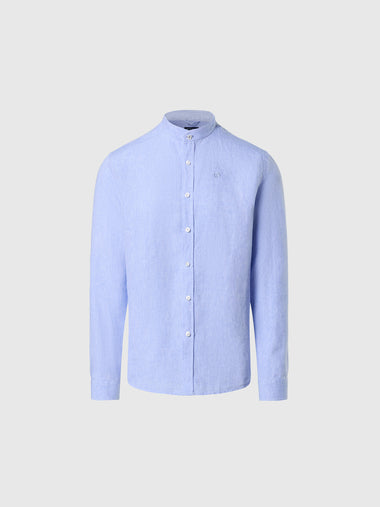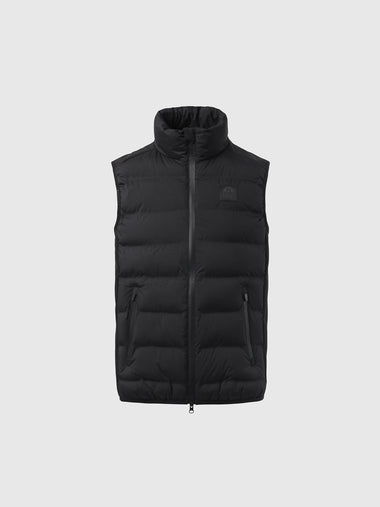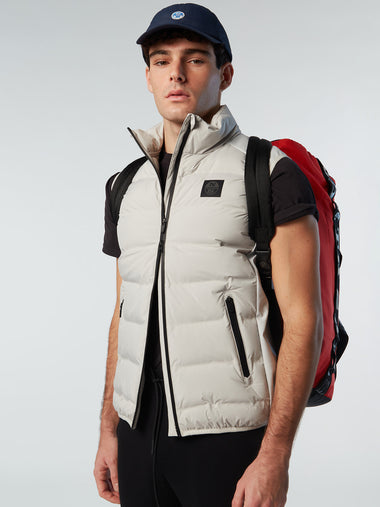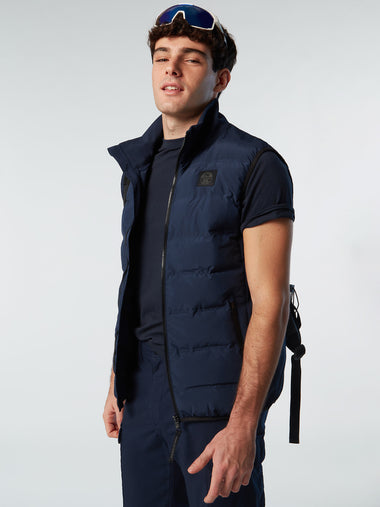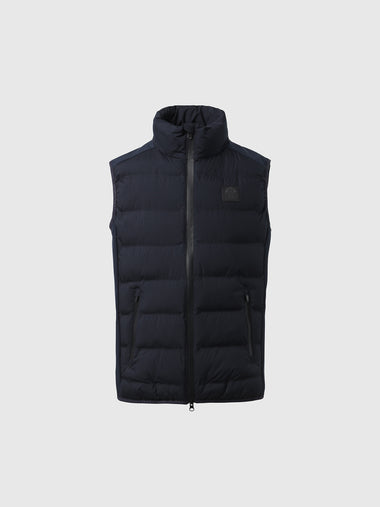NORTH SAILS BLOG
Tutto
Events
Guides
News
People
Podcast
Sustainability
Tech & Innovation
Travel & Adventure

PACIFIC YANKEE'S DREW FREIDES, 2020 NATIONAL CHAMPIONS
PACIFIC YANKEE’S DREW FREIDES
2020 IC37 National Champion Interview
📸 Morgan Kinney / IC37 Class Association
Drew Freides is a well-known face in the sailing world. His list of impressive results includes back to back Melges 20 World Champion in 2017 and 2018, two IC37 Winter Series wins, 2019 Farr 40 World Champion, and most recently, winning the 2020 IC37 National Championship.
Drew commented, “This year has been a crazy one, more like musical chairs trying to organize and reorganize. We planned to spend our entire summer in Newport, RI, yet we had to be as flexible as possible. Fortunately, we were able to keep our core crew together for the back to back events; Rolex Race Week and the NYYC Annual, which served as the IC37 National Championship. I hadn’t done much sailing this summer before these last two, and half weeks, so I was thankful for the opportunity to spend solid time on the water. Our goal this year was to win the Nationals, and our entire program came together to make that possible.”
NS: The IC37 is a fun boat with strict OD rules in place. What makes the IC37 Class set up so successful?
Drew: This class is great because you don’t have to get into an arms race; you put together the best crew combination you can think of, and every team has the same restrictions and rules to follow. Some may not favor it, but I believe that the class has done an excellent job of limiting costs. Every rule in place is to get more sailors involved. The IC37 is an extremely competitive fleet but also has a collegial feeling as well. Long term, it’s not about focusing on the top boats at each event, but instead getting more and more people involved in sailing.
📸 Morgan Kinney / IC37 Class Association
NS: What do you enjoy most about sailing in the class?
Drew: My favorite thing about sailing in this class is the camaraderie. We have many friends out there racing on other boats in the fleet, and it’s fun to compete with each other on a fun, fast boat. Another thing I like is that the IC37 class offers excellent coaching and support. Greg Fisher and North one design expert Tim Healy went out together before the events and helped us fine-tune. They provided tips and took photos and video to debrief with the fleet at the end of the day. We worked on boat handling around the corners and left no details out. By the end of the day, we were ready to compete.
NS: What do you feel has helped make the class so successful?
The team at North Sails have put a ton of effort into boat set up and sail configuration. I am a believer in reefing the sails when the wind pushes the class limit. It may look weird while onboard, but once you do it, you can sail in anything, and the boat is still fast and just as competitive. It’s a good option to have. For example, it was blowing 37-30 knots on Practice Day 1, and we reefed both sails and went out and had a great day on the water. Having this option to make things more manageable in higher wind limits is a direct result of sail experts and the class working towards a common goal.
In particular, this season, having two events go off without a hitch, has been a massive factor in our year’s success. We can’t thank the New York Yacht Club enough for putting together two great events, back to back, in such challenging times. The competitors very much appreciated it. The club could have canceled this thing at any time, but I think they knew it was necessary to go racing for our sanity as sailors. This is the first regatta I have done since we the winter series in Florida back in January. Kudos to the club and race organizers for pulling this off. Every sailor appreciated it.
📸 Morgan Kinney / IC37 Class Association
Drew’s Tips for a Successful Season and Top-Notch Program:
1. The crew is crucial in getting people to fit the roles. There are no passengers on this boat. There’s just no room. So thinking through who’s going to be your team and what roles they play is critical. Finding the right people that are the right weight is also crucial. Rather than having simply great sailors, we have great sailors who are even better for their specific role. The rule of having two women onboard is also a secret weapon for our team. They are light and can do many roles that contribute to every success of the team. We choose to have a woman always “trim” the runner because they can’t hike out when doing so, so being lighter is an advantage—that said, they need to be highly skilled because that role is so essential to our boat speed.
2. Having an agile bowman and a strong mastman. Both roles require strength and timing. Clean hoists and kite takedowns are equally important because they set you up for the next leg or maneuver. Our excellent takedowns also enabled us to keep the chute up long and gave us the one-up on other boats at the leeward gate.
3. Having crew members that can do different jobs. Myself and Bill Ruh could helm the boat, but we could also trim. This worked out nicely as Bill steered for Race Week and I drove for the Nationals. We have a couple other crew who also fit into this all-around ability. To say it’s beneficial would be an understatement.
As the driver, I receive a lot of the credit, but I’m only the guy driving at the end of the day. My job is to drive in a straight line –The crew makes the boat go fast and gets us around the corners.
4. The power of the runners. The runner is the one thing that constantly has go up and down based on wind strengths. I would consider it one of the most essential trimming tools onboard. Our female crews are unbelievably valuable on the boat for roles like this. They are small and can be our primary runner trimmers and help around the boat; a great weapon for any team.
5. Confidence in boat speed is key. If you don’t have confidence, you won’t do well. Our team has confidence in our boat speed. This lets us take less risk tactically, knowing that our boat speed can get us out of jams. We don’t need to bang corners to win races, but rather play the shifts and let our boat speed enable us to pass boats when required. That consistency wins regattas.
6. Mark your settings. Where to trim the jib for certain settings, the vang, marks for the leads, marks on the jib sheets, marks on the runners, marks for the outhaul, how many plates we needed beneath the mast for each wind speed, etc. We knew what settings we had without having to waste time and energy thinking about it. This allowed us to focus on sailing the boat fast and smart rather than worrying about the boat tune.
“The one thing Vince Brun taught me is that when you’re racing the boat you don’t want to be thinking about your settings. You should know where they go.”
7. Weight placement. Depending on wind speed, we all knew where our crew weight needed to be. Shifting crew weight according to wind strength helps you minimize wetted surface in light air, control the balance of the boat, and maximize the power of the boat as the wind picks up. Controlling not only the heel but also the fore/aft trim is important.
8. Preparation is key. We always make a point to have two solid days of practice with most, if not all, of the crew in attendance before every event. Practice day one is about getting everyone acclimated. Practice day two we hit it hard. The nice thing about giving yourself two full days is that you spend the first part of the first day getting things organized. When all the other boats show up for their first practice day, we’re already set up for speed and ready to go.
From your team at North Sails, well done to all competitors on a successful event! Special congrats to Drew Freides and rockstar team on Pacific Yankee, 2020 National Champions!
IC37 Class Page Tuning Guide Contact an Expert About the Class
📸 Morgan Kinney / IC37 Class Association
📸 Morgan Kinney / IC37 Class Association
READ MORE
READ MORE
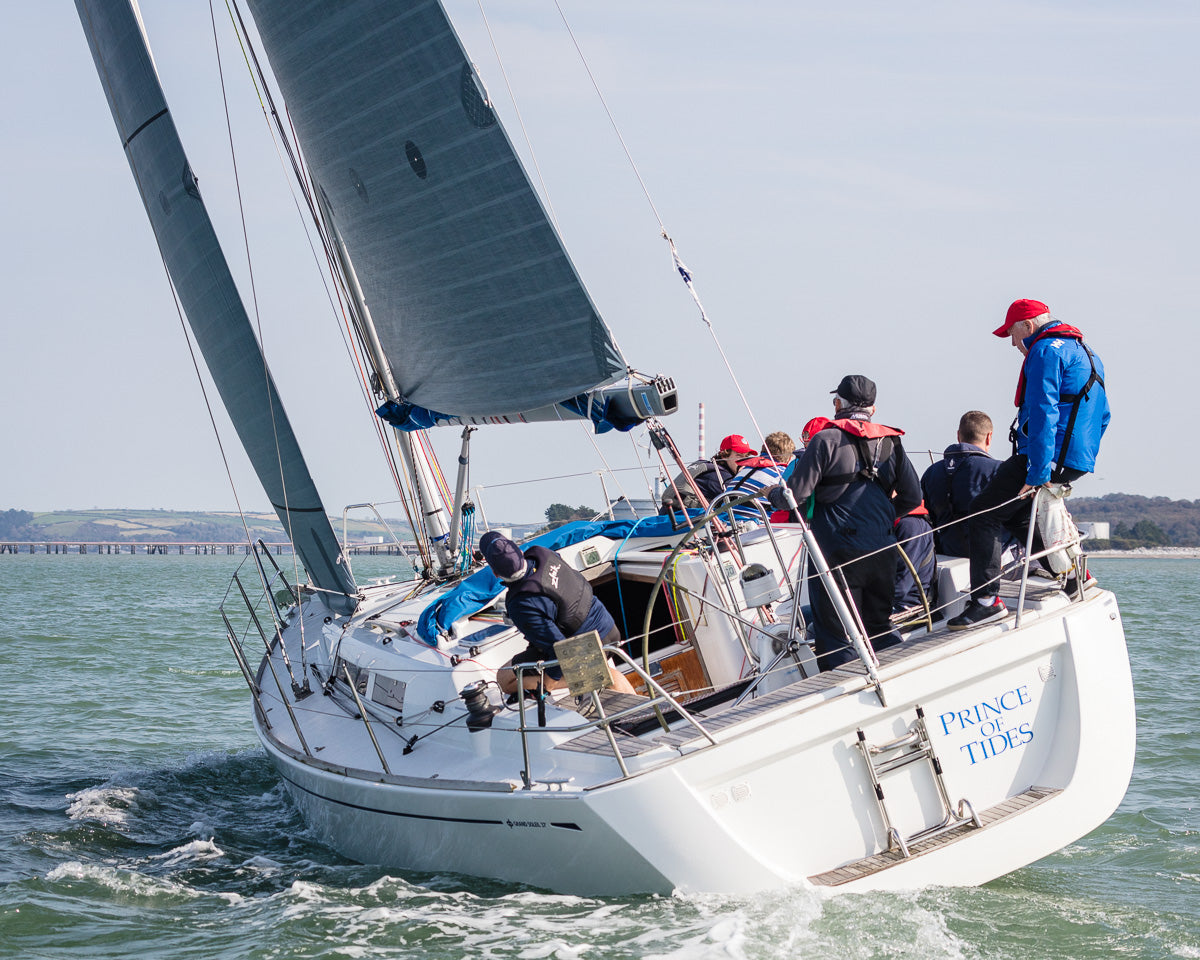
THE PRINCE OF TIDES
PRINCE OF TIDES MAKES A STATEMENT IN LOCAL RACING
New 3Di Wardrobe Propels Local Sailors to the Front of the Pack
📸 Bob Bateman
Frank Caul and John Molloy, sail out of the Royal Cork Yacht Club and together own Grand Soleil 37, Prince of Tides. Frank comes from a cruising sailing background, and John is more experienced in the racing platform. They’ve been traveling down to the Caribbean annually for fun getaways for the better part of 20 years, and during the week, they take part in local racing out of Royal Cork Yacht Club which is celebrating a very special tri-centenary, being the oldest club in the world.
The Boat
Prince of Tides was a ten-year-old boat kept safely indoors in Hamburg, Germany until Frank and John acquired it last summer when they were ready to step up their game and get more competitive in the local racing fleet.
Frank said, “I found myself in a position to buy a new boat. We had been to the boat show, Das Boot, in Dusseldorf, Germany. Once we figured out what we were looking for, John went again last year on his own and wrote back to tell me that he found us a boat! We went to Hamburg right away and checked her out.” The Grand Soleil 37 would be the perfect fit for the two friends to share more sailing adventures. All they needed was to find the right sailmaker to help get her up to speed.
The seven person crew sailing on Prince of Tides is very much amateur.”We have a few trimmers on the boat, said Frank, “and John probably has the most experience as he’s been racing for quite some time, which is why he normally helms. The rest of us are very new to sailing, but we’ve been working hard to improve, and with the help we’ve received from North Sails, it’s been a positive experience for us all.”
Sails + Expertise
“Last November, we met sail expert Nigel Young, based in Myrtleville, Ireland, who not only helped design a new rudder for our boat with the help of Mark Mills but also introduced us to the power of 3Di,” said Frank.
“We haven’t looked back since! Nigel is fantastic. We didn’t have any particular allegiance to any sailmaker at the time, but working with Nigel was such a great experience, it was obvious that choosing North Sails would be the right decision for our sailing.”
Frank and John were excited to get back on the water again; their season was delayed until mid-June due to COVID restrictions, so they arranged for Nigel to see what they needed to get their boat up to speed to be competitive at their local club.
“Nigel stepped on board, and it was a world of difference,” said John. “We got a new 3Di ENDURANCE 760 mainsail and a new #2 and #3 jib, and we were ready to go. From the first day we hoisted our new sails, things have never been the same!”
This year, Prince of Tides has won just about everything they’ve come up against in IRC non-spin, and both Frank and John are very excited about what their future holds. They recently competed in the Cobh to Black Rock race and won with a really fast finish time. “People were asking us if it was a record we broke, said Frank. “The following week we also won the Naval Race White Sail division.”
Nigel commented, “This year’s Cobh to Black Rock race was a quick one. Prince of Tides had the fastest elapsed time of all the classes at just 57 minutes and 18 seconds, although hard to compare with the Spinnaker one division as we started 10 minutes after them, but even so, a great performance from the team. Frank and John’s new set up has set the tone for many good things to come.”
Prince of Tides crossing the finishline in the Cobh to Black Rock race, where they took first place. 📸 Bob Bateman
Having a Reliable Sailmaker is Vital for Success.
“What sets 3Di apart from traditional materials we’ve used is that it doesn’t stretch. We can see the camber lines on the sail, which help us trim properly. North Sails has completely changed our perspective on racing. Before we were looking forward all the time, now we’re looking back at our competitors. It’s been a game-changer,” said John.
“3Di has transformed everything,” said Frank. It has made such a difference in our sailing, speed, and has made it easy for us to find the right trim settings.”
Prince of Tides started their Autumn sailing season just a couple of weeks ago with two bullets on two-four mile course races. Their biggest competition is an X-Boat. “She’s fast,” said John, “but we are faster now!”
Working with Nigel Young + North Sails Ireland
“Nigel’s attention to detail is just unlike anyone we’ve ever sailed with,” said John. “We learn so much every time we sail with him. From the headstay to the tiniest adjustments, he’s always communicating with us to tell us what we need to do, pushing us to be better sailors and make the most of time on the water.”
“Nigel is passionate about sailing and about helping his clients perform their best,” said Frank. “His enthusiasm is unlike anything else we’ve had on board. If things are not going right, he makes sure we get it figured out quickly. His patience and enthusiasm have really motivated us to push harder each time we go out. We knew by choosing North Sails we would be most competitive, and we’ve been pleased with our decision.”
How did they come up with Prince of Tides as a boat name? “It’s a great movie featuring Barbara Streisand and Nick Nolte. You best grab a bottle or two of wine for that one,” said Frank.
Although the sailing season is coming to a pause for some, they will be sailing through mid- December in Ireland. Prince of Tides will be out there, aiming to continue their winning streak.
📸 Bob Bateman
READ MORE
READ MORE
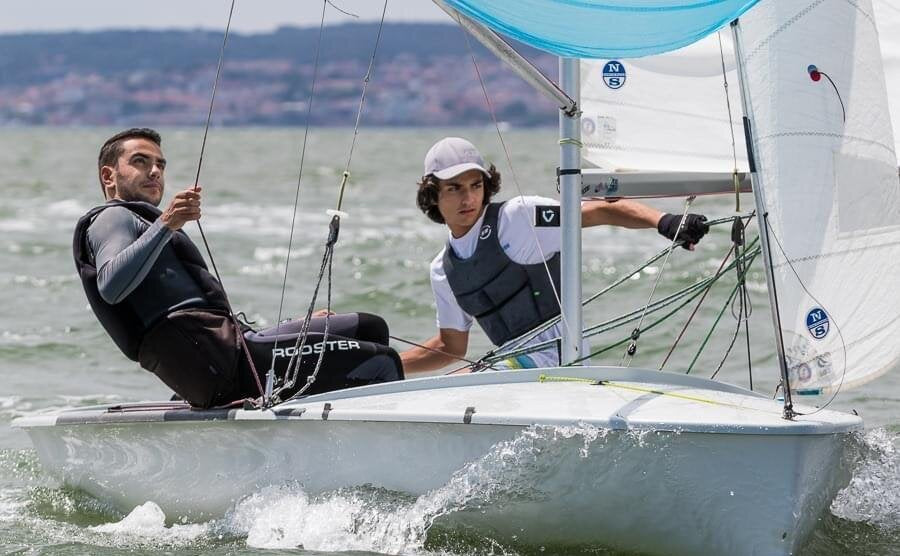
PÓDIO NORTH SAILS NA CLASSE 420
PÓDIO NORTH SAILS NA CLASSE 420
É com orgulho que anunciamos que no Campeonato de Portugal de Juniores e Absolutos da classe 420 o pódio foi North Sails.
📸 Luís Fráguas
Ricardo Alves e Tiago Alves são os novos Campeões Nacionais da Classe 420 e estão de Parabéns pelo seu fantástico desempenho , durante a regata que se realizou no início do mês, acumulando também o primeiro lugar também em Masculino.
Juntaram-se ao pódio da geral as equipas Manuel Fortunato/ Laura Pontes, que se classificaram em segundo lugar, seguidos da Mafalda Gonçalves/ Maria Pereira, que alcançaram o título de Campeãs Nacionais.
📸 Ingrid Fortunato
📸 Luís Fráguas
De realçar, ainda, que os velejadores Mário Soares/ Vasco Soares obtiveram o primeiro lugar na categoria Juniores.
Em resumo, velejadores que escolherem a North Sails, alcançaram os 1º, 2º e 3º lugares da Geral, 1º lugar Masculino, 1º lugar Feminino e 1º lugar Juniores.
A todos os nossos Parabéns!
Para mais informação sobre a gama de Velas North Sails para a Classe 420, contactem a vossa velaria nacional, através dos contactos que podem encontrar aqui.
READ MORE
READ MORE
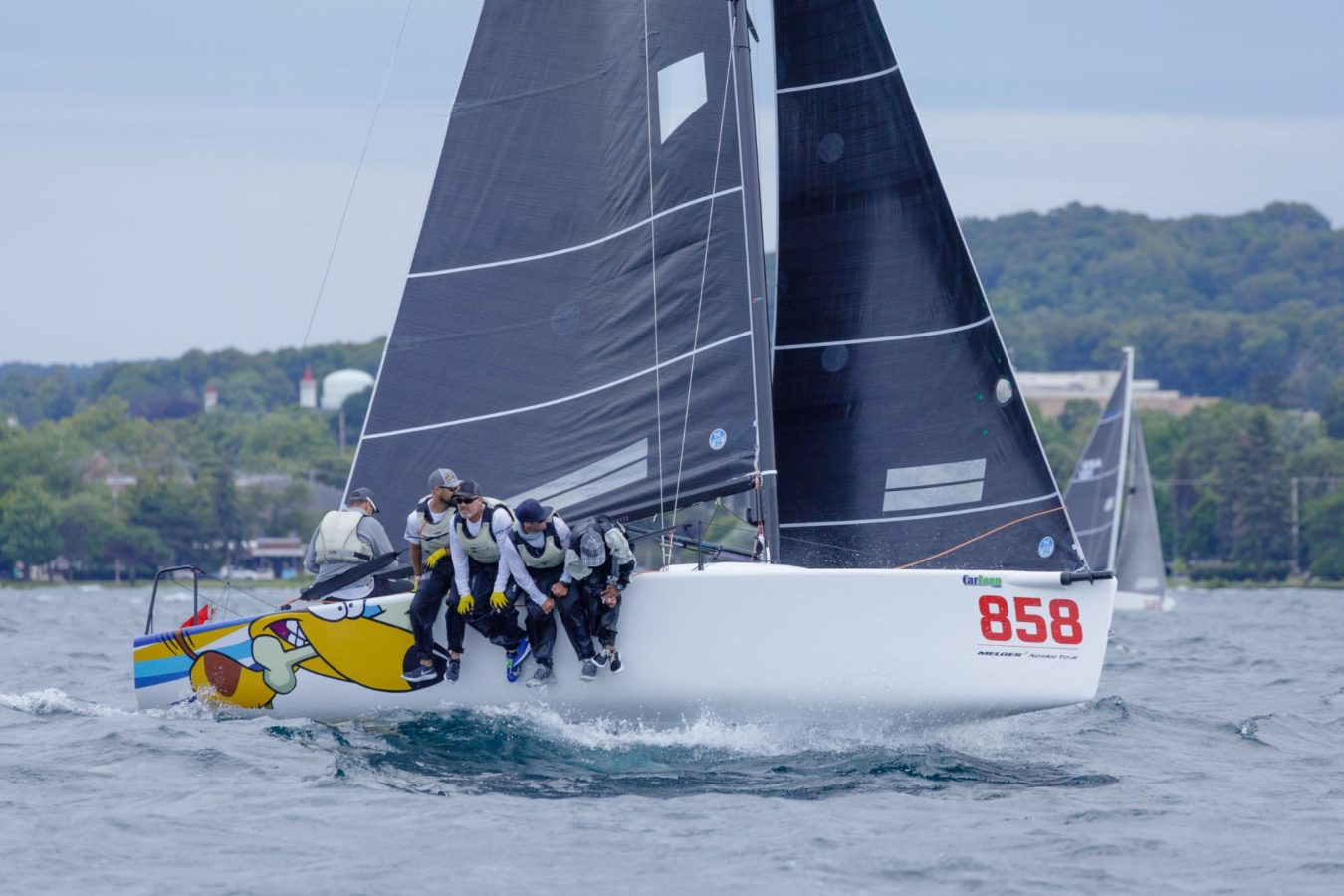
IN DEPTH WITH MELGES 24 CLASS LEADER JOHN BOWDEN
IN DEPTH WITH MELGES 24 CLASS LEADER JOHN BOWDEN
The North Sails Expert Shares Tips + Tricks And Much More
© IM4CA/©Bill Crawford, Harbor Pictures Company
John Bowden started sailing very young and was a competitive youth sailor in Texas where he grew up. He started working for a sailmaker at 16 in Austin, TX. He went to college at the College of Charleston graduating in 2004. John won the sloop nationals and was awarded the Robert H. Hobbs Sportsman of the Year award. He has won National Championships in the Melges 20, Melges 32, Lightning, Melges 24, Coronado 15, and J-80 classes. He won the world series in the Melges 20 class. Since joining the North Sails team in Charleston, John has been awarded the George Lockwood Trophy as one of the top sailors and contributors to the sport as a member of the Charleston Yacht Club. He gives us an inside glimpse to the Melgse 24 class uniqueness, what keeps him coming back and his top three tips for newcomers ahead of the Melges 24 Charleston Open in October.
Tell us about how you go involved in the Melges 24 class.
We started a small fleet here in Charleston and I began racing with a few of the local teams as they began to branch outside of Charleston. We had about 8 boats that were active for a short period of time. As those boats moved on I got back into the fleet when Travis Weisleder sold his Melges 20 after a successful campaign and bought his 3rd Melges 24. We are now onto our 3rd boat since then and have been racing the Lucky Dog Racing Team very hard.
What is it about the Melges 24 class that keeps you coming back?
The Melges 24 is one of the best boats ever built. We have really seen a resurgence in the fleet from its peak. Small local fleets are popping up again and we are seeing a great group of amateur owners jump back into this super competitive fleet.
What are your top 3 tips for someone just getting involved in the class?
Practice, Practice, Practice. Time in the boat is just the best way to get your boat going. Ask questions. There are a ton of people out there in the fleet that are always willing to help. We are seeing boat owner, sailmakers, and pro sailors now being one of the best resources for new people in the fleet. A once secretive fleet of sailors that used to keep all of their tricks to themselves are now more than happy to share information. Don’t be shy!!! Get to the big events. Local racing is great, especially in these tough times, but the experience you can get from going to these big events can be priceless. The best of the best are out racing somewhere almost every month. Do what you can to make it to these events. The practice starting, the tips from the best sailors, and the comradery with other sailors is something you just can’t get anywhere else.
What is the biggest thing you’ve learned during your time sailing Melges 24?
Everyone is working with the same gear. The class is so well established and the tuning, the boats are all very close. It really comes down to how hard you work. Sailing has come a long way from when I started racing. The top teams are really leaving it all out there on the water. The harder you work the better you will do.
How does it feel to be class leader?
I think it is a great opportunity. This is such an amazing class and such an amazing group of people I am very lucky to get a chance to work with everyone. North Sails has done a great job for so many years it is great to see us still pushing the envelope. The development of 3Di sails has been a challenge, but the results are speaking for themselves. It is nice to be the person to go to if you have questions or problems. I am the go between for the sailors and our production and design team. It really gives me a chance to work on a product and see how it helps our teams.
Looking ahead, what are your hopes for the Melges 24 class?
I am excited for this class. We have had to postpone the Worlds this year and much of the racing, but we are starting it right back up here in Charleston with the first in a series of regattas leading up to the World's being sailing in Charleston, SC. The fleet and the organizers have done an amazing job of planning for people of all makeups to get to race at the top levels in the World. The upcoming events are fast and furious leading up to the worlds. October in Charleston, November in Mobile, AL, December, January and March in Miami, FL and the Charleston Race Week as the leadup to the Worlds in Charleston just after race week. To learn more about North Sails product offering for Melges 24, see here.
READ MORE
READ MORE
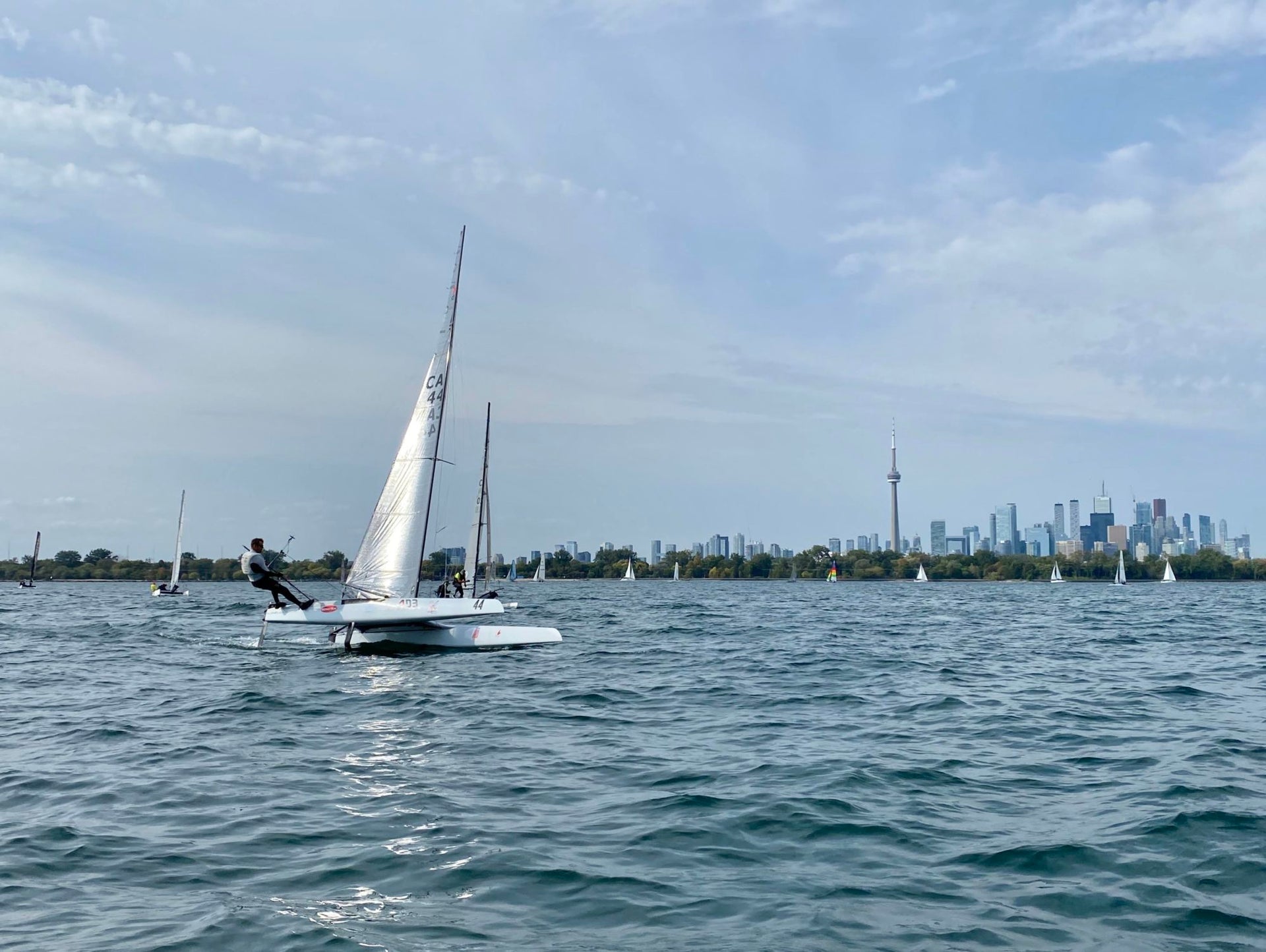
EVENT SPOTLIGHT: WATER CATS FALL REGATTA 2020
EVENT SPOTLIGHT: WATER CATS FALL REGATTA 2020
Safe & Successful Event For Cat Sailors
To many, 2020 has presented challenges unlike any in recent history. But the positive spirits and can-do attitude of cat sailors, sponsors and organizers at Water Rats Sailing Club contributed to another successful Regatta. Water Rats hosted the Water Cats Fall Regatta on September 26 & 27. Twenty-four (24) catamarans competed in light to medium air on the first day with strong breeze on the final day. The sun and the beautiful skyline of Toronto were shining along with all those who contributed to the event by supporting the sport. It revealed the remarkable passion, enthusiasm and love for sailing that is present in the sailing community in Toronto.
It is hard to find words to thank the large team of volunteers who dedicated their time and efforts who made this Regatta successful, Fogh Marine and North Sails taking the lead. A special thank you goes to Morten Fogh, Geoffrey Moore and Louisa Bobyk.
Huge thank you to Race Committee Maxim Newby, Jimmy Sabourin, Kevin Smith, Peter Eagar, Andrew Mahoney, Rahm De-Undergrad and David Chennels; Race Chairs Beata Sejane and Marvin Coulson; Communications Matthew Burpee and Ed Young; Results Dan Borg, Rahm De-Undergrad and Marty Vandenberg; Weekly race practice Jimmy Sabourin and Dan Borg; OHCC, JTown and Westwood Sailing Clubs for extra crash/pin boats; Jessica Lee, Michael Williamson, Kate McMurray, Dean Goodwin, Murray Kibler for awesome photos and videos; Benoit Friolet, Jessica Lee, Mike Doell and Ray Davies for terrific rescue/race support; Greg Brothers for purchasing and delivering 15 gallons of gas; and a very special shoutout to Robert Wessel for lending us his big cat to be used as a Committee Boat.
Thanks to everyone from near and far who came out to make this event a success, from Burlington Beach Catamaran Club, Westwood Sailing Club, Outer Harbour Centerboard Club, St. James Town Sailing Club, Toronto Multihull Cruising Club, Etobicoke Yacht Club, and Mississauga Sailing Club. Congrats to all winners and a special shout out to first in their fleets, Andrew Woods of Burlington Beach Catamaran Club in his foiling super cool A Class cat (Low Portsmouth), along with Andy Warwick and Mike McKnight of Etobicoke Yacht Club in their supercharged Hobie 16 (High Portsmouth).
READ MORE
READ MORE
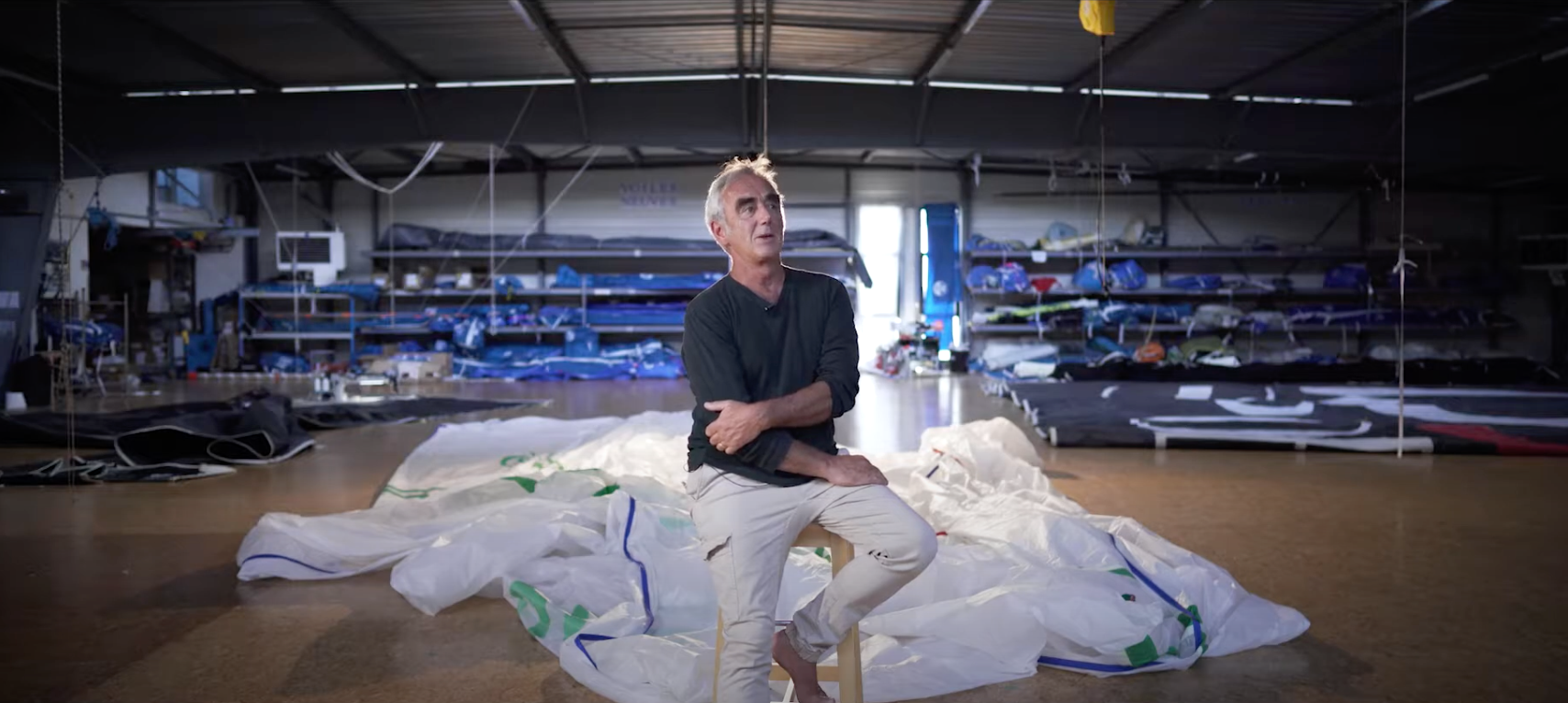
VENDÉE GLOBE 2020 VIDEO SERIES: EPISODE 1
VENDÉE GLOBE 2020 VIDEO SERIES: EPISODE 1
Introducing Loïck Peyron as the North Sails Narrator of a Six-Part Video Series in the Lead Up to the 2020 Race Start
The Vendée Globe was born in November 1989. It began as a daring challenge launched by a group of 13 sailors, including French navigator Loïck Peyron. For the skippers who participate, the lure of this race outweighs the risk of sailing non-stop, solo, and without assistance around the world. And for fans, we all gather every four years to be captivated by the next generation of IMOCAs, see who will reach the finish line and if we’re lucky, witness the setting of a new speed record.
Peyron joins North Sails to lend his voice as our narrator in a six-part video series. He offers his perspective on this legendary race by telling the story of the exceptional skippers who dare take on the challenge, the passion that drives them, and the quest for open-ocean adventure. Beyond, the modern Vendee features the emergence of women and international sailors, the ever-evolving technology of the IMOCA, not to mention the growing enthusiasm amongst spectators and all those who are passionate about this unrivaled competition.
Vendée Globe Special – Episode 1 – Thus was Born the Vendée Globe
With his impressive list of accomplishments, and collection of offshore miles, Loïck Peyron is regarded as one of the greatest French sailors. He took part in the first edition of the Vendée Globe, where he finished second. In this first episode, he recounts the history of the Vendée Globe through his eyes, from its origins to the present day, a race that has left an indelible mark in people’s minds.
READ MORE
READ MORE
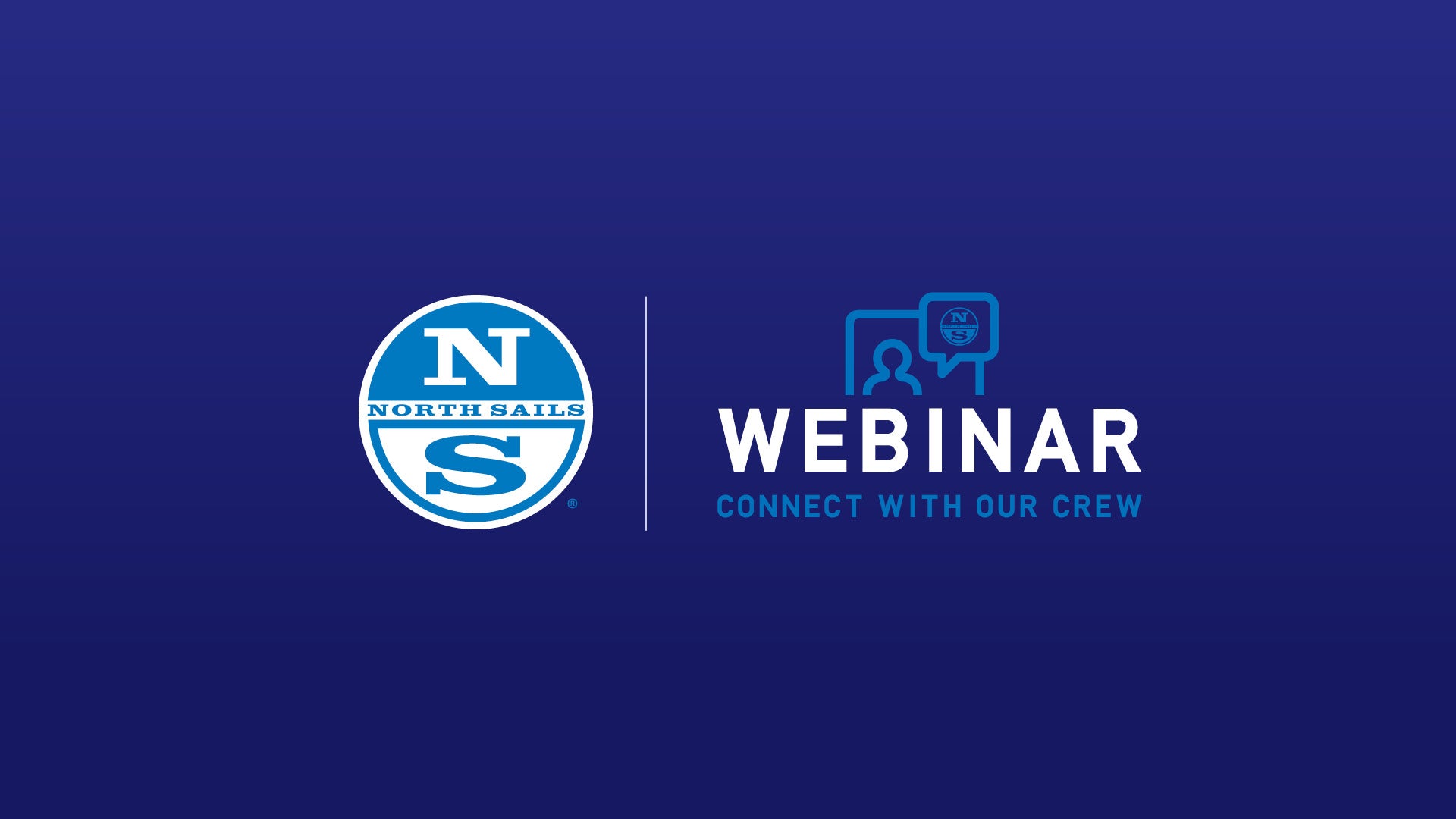
LET'S TALK MC SCOW | MASTERS DEBRIEF WITH MATT FISHER
LET’S TALK MC SCOW
2020 Masters Champion Matt Fisher Shares His Z-Max Tuning Tips
Informative webinar with 2020 MC Scow Masters Champion Matt Fisher and North Sails One Design experts Allan Terhune and Eric Doyle. Matt talks about his dominant win at the Masters in Iowa using the North Sails Z-MAX mainsail. He shares his experiences of his 12 year journey in the MC Scow Class, from his challenges as a class novice to becoming the 2020 Masters Champion.
“The North Z–Max mainsail is the only sail I have used since I have been sailing MCs. The Z-Max is easy to use, I follow the North Sails tuning guide and if I have any issues, it’s because I am over trimming.” – Matt Fisher
North Sails is the only manufacturer of the Z-Max mainsail that has won the 2019, 2017, 2016, 2105 and 2014 MC Scow Nationals.
It’s the exact same design that you have been winning with, that you know and you want. This proven design is only available from North Sails.
Shop MC Scow North Z-Max Results MC Scow Experts
Matt & Lisa winners of the 2020 MC Scow Masters powered by the North Sails Z-Max. 📸 Regatta Girl
READ MORE
READ MORE
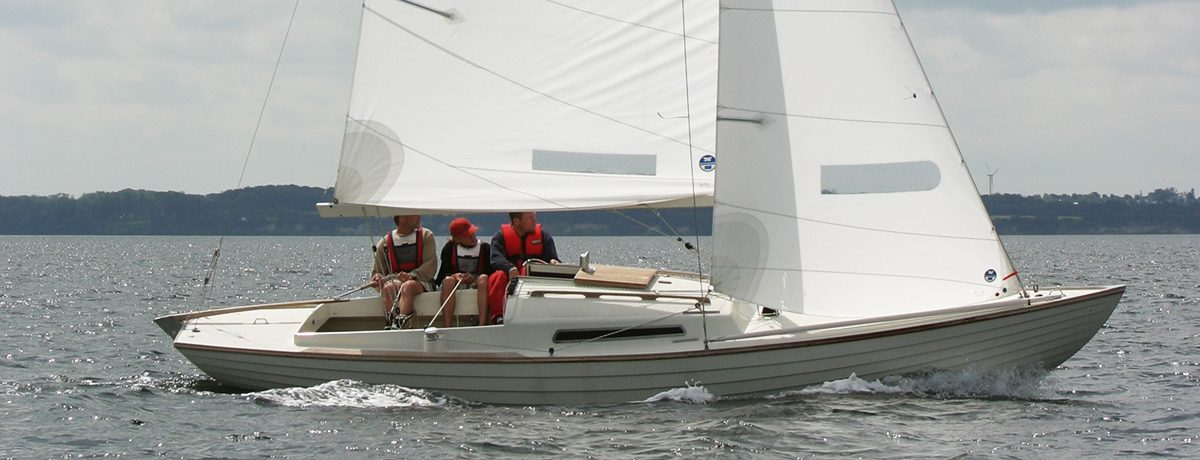
NORDISK FOLKEBÅD TUNING-GUIDE TIL TRÆMAST
NORDISK FOLKEÅD TUNING-GUIDE TIL TUNING-GUIDE TIL TRÆMAST
INTRODUKTION
Formålet med denne trimvejledning er at give vores Folkebåds kunder en standardiseret vejledning, samt bedst mulig udnyttelse af deres nye North Folkebådsejl.
Denne trimvejledning er udarbejdet af Søren Kæstel, Per Jørgensen og Theis Palm.
Følg vejledningen så nøjagtigt så muligt. Det vil altid være en god ide at eksperimentere på din egen båd, da mandskabets vægt, bådens balance, mastens beskaffenhed samt lokale forhold også vil have indflydelse på det optimale trim.
MASTETRIM
Masten på en folkebåd er nok det mest kritiske, da træets beskaffenhed er utrolig vigtig for mastens krumning og spændstighed. Nedenstående er de udbøjnings tal som vi anbefaler til en folkebåds mast, senere i denne vejledning giver vi en ide om hvor hårdt masten skal stå på agterkanten i mastehullet. Den ultimative bøjning er svær at definere, udbøjningen skal ligge mellem 10,5 cm til 14,5 cm, målt med 16 Kg, 4,8 meter fra toppen.
1. Kontroller at din mast står lige i båden. Dette gøres bedst ved at føre vanterne ind langs masten og afsætte et mærke ud for overkanten af det sorte mærke ved bomfæste – herefter måles til dækket hvor vant skruerne er befæstet – målet skal være ens I begge sider.
2. Mastens hældning måles på følgende måde – forstaget tages af ved dækket og føres ind langs masten. Wiren strækkes så meget som muligt – der afsættes et mærke ud for overkanten af det sorte mærke ved bomfæste. Forstaget sættes på plads – der måles nu 1,31 meter fra mærke til dæk målt langs forstaget.
3. Herefter skubbes mastefoden agter over til den den lige akkurat røre bagkanten af mastehullet. Hvis masten er stiv skal den stå forholdsvis hårdt på bagkanten og trykkes 22 mm agterover for at få masten til at krumme jævnt, hvorimod hvis masten ligger omkring 12,5 cm i udbøjning trykkes 16 mm, er masten blød 14,5 cm skal den kun lige berøre bagkanten af mastehullet.
4. Strutterne justeres ved at trække hårdt i hækstaget – kig op langs hulkilen og kontroller, at strut stagene er lige stram i begge sider. Hvis ikke justeres strut stagene til masten står lige. Strut stagene skal står forholdsvis løst i let vind, og i hård vind, hvor man i mellemluft strammer 2-3 omgange på den fælles vant skrue, det svare til at faconen i toppen af storsejlet ligger ca. 47% tilbage fra forliget. Det vigtigste er at masten krummer jævnt fra dæk til top, hvis strutten står for stramt krummer masten for meget i bunden og bliver for stiv i toppen, hvorimod hvis strutten står for løst krummer masten kun i toppen og masten forbliver stiv i bunden, den jævne krumning giver et pænt jævnt twist i storsejlets agterlig.
5. Sidevanterne – er med dette trim med til at kontrollere forstagets spænding da trykket på bag kanten af masten, i mastehullet er med til at presse masten fremover og hermed får forstaget til at stå løst. I let vind skal man sejle med et forstags-fald på ca.8 cm. dette gøres bedst ved at stramme sidevanterne lige meget under sejlads til de 8 cm. er opnået. Når vinden så frisker til mellemluft strammes 1½ omgang på sidevanterne og yderligere 1½ omgang i frisk vind, på denne måde strammes forstaget op under øget vindpres. På de bløde master bruges en 2 cm. tyk kile på bagkanten til at opnå samme virkning.
STORSEJLS TRIM
Storskødet er meget kritisk og små justeringer har stor betydning for højde og fart. Skøder man hårdt, lukker agterliget mere og giver større rorpres, men til gengæld mere højde. Dette trim kan anvendes i mellemluft på fladt vand, hvor man lige kan hænge båden ned. I let vind slækkes skødet således at den øverste ticklers flyver ret bagud. I hård vind skødes godt hjem og hækstaget hales indtil båden igen bliver let på roret uden at man mister højde. I forholds vis store bølger skal sejlet twiste mere, for at få så stort et styreområde til vinden som overhovet muligt, samtidigt giver det også bedre fart og hermed også højde.
Som tommelfingerregel trimmes den øverste sejlpind parallelt med bommen i stort set alle vindstyrker.
1. Udhal på bommen. Udhalet er også en vigtig trimfaktor. I let vind (0-2 m/s) skal sejlet være 3 cm fra sort mærke. I mellem vind (2-5 m/s) 1,5 cm fra sort mærke og over 5 m/s hales helt ud på mærke.
2. Cunningham. Undlad helt at bruge cunningham i let vind. I mellem vind hales kun så meget at rynkerne langs forliget forsvinder. Når vinden er over 7 m/s hales der hårdt for at medvirke til at åbne kappen og holde faconen fremme i sejlet.
3. Løjgangen. Det er en god ide at have to vogne på løjgangen, disse to vogne forbindes med to wire stropper af ca. 40 cm længde, til en blok hvor storskødet løber igennem, dette gør sejlads i let og mellem vind væsentligt nemmere. I let vind (0-3 m/s) skødes 15 – 20 cm. til luv. I mellem vind (3-6 m/s) sættes vognene på midten. I vindstyrker der over køres vognene mod læ, således at båden retter sig op og bliver let på roret.
4. Hækstaget. Hækstaget har to funktioner, At kontrollere dybden I storsejlet og hvor meget forstaget falder mod læ. Det vil sige, at et strammere hækstag betyder et fladere og mere åbent storsejl, mindre forstags fald og hermed også fladere fok. Vi har mærket vores hækstag op for hver 20 cm, så vi hurtigt kan komme tilbage til et godt trim og have båden veltrimmet lige efter mærke rundingerne.
5. Bom nedhal. Bom nedhalet bruges på kryds, til at krumme masten i hård vind og hermed åbne sejlet forneden, samtidigt
med at den holder bommen i niveau når storskødet bliver slækket i de hårde pust.
Brug aldrig bom nedhalet på kryds under 8 m/s og gør det med varsomhed, husk altid at slække til lænse position når der faldes af til slør for at undgå at bommen knækker. Bom nedhalet bruges ellers på følgende måde, hal til den øverste sejlpind står parallelt med bommen, både på halv vind og læns under alle vind forhold.
North Sails fokke er skåret til skødning både på ruftag og på dækket .Vi må dog anbefale at skøde på ruftag for at få bedre twist i agterliget og så stor spalte imellem storsejlet og fokken så muligt, man har også væsentligt bedre kontrol over fokken, jo kortere afstanden er fra skødbarm til blok, dette viser sig specielt i hård vind.
Med skødning på ruftag må det anbefales at have en vendeblok forrest på hænge bræt for at undgå at skødet kinker på spillet.
1. Skødepunkt. Skødevognens placering er kritisk for fokkens trim, men som udgangspunkt måles 2,65 meter fra pind boldt i forstag til centrum skødeblok (hvis der skødes på ruftaget).
Fokken skal luffe jævnt langs forliget dvs. at ticklers skal stå ens både i top og bund.
2. Fokkeskødet. Skødespænding – der skødes hjem så den midterste sejlpind er parallel med centerlinien i båden under de fleste forhold, med I det lette vindområde (0-2 m/s) twistes dog 2-3˚ mere. Hvis der er meget sø skødes 2-3 huller frem på skødeviseren for at få mere dybde og trækkraft (husk midterste sejlpind skal stadig være parallel med centerlinien i båden. I hård vind skødes 1-2 huller tilbage, med aldrig så at underliget bliver løst og begynder at blafre.
3. Faldspænding. Stræk aldrig faldet for hårdt, da faconen ellers kommer for langt frem. – Fokken er designet på denne måde – . Stræk kun lige så folderne ved løjerterne forsvinde. I let vind må der gerne være små folder ved løjerterne, dette giver det bedste profil.
Din kontakt hos North Sails er Theis Palm.
READ MORE
READ MORE
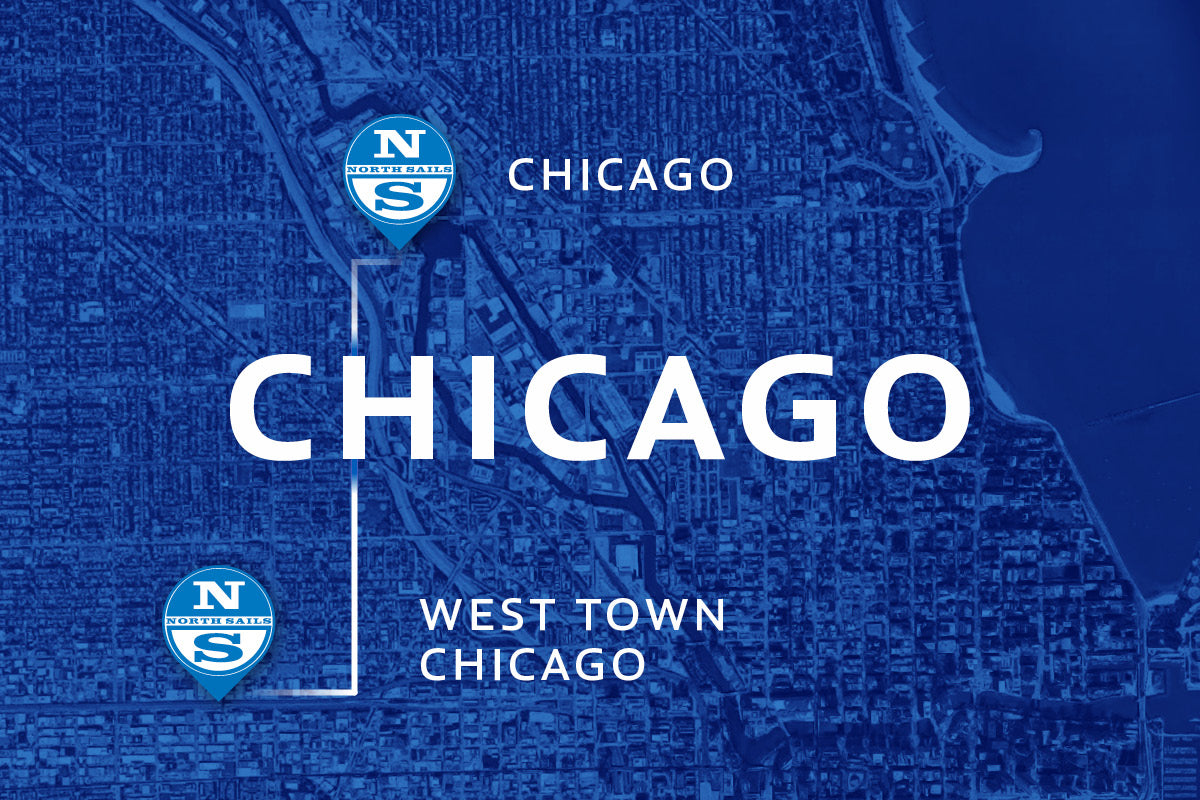
NORTH SAILS STRENGTHENS GREAT LAKES PRESENCE
NORTH SAILS STRENGTHENS GREAT LAKES PRESENCE
John Baxter + Christina Donnermeyer the Join North Sails Team in Chicago
North Sails is pleased to announce that John Baxter and Christina Donnermeyer have joined the Chicago loft team. Baxter, the former owner of Doyle Midwest, brings over three decades of sailmaking industry experience and consolidates a wealth of expertise and personnel under the North Sails banner. He will work closely with North veterans Perry Lewis, Keith Church, and Tom Pease to deliver world-class customer support and products to sailors in the Midwest region and beyond.
Bringing Baxter in the North Sails family is a strategic move for North Sails to expand their presence in the Great Lakes. A quintessential sales expert, Baxter prides himself on combining an in-depth understanding of the latest technology with a deep appreciation for individualized customer service. With North Sails, he now has the ability to tap into the brand’s patented in-house software programs and the full spectrum of world-leading products to ensure local customers get the most out of their sailing experience.
Commenting on the merger, longtime North expert Perry Lewis said: “Well-known and respected amongst clients and competitors, Baxter is a true industry professional. He is a valuable addition to our Midwest team. We’re all looking forward to having his local knowledge and experience to offer our clients, as well as his industry insights to help us strengthen our local support.”
Baxter has sailed in some of the world’s most prestigious races including the Montego Bay Race, two Rolex Sydney Hobart Races, multiple SORCs, Key West Race Week, RORCs Admiral Cup, St Barths Bucket, and much more. He has 35 Chicago Mac and 20 Port Huron Race races under his belt. His wide knowledge of multiple classes, make him a valuable addition to the North Sails Chicago team.
Baxter is now integrated into and supported by the global network of 110 North Sails sales and service lofts. Commenting on joining the team: “Perry Lewis and Tom Pease have been with North Sails forever and I’m privileged to be affiliated with the North Sails family. Technology and sailing are moving forward at a very rapid pace and North Sails will allow me to provide all of my customers with a level up in service and sails.”
Commenting on this next chapter, Baxter shared: “I come from a sailing family and I am proud to now be a part of North Sails! I am most excited about working with a great group of people. It’s a lot more impressive than I ever imagined.”
Baxter will continue to be supported by his long-time office manager Christina Donnermeyer who will also be joining North Sails. Her experience in customer service, running a sail loft, and regatta services will be invaluable to the local team.
North Sails will have two locations operational in Chicago through the end of 2020. Customers can drop sails off at Baxter’s current location or the current North Sails Chicago location at 1665 N. Elston Ave.
The expanded North Sails team in Chicago is ready to assist you with all your sail care needs. To learn more about the North Sails Chicago team and loft, please contact us at 773-489-1308.
READ MORE
READ MORE
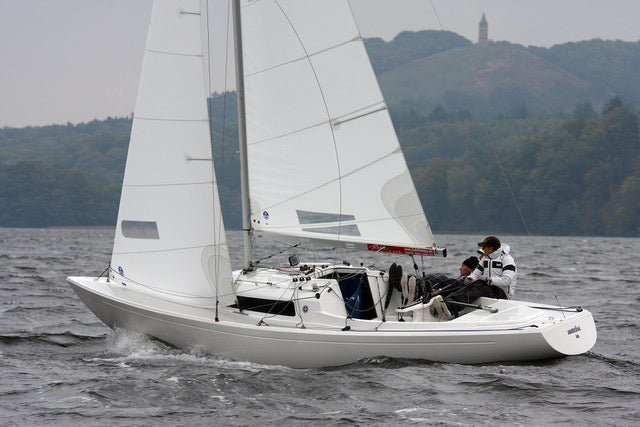
H-BÅD TUNING GUIDE
H-BÅD TUNING GUIDE
INTRODUKTION
Formålet med denne tuning guide er at give vores H-Båds kunder nogle retningslinjer i, hvordan man får størst mulig udbytte af sine nye North sejl. Tuning guiden er udarbejdet af Theis Palm.
Følg vejledningen så nøjagtigt som muligt. Det er dog altid en god idé at eksperimentere på sin egen båd, da mandskabets vægt, bådens balance, mastens beskaffenhed samt lokale forhold også kan have indflydelse på det absolut optimale trim. Før masten rejses skal nogle meget vigtige mål og afmærkninger følges for at kunne bruge denne trimguide.
MASTETRIM
1. Salingshornenes længde og vinkel er vigtig for storsejlets facon, da disse er med til at kontrollere mastens krumning og dermed også forstagets spænding. Længden af salingshornene måles fra siden af masten til wiren der er placeret i salingshornet, målet er 83 cm, målet tages langs midten af salingshornet. Salingshornenes vinkel måles ved at binde en tynd snor fra det ene overvant til det andet og her efter måles afstanden fra snoren og ned til bagkanten af masten den skal være 19 cm. Ved samme lejlighed afsættes to tapemærker på henholdsvis 44 cm og 55 cm målt fra siden af masten. Disse mærker bruges senere til trim af fokken.
2. Herefter holdes top-vanter og forstag ind langs masten og strækkes så meget som muligt. Der sættes et mærke på alle tre wirer, ud for overkanten af det sorte ved bom-fæste. Disse tre mærker er nu udgangspunkt for mastens hældning og om masten står lige i båden. Masten rejses.
3. Mastefoden placeres således, at afstanden fra centrum af forstagets pin-bolt til forkant mast er 2,42 m.
4. Kontroller at afstanden fra overkanten af det sorte mærke ved bom-fæste til dæk målt på siden af masten er 54,8 cm. Differencen skal korrigeres på det mål på forstaget som følger.
5. Mastens hældning bestemmes således, at afstanden fra det afsatte mærke på forstaget til dækket målt parallelt med forstaget til dækket er 1,37 m.
6. Kontroller nu – når den korrekte mastehældning er konstateret – at masten hviler på hele sin trædeflade på mastens fod. I modsat fald vil rig trykket blive ukonstant og forstaget hermed uroligt.
7. Mærkerne på overvanterne bruges til at kontrollere at masten står lige i båden ved at måle fra mærke til dæk i begge sider. Dette er mere præcist end at måle fra mastetoppen.
8. Riggens spænding er svær at definere, da ikke alle er i besiddelse af den samme rig-måler. Til denne vejledning har vi anvendt en Loose Gauge type PT-1 M, hvor vi har følgende mål:
9. Når undervant spændingen er sat, kontrolleres om masten står lige. Tallene på undervanter er kun en guideline, som er erfaringer fra vores egen båd. Det er vigtigt at masten står lige op til 10 m/sek. Herefter strammes undervanterne til masten falder 5-10 cm til læ ved fokkegodset alt efter mandskabets vægt.
STORSEJL
1. TRIM AF STORSEJL: Storskødet er meget kritisk og små justeringer har stor betydning for højde og fart. Skøder man hårdt, lukker agterliget mere og giver større rorpres, men til gengæld mere højde. Dette trim kan anvendes i mellemluft på fladt vand, så længe man kan hænge båden ned. I let vind slækkes skødet således at ticklers ved den øverste sejlpind flyver ret bagud. I hård vind skødes godt hjem, og hækstaget hales, indtil båden igen bliver let på roret, uden at man mister højde. I forholdsvis store bølger skal sejlet twiste mere for at få så stort et styreområde til vinden som overhovedet muligt. Samtidigt giver det også bedre fart og hermed også højde. Som tommelfingerregel trimmes den bagerste halvdel på den øverste sejlpind parallelt med bommen i stort set alle vindstyrker.
2. UDHAL PÅ BOM. Udhalet er en anden vigtig trim faktor. I let vind (0-2 m/sek.) skal sejlet være 3 cm fra sort mærke. I mellemvind (2-5 m/sek.) 1,5 cm fra sort mærke og over 5 m/sek. hales helt ud på mærke.
3. CUNNINGHAM. Undlad helt at bruge cunningham i let vind. I mellem vind hales kun så meget at rynkerne langs forliget forsvinder. Når vinden er over 7 m/sek. hales der hårdt for at medvirke til at åbne kappen og holde faconen fremme i sejlet.
4. LØJGANGEN. Justering af løjgangen påvirker rorpresset væsentligt og bruges alt efter mandskabets vægt. Løjgangsvognen justeres således, at bommen, så længe som overhovedet muligt, er på centerlinien af båden, altså til luv (dette for at bevare så stor vindkanal mellem storsejl og fok som overhovedet muligt og for at kunne sejle maximal højde). Når vinden så frisker, og hækstaget er halet maksimalt køres løjgangen til læ, indtil båden er i balance og let på roret.
5. HÆKSTAGET. Hækstaget har to funktioner: At kontrollere dybden i storsejlet, og hvor meget forstaget falder mod læ. Det vil sige, at et strammere hækstag betyder et fladere og mere åbent storsejl, mindre forstags sag og hermed også fladere fok. Vi har mærket vores hækstag op for hver 5 cm, så vi hurtigt kan komme tilbage til et godt trim og have båden veltrimmet lige efter mærkerundingerne.
6. BOMNEDHAL. Bomnedhalet bruges på kryds til at krumme masten i hård vind og hermed åbne sejlet forneden, samtidigt med at det holder bommen i niveau, når storskødet bliver slækket i de hårde pust. Brug aldrig bomnedhalet på kryds under 8 m/sek. og gør det med varsomhed. Husk altid at slække til lænseposition, når der faldes af til slør, for at undgå at bommen knækker.
Bomnedhalet bruges ellers på følgende måde: Hal til den bagerste halvdel af den øverste sejlpind står parallelt med bommen; både på halv vind og læns, under alle vind forhold.
FOK
1. SKØDEPUNKT. Skødevognens placering er kritisk for fokkens trim. Som udgangspunkt måles 2,88 m fra pin-bolten i forstag til centrum af skødeblokken. Fokken skal luffe jævnt langs forliget; det vil sige, at ticklers skal stå ens både i top og bund. Hvis der er meget sø og over 3 m/s, skødes 1 hul frem på skødeviseren, og under 2 m/s skødes helt op til 5 huller frem på skødeviseren.
2. SKØDESPÆNDING. Her bruges de afsatte mærker på salingshornene. I vindstyrker under 3 m/s skødes til yderste mærke (54 cm). Over 3 m/s skødes til inderste mærke (44 cm).
3. FALDSPÆNDING. Stræk aldrig faldet for hårdt, da faconen ellers kommer for langt frem. Stræk kun lige så folderne ved løjerterne forsvinder. I let vind må der gerne være små folder ved løjerterne, idet faconen i fokken derved flyttes lidt bagud og dybden øges en smule, og dette giver det bedste profil.
SPILER
Spilerstagens fæste på masten bør sidde i en højde af 1,50 m over ruffet. Stagehøjden justeres under de fleste forhold således, at den står vandret. Derved opnås den størst effektive længde af spilerstagen og det størst mulige projicerede areal til vinden. Vores spiler er designet hertil.
I let vind justeres stagehøjden således, at skødebarmene på spileren flyver lige højt for at få den bedste indfaldsvinkel på det luv sidelig, samtidig med at det læ sidelig er maximalt åbent.
I vindstyrker over 7 m/s sættes læ barberhal for at hindre spileren i at blive for levende. På skæring i hård luft må spilerstagen under ingen omstændigheder komme nærmere til forstaget end 60 cm for at forhindre, at båden kommer ud af kontrol og skærer op i pustene. Hvis du har spørgsmål vedrørende trim, så kontakt Theis Palm.
God fornøjelse på vandet!
READ MORE
READ MORE
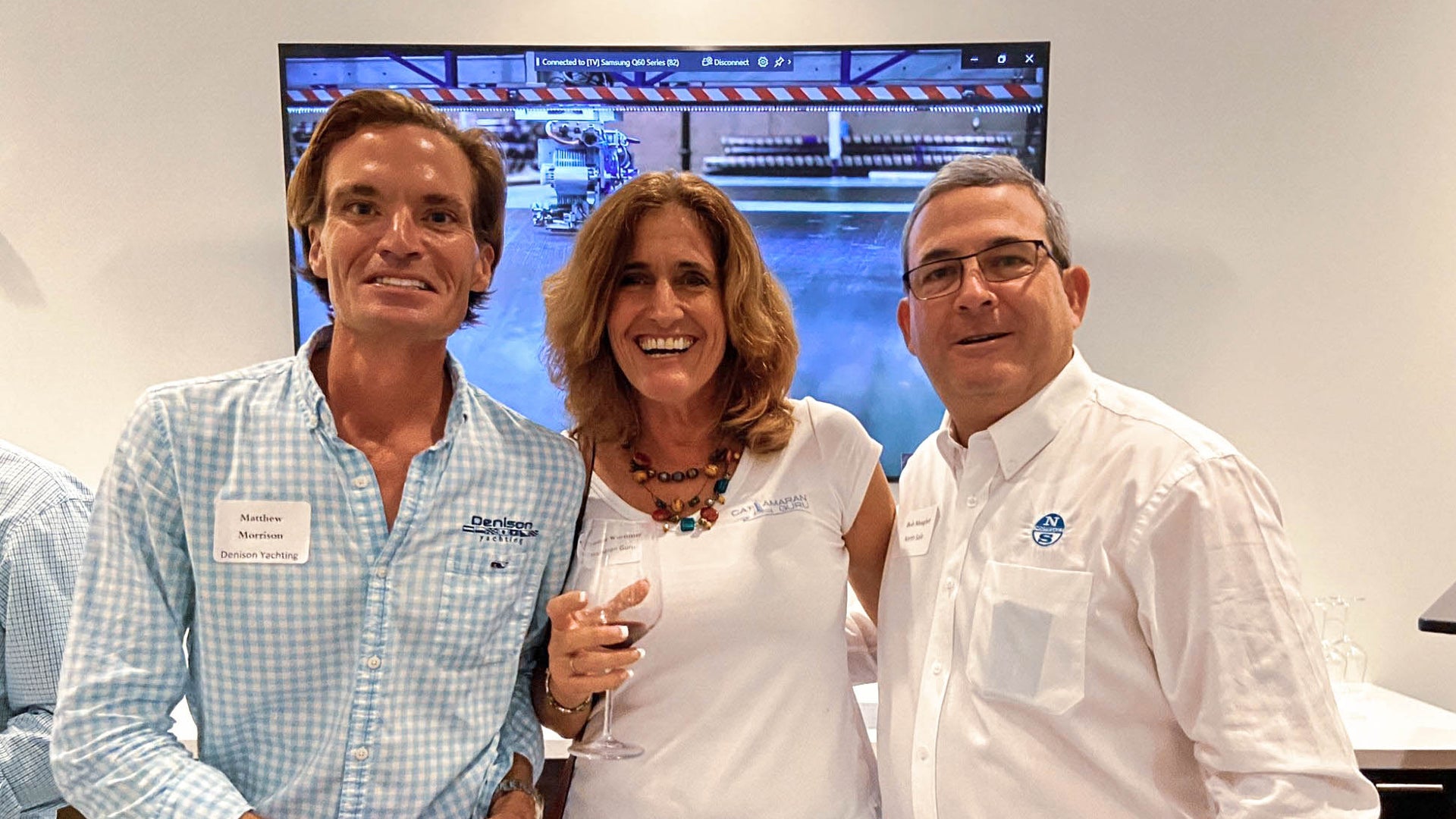
FORT LAUDERDALE SAILING INDUSTRY GATHERS
FORT LAUDERDALE SAILING INDUSTRY GATHERS
North Sails and Maz Ocean Sponsor Meet and Greet
Key players in the Fort Lauderdale sailing industry gathered Thursday night for a fun meet-and-greet hosted by North Sails and Maz Ocean. Representatives from area brokerages, rigging companies, and yacht service companies joined at the newly-renovated Lauderdale Yacht Club to swap stories and learn about new developments affecting sailors. “It’s important to get the players together every once in a while,” noted North Sails’ Bob Meagher. “A good team serves sailors better and keeps them coming back to Fort Lauderdale.” Craig Allison, owner of Maz Ocean, echoed the sentiment.
“The more we know each other, the easier it is to work together on any project.”
Meagher opened the evening with a welcome and short explanation of North Sails 3Di performance cruising products, “ideal for premiere multihulls and monohulls in Florida and the Caribbean.” Then Maz Ocean’s Alex Hill briefly summarized his company’s focus on internet connectivity and off-grid power solutions for cruising owner-operators. Maz Ocean specializes in the fields of integrated marine charging systems and electrical, navigation electronics, satellite TV and mobile internet connectivity, systems monitoring and vessel security and marine systems for sail and power yachts. Offices are located at Harbour Towne Marina in Dania Beach, and the company services vessels in Broward, Miami-Dade, and Palm Beach counties. North Sails is the world’s largest and most advanced sailmaker, with 150 locations and 2,000 people worldwide serving cruising and racing sailors of all kinds. North Sails Ft. Lauderdale leverages this global expertise to serve cruising, racing, and superyacht customers up and down the east coast of Florida. The event marks the first in a series of industry meet and greets led by North Sails designed to foster greater cooperation among those serving sailors in South Florida.
READ MORE
READ MORE
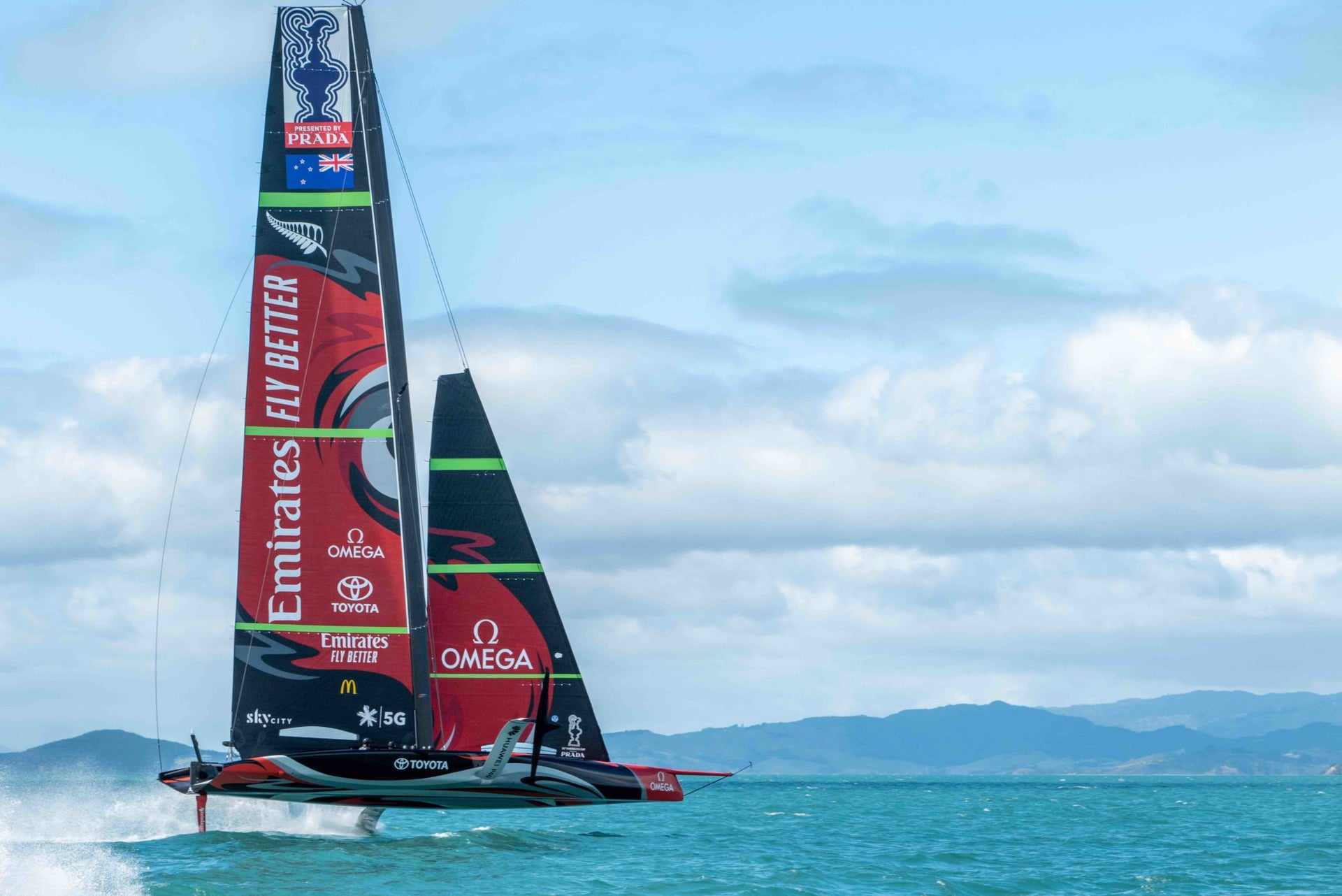
FOILING IS THE NEW FRONTIER
Many of today’s flying creations are conceptualized as pure foiling boats, which means they don’t have restrictions that impede the designer’s vision of the best way to foil. The evolution is dramatic, as with things like foiling kiteboards, Moths, and even the revamped AC50’s (now called F50’s) used in the SailGP circuit.
READ MORE
READ MORE
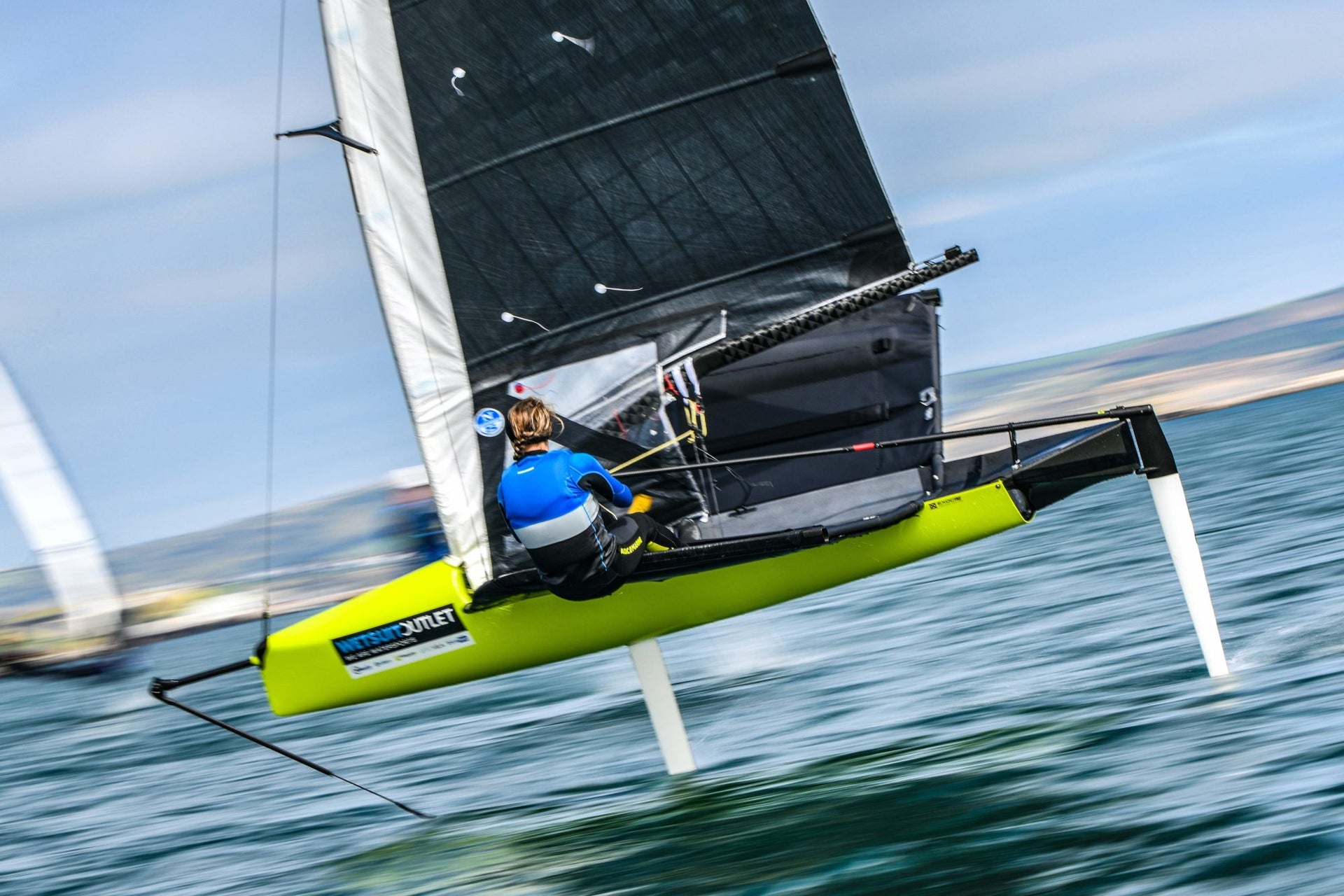
FORCE OF NATURE: JOSIE GLIDDON
FORCE OF NATURE: JOSIE GLIDDON
Josie Gliddon Works for North Sails as an Accountant by Day, But On the Weekends, She’s a Powerhouse Paving the Way in the Moth Class.
On the starting line with some of the top sailors in the world, Josie Gliddon is making a name for herself in the Moth class, and encouraging other women to join her on the racecourse. During the week, you can find Josie at the Gosport, UK loft in the accounting department. We caught up with Josie at Moth UK Nationals to talk to her about her career at North Sails, trialing new Moth sails and her time on the water. Watch the video to learn.
READ MORE
READ MORE
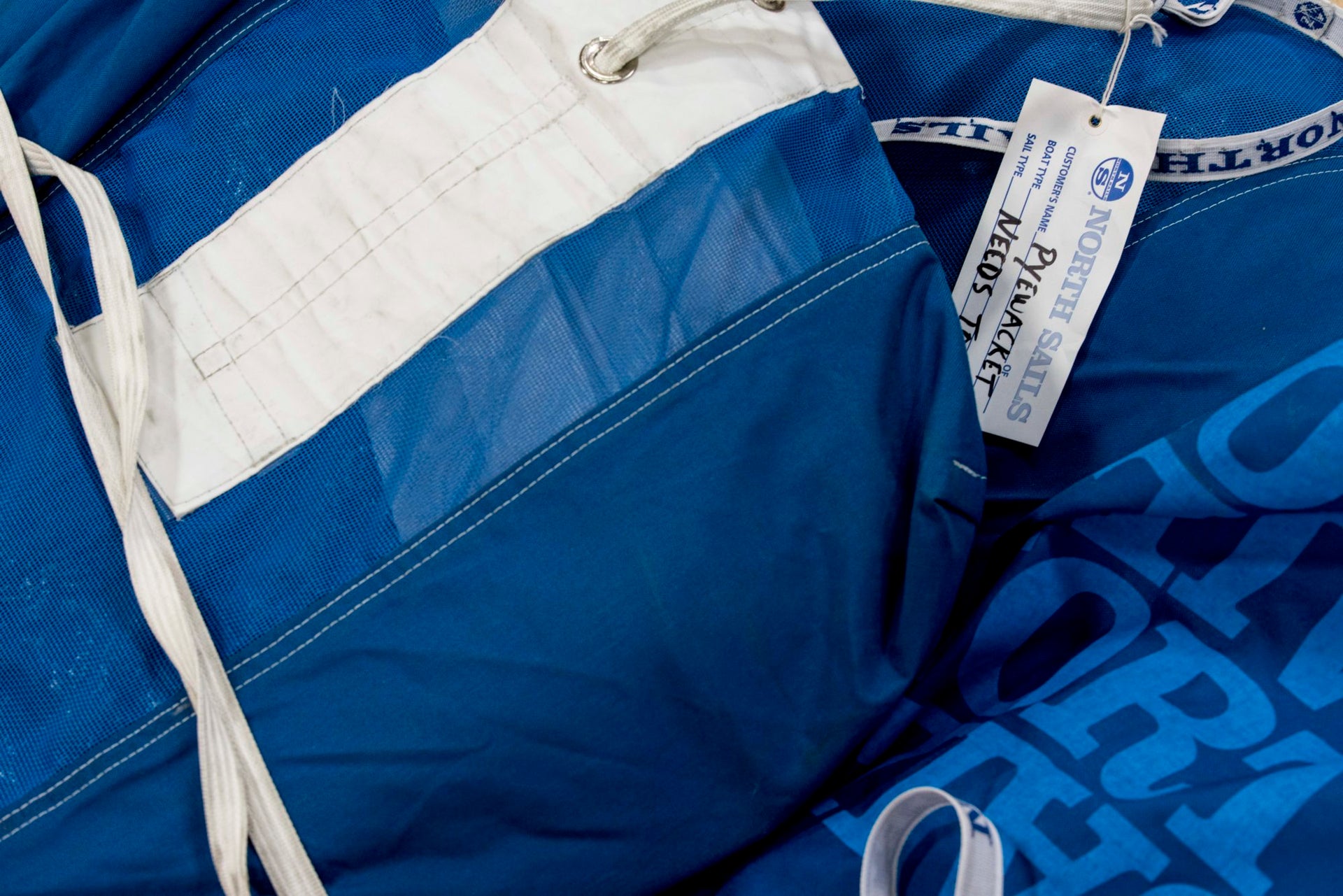
PRÉVOYEZ VOTRE HIVERNAGE
CONTRÔLE GRATUIT EN PRÉVOYANT VOTRE HIVERNAGE
La fin de saison approche, il est temps de prendre contact avec nos experts !
Faire un bilan de votre inventaire de voiles, dresser la liste des travaux d’hiver à effectuer, planifier le stockage pour l'hiver et la mise à bord au printemps prochain : nous sommes là pour vous ! Nos services hivernaux à la carte sont à votre disposition pour prendre soin de vos voiles et augmenter leur longévité. Pour toutes les marques de voiles, nous vous proposons 2 options : 1) un contrôle complet "Certified Service" gratuit de vos voiles, quelle que soit la marque. Pour cela il suffit de les amener à la voilerie (en les déposant 24/24 dans notre SAS sécurisé à l’entrée de la voilerie), ou auprès d'un revendeur North Sails certifié. Liste disponible ici. 2) un forfait premium comprenant l'enlèvement, le contrôle complet "Certified Service", le stockage durant tout l'hiver, et la mise à bord au printemps : vous ne vous souciez de rien, on s'occupe de tout ! Qu'est-ce qu'un contrôle complet "Certified Service" ? Apprenez-en plus. Appelez-nous au 022 782 32 22 pour avoir plus d’infos ou prendre rendez-vous avec l'un de nos experts.
READ MORE
READ MORE
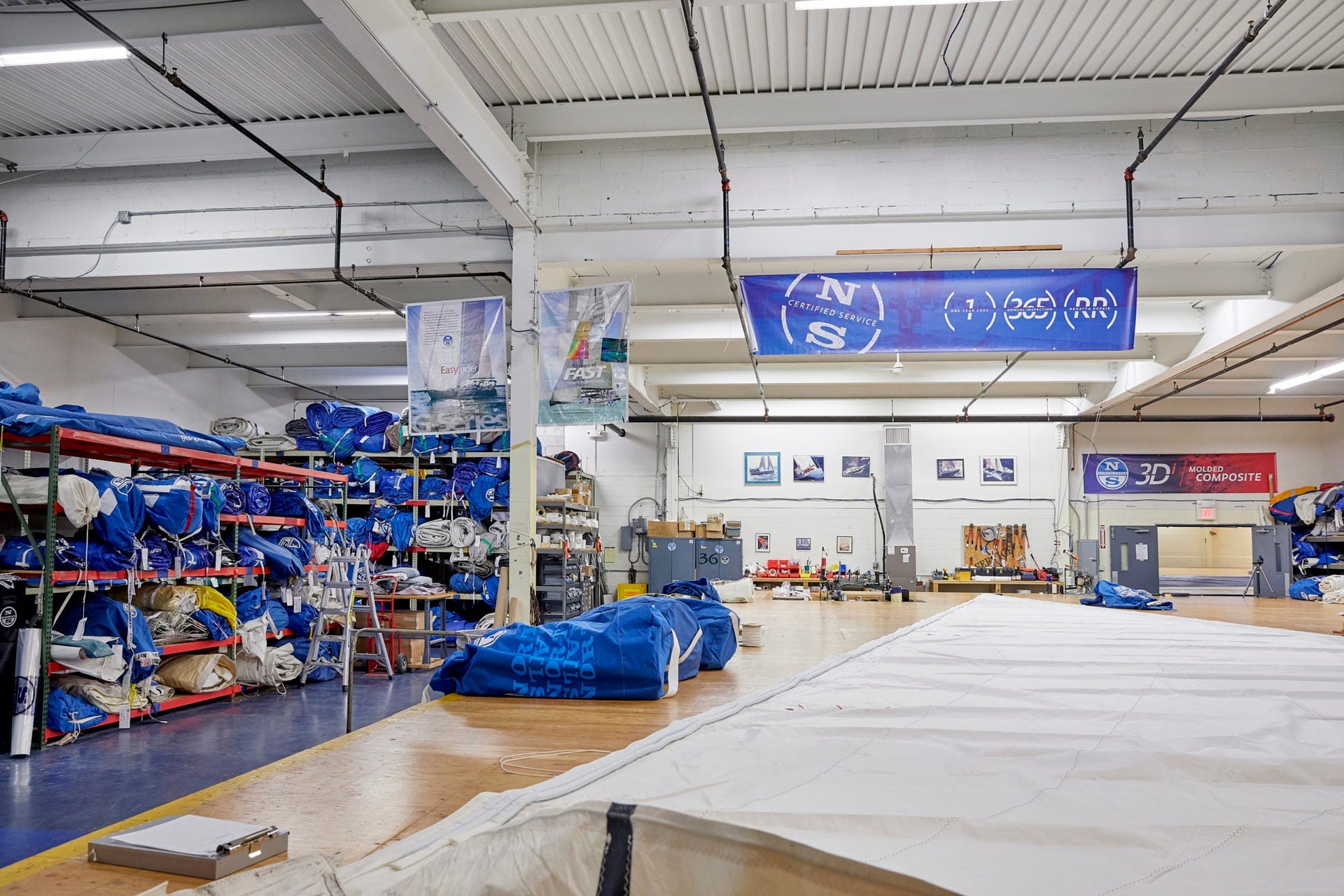
PUTTING AWAY YOUR TOYS
PUTTING AWAY YOUR TOYS
End of Season Storage and Sail Care Is Key to Prolonging Sail Life
North Sails Expert Tom Davis is particular about sail storage. He’s shared his best tips below to ensure your sails remain in top shape for next season.
Given how strange 2020 has been in many respects, sailing has, fortunately, turned out to be an ideal activity in the great outdoors. While the way many of us have put our boats to use in 2020 has differed from prior years, sailors have been able to spend lots of time under sail – perhaps even getting in more sailing days than usual.
For those living in areas where sailing has a defined season due to the approaching winter months, properly buttoning up the boat and equipment is a routine either underway or about to get started. Ensuring it is done right is critical for an effortless restart a few months from now when warmer weather returns.
While by no means intended to be an exhaustive list, here are a few tips based on personal experience to keep in mind when preparing to store your sails.
Dry
If nothing else (and as you’ll see below, there is plenty more to be done), your sails must be scrupulously dry before you put them away. That’s true of short-term storage (between sailing days during the season) and becomes essential when storing for the longer term. Why?
Moisture will encourage mildew growth, causing ugly dark stains on your sails.
Moisture will promote dye migration of colors in spinnakers, causing discoloration.
Neither of these bad outcomes is covered by sailmaker’s or sailcloth manufacturer’s warranties. After-the-fact cleaning will rarely remove all mildew staining, and cleaning will do nothing to undo dye bleeding in a spinnaker.
Mildew and dye migration are unsightly, but they don’t significantly reduce sail performance. Where long term moisture exposure will harm more than just the look of your sails is damage to adhesives, impregnations, and coatings on-and-in the sail material. Moisture hydrolyzes the components of sailcloth that keep your sails flying like foils and maintaining zero porosity. Hydro is water; Lysis is destruction. Enough said, right?
Clean
Is there any part of your boat that is well served by being dirty? Probably not. Dirt certainly damages sail material – sometimes through chemical interaction, sometimes by mechanical action. For example, dry salt crystals embedded in cloth act like tiny internal files, sawing away on fibers and films, clean sails will last longer and perform better, particularly as the hours of use increase.
So, how do you clean sails properly and effectively? For fundamental care, sail materials will handle a combination of water with a bit of detergent, some very gentle scrubbing by hand or soft brush, and liberal rinsing with fresh water. And as noted above, thorough drying after washing is essential.
Where it gets tricky is when more aggressive measures are needed to remove stains. Some fiber/film/resin types are quite robust and will accept exposure to reactive chemistry and more vigorous handling. Other materials can be very susceptible to damage from specific exposures. It’s complicated! Eliminating a grease stain from woven dacron is very different from removing a rust stain on a cruising laminate or mitigating mildew in a high modulus material. I suggest using a well-established sailing industry professional to clean beyond the basic soap/water/rinse/dry process (sailmaker, sail cleaning agency). A web search for sail cleaning tips and contacts is a good place to start, whether planning to DIY or sending your sails to a professional.
A few cardinal rules to remember (but far from everything you need to know before proceeding):
Be super careful with bleach. Some plastics have a high tolerance for bleach (polyester, aka dacron), while others are destroyed immediately by contact with small amounts (bleach is deadly to aramid fibers and nylon, among others).
Be wary of any cleaning agent other than mild detergent in a low concentration. Sometimes rust removers, “oxy” cleaners, and the like will do the intended job nicely. Still, when these are not suited to the cleaned material, disaster can strike quickly (and expensively).
“Race” sails can be cleaned with a simple water-rinse and dry.
Never rinse a nylon spinnaker in a swimming pool (you’d be surprised how often this happens!).
Once upwind sails are clean and dry, some products can be spray applied to help keep them that way – McLube Sailkote is a favorite of North Sails. Applications like these are best left to specialists, in my opinion.
📸 Michael Egan / Egan Images
Repair
A clean sail is undoubtedly nice to have – but not much use if the sail requires repair to be fully functional. Getting a needed repair completed before storage for the off-season is the right thing to do. That sounds a bit like “floss every day” or “avoid carbs”: easy to say, not so easy to do. But it will pay off (same with flossing and limiting carbs, of course). Sail washing does present an excellent opportunity to inspect and identify needed repair, whether you do the cleaning yourself or contract these services with a sailmaker or sail cleaning specialist.
Isolate
I’ve seen many examples of damage to stored sails inflicted by mice, squirrels, and raccoons. Where I live in Connecticut, I’m convinced that we’re never going to win that war by eliminating these creatures (our always stocked bird feeders aren’t helping). So, the next best thing is to keep the little devils out of your sail bags. That starts with clean and dry sails. Don’t leave salt on your sails or their bags (this is a good time to soak away salt and crud on the zippers and zipper cars of turtle bags). If you flake and bag your sails on your lawn, make sure there’s no leaves or grass in the folded sails. Store your sails in a place where small animals cannot reach them. Spinnakers are particularly attractive to rodents as it’s a meal and good nesting material. A few years ago, I started hanging my (clean, dry) spinnakers from lines attached to the ceiling rafters in my garage rather than leaving them on a shelf or the floor. So far, so good.
For questions about sail storage, reach out to your local loft!
📸 Urban Haglin
READ MORE
READ MORE
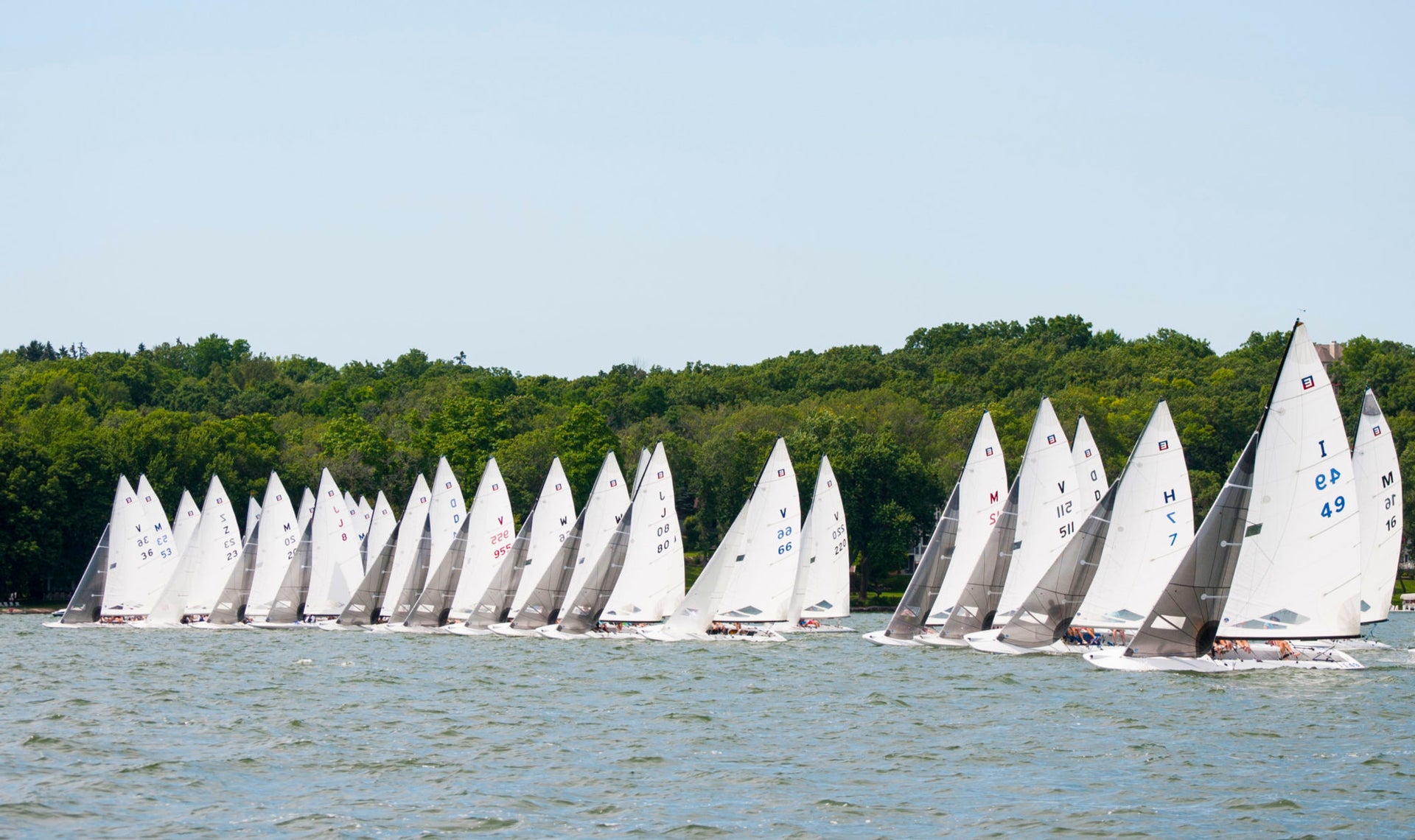
NORTH SAILS CONTINUES THEIR SUPPORT OF SCOW ONE DESIGN CLASSES
NORTH SAILS CONTINUES THEIR SUPPORT OF SCOW ONE DESIGN CLASSES
Providing Users with Championship-Winning Sails that have Dominated Scow Classes for Decades
📸 Hannah Lee Noll
As you may know, North Sails and Melges Boatworks (North Sails Zenda) have worked in conjunction in the past to provide sails and service to the Scow fleets across the U.S. We are writing to let you know that while Melges Boatworks has decided to change tacks and represent a different sail brand, we remain committed to providing top level performance to our Scow customers. North Sails views this as an opportunity to raise the bar in terms of our service, accessibility, and commitment to the Scow Fleets. North Sails owns all of the current winning designs you have become accustomed to.
We have been manufacturing and designing championship winning scow sails for over forty years and look forward to doing so for forty more. The North Sails One Design team has a long tradition of serving one design fleets all over the country and we look forward to working with you! Our network of local one design experts and dealers are available to help you get the most out of your sails so you can reach your goals whether it is an informal evening race, or the Class Championship.
We will continue to develop and sell the North Scow sail models that you have been using to win all the major Scow Championships, the same sails that you have learned to trim and tune. The sails with the quality and consistency that you expect from a North Sails product. As always, North Sails stands behind our products and we take pride in developing and delivering the fastest sails available.
Please feel free to reach out to us or anyone on the North team if you have any questions. We are excited to open up the entire North Sails team to work with you directly on your scow program.
Our team is looking forward to seeing you on the water soon.
A Scow C Scow E Scow MC Scow X Boat
READ MORE
READ MORE
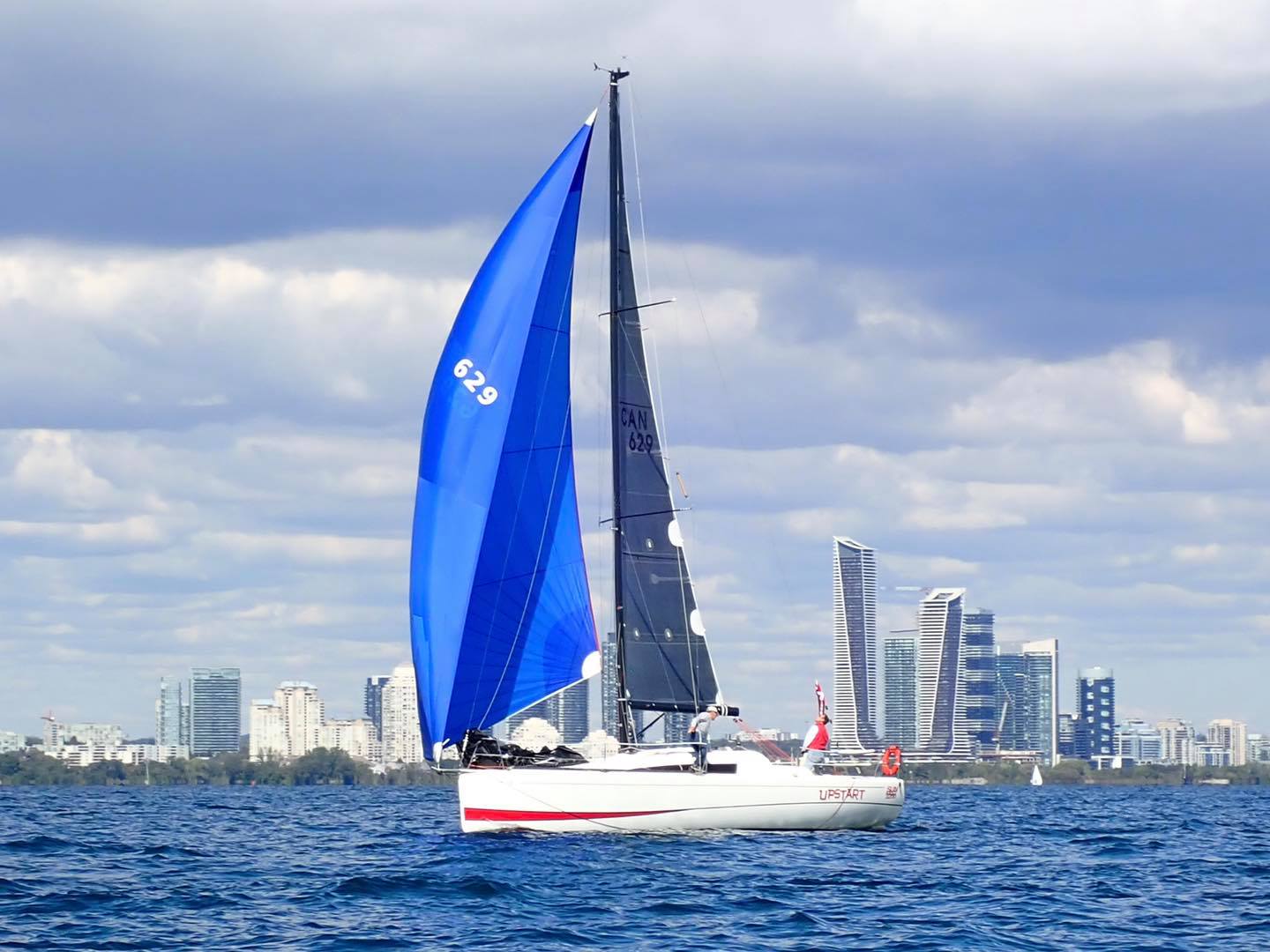
EVENT SPOTLIGHT: FINAL LOSHRS RACES
EVENT SPOTLIGHT: FINAL LOSHRS RACES
Short Handed Sailors Took To The Water For Races 5 & 6
North powered Upstart owned by Bert Barrett. Photo courtesy of LOOR Chair Monica Doedens
Conditions were predicted to be less than ideal for the last races of the LOSHRS series on September 19th and 20th. That said, the wind gods prevailed and a lovely 10-12 knots came through on Saturday with fantastic sunshine to boot. While races 5 & 6 usually take racers to Port Dalhousie from PCYC with an epic party on the Saturday night, this year the Lake Ontario Offshore Racing (LOOR) committee broke it up into two days races. Saturday saw racers head to Oakville from PCYC while Sunday they headed east to Humber Bay from PCYC.
The 49 boats that came out were able to enjoy two days of racing filled with Fall temps, sunshine and good times. North powered Messing About skippered by Andre Beese, a J27, from OYS took first in their division, beating out new to Lake Ontario Saffier 37 Isley from PCYC. Well done Andre and crew! Tonic from RCYC skippered by Chris Jones, powered by w, also took first in their division followed by fellow 36.7 racers Don French in 2nd with Arriba and Richard Reid in 3rd with Zingara. Ken Martin with Star Chaser, took first in his division as well for solo non flying sails on his Beneteau First 45, well done Ken!
It’s great to see the support these sailors have shown to the sport and the committee that runs these races. A great deal of effort, coordination and safety precautions were taken to ensure these races were able to happen for our short-handed sailors. A tremendous round of applause for the Lake Ontario Offshore Racing committee, especially their RC, for adjusting to the times to get races off and encourage sailors to come out on the water.
Photo courtesy of LOOR Chair Monica Doedens
READ MORE
READ MORE
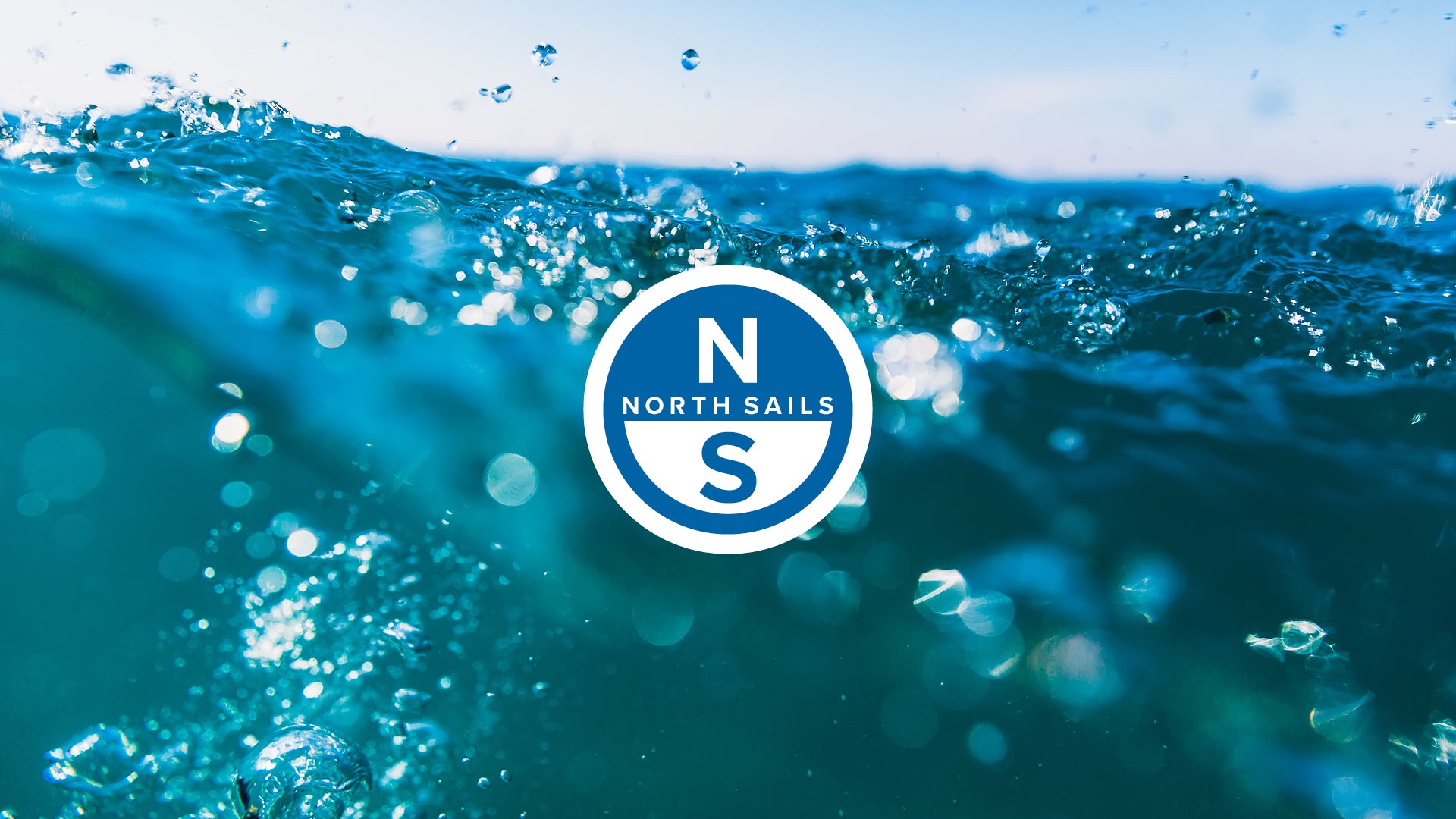
FAREAST 28R TUNING GUIDE
Rig Tuning Guide
All turns from base.
TWS Knots
Forestay
V1
D1
D2
0-5
-5
-3
-1
-1
5-10
-3
-1
0
0
10-14
BASE
BASE
BASE
BASE
14-18
+5
+2
+1
+1
28-22
+10
+3
+1
+2
22+
+10
+4
+3
+2
BASE TUNING - PT-2
V1
30
D1
25
D2
7
BASE Swing
1853 mm
Using the jib halyard, pull the halyard taught against the mast at the level of the top BAS (black band). Swing the halyard to the forestay and mark the forestay at this height. Measure from the mark down to the top of the stainless steel forestay fitting. This measurement is 1853mm for base setting.
READ MORE
READ MORE
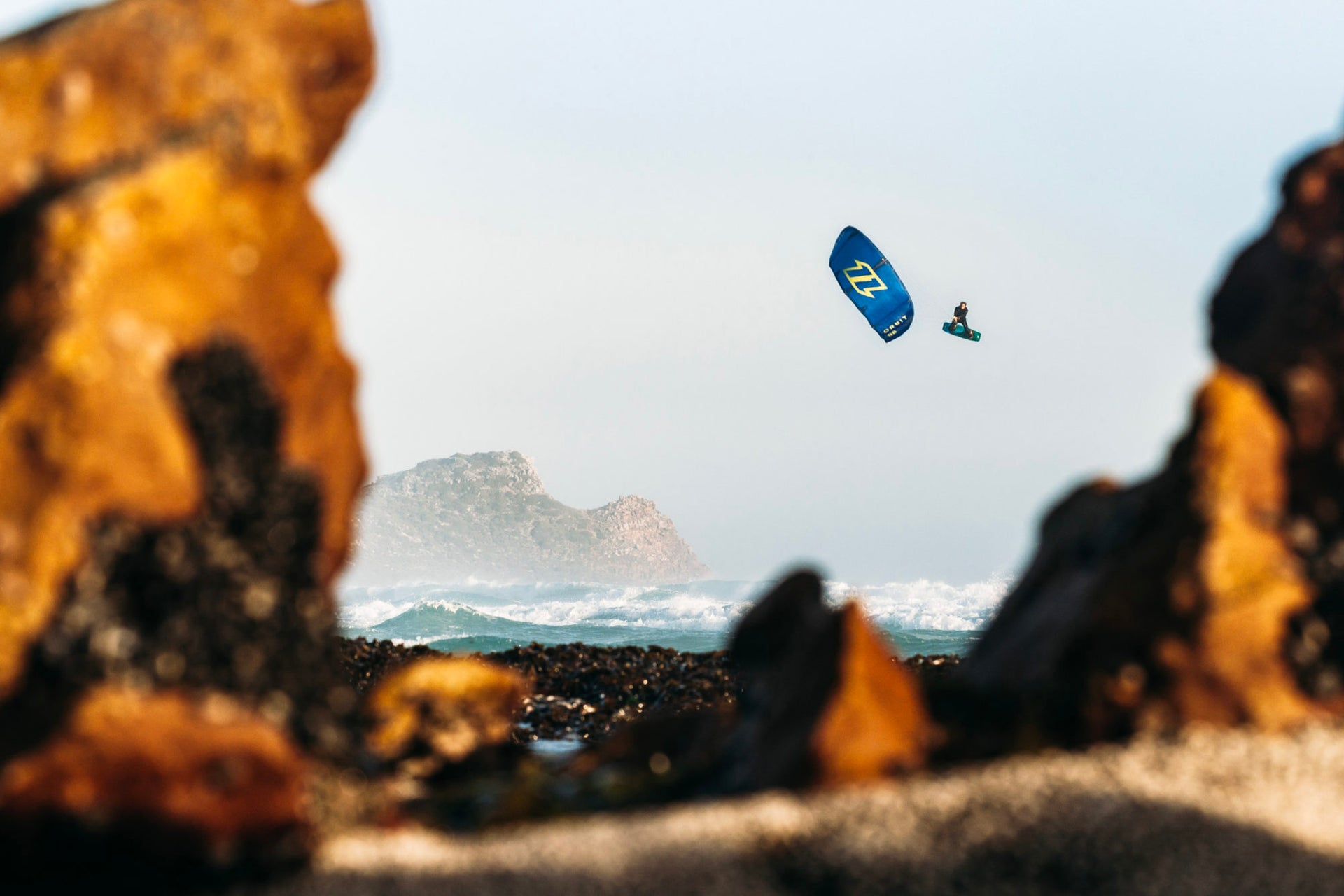
CONNECTING KITING AND SAILING
CONNECTING KITING AND SAILING
Steve Calder Brings Years of Sail Design Experience and a Passion for Kiting to a New Project
📸 Ydwer van der Heide
It wasn’t flashy imagery or action sports videos that got Steve Calder, North Sails designer, interested in kiting. His love for the sport began when his son decided he wasn’t interested in sailing optis while the family was in Valencia, Spain working on America’s Cup. A couple of months later back in Delray Beach, Florida, Kai Calder, Steve’s son, called his dad down to the beach where he and some friends had a trainer kite set up.
That Christmas, Kai was fully outfitted with all the gear needed to start his kiting career. He said, “come on Dad. It’s just water, it’s wind. It’s all the stuff you do. But it’s something that I like doing and it’s kind of an expressive sport.” As a result, Calder was hooked on the sport too. Kai is now a professional foil racer on the Pro World Tour, taking after his dad developing and innovating new gear for the sport he loves.
Steve Calder is one of the most lauded designers at North Sails, starting as a great sailor, winning a Bronze medal for Canada in the Soling class at the 84’ Olympics, and upwards from there. He has designed for programs like BMW Oracle Racing, Artemis, Ericsson, Puma Ocean Racing, and Rambler; and was instrumental in the development and the continued development of the Helix Structured Luff system. Calder has seen North Sails through many iterations of America’s Cup sails, as the rule has evolved. Calder is the pinnacle of sail design at North Sails, designing, engineering, and putting forth revolutionary products applied to the boats that are the highest caliber in the sport.
He’s one of the lead designers that the North Sails Design team turns to for guidance in solving design challenges. The company looks to Calder to help guide them in aerodynamic and structural solutions for Grand Prix products and Grand Prix customers.
“The goal of a sailmaker is to provide the best aerodynamics solution for a set of objectives,” says JB Braun, Director of Design and Engineering at North Sails. “Steve’s love of creating faster sail designs has driven him to the top of the sport of sailing. He gets intimately involved with the structure of the sails. He’s exploring new ways of working with materials, like 3Di to refine sail structure. You give him a challenge and he’s right in it, making sure that the design satisfies the customer’s goals.”
Calder uses the North Design Suite for designing top end, leading-edge solutions for race boats. The sophisticated, proprietary software, allows North designers to push the boundaries of sail design and be confident in the results. Calder is combining the North Sails foundation of data-driven design with his own intuition, as a kiteboarder, and applying it to the kites to help innovate and create the next generation.
Steve Calder tests a prototype. Courtesy Steve Calder.
Taking on a kite design project was an exciting and very different challenge for the designer, what he brings to the table here is his ability to innovate and apply his aero expertise that can be prototyped and applied to kite designs.
Calder began working with sailmaker Dave Little and the North Kiteboarding chief designer, Pat Goodman, who is an industry authority on kite design and innovation. Goodman’s ability to understand and translate rider requirements into high-performance kite designs puts him among the world’s most awarded, respected, and successful kite designers.
The team, combining their respective skills and knowledge, have found it fascinating to brainstorm and push the envelope with kite design and its applicability across a wider audience. Starting from scratch and having the opportunity to work with Pat Goodman is a dream in some ways for Calder. Goodman is known for being the guru of kite design, in the same way that Calder is with sails, he is able to fly a kite and sense what can be streamlined to make the product better.
“It just kind of kept moving on from there.” Says Calder, “North Kiteboarding hired Dave to do further explore the development for the kites. And we became a team, I wanted to be involved. We built several prototypes and put them to the test. Some of the impetus for the 2021 launch of the new North kites was a result of our collective work. Dave and I gave some input to that process.”
Pat Goodman says, “it’s so nice to have that opportunity to bring together the North Sails design and material development expertise into the mix. A modern day dream team working towards the goal of crafting a perfect kite.”
Steve and Kai on the water together. Photo courtesy Steve Calder.
“The core aerodynamic principles are the same,” says Calder, “it’s all, lift and drag. Having an idea and appreciation for how a kite or wind wing behaves and what the requirements are to build a good wing are the first principles of aerodynamics. In a way, it’s similar to designing sails but in other ways, it’s brand new. You can make a kite that’s too stiff, right. And oftentimes with sails, you can’t make a sail stiff enough. With kiting there are all sorts of design acumen that you would have that doesn’t relate really to sails at all because the kites behave in an entirely different way.”
Calder says that for most kiters, choosing a kite is all about the feel, whether they understand the physics or not, a concept that translates easily for sailors who are interested in getting into the sport. If you can find the groove in a sailboat, you can likely tell the difference between a well-designed kite and a lemon.
There is an opportunity to set a higher design benchmark in the kite industry and Pat Goodman is at the peak. “Goodman has basically spent a lifetime designing kites. As much as I’ve spent my life devoted to sailboats and performance sailing,” says Calder, “I can get on any boat and I can look up and tell what will improve the performance of that boat, whether it’s the boat, the sails, or the rig. Goodman can do that with a kite.”
Most sailors will find that kiting augments their sailing experience, as the basic principles are very similar. Pulling down on the bar is similar to pulling in the mainsheet. Making adjustments to the center lines on a kite is similar to tuning the check stays on a sailboat.
📸 Ydwer van der Heide
In Calder’s words, “that’s changing the entry angle of the kite. As you pull down, you power the kite, you pull the entry angle down, so you basically release the trailing edge. By doing so, the more you open it up, you’ll notice that the kite’s going to luff, and you’re de-powering the kite. Like when you ease your check stay on a sailboat, the sail gets flatter, and therefore you can sheet it harder.”
In a way, when kiting, your body takes the place of the boat. If you are sailing upwind, and the boat gets a puff, everyone feels it and hikes a little harder. The helmsman makes an adjustment. Kiting makes you more attuned to the wind and allows you to take immediate advantage of that puff, instantaneously, you can edge up and gain speed. There is nothing between you and the power of the kite.
“The feel is amazing.” Says Calder, “if a teammate is sitting on the rail sailing with us and leans over and asks, ‘Hey, what about kiting? You’re really into that. What do you think about it?’ I tell them, the first time I jumped on a laser as a kid, all I wanted to do was pull the centerboard up and just go planing around because it was really fun. The boat was fast, the water was flying everywhere. Anytime the conditions are conducive to kite, it’s the starting point for kiting. And it only gets better from there…”
READ MORE
READ MORE
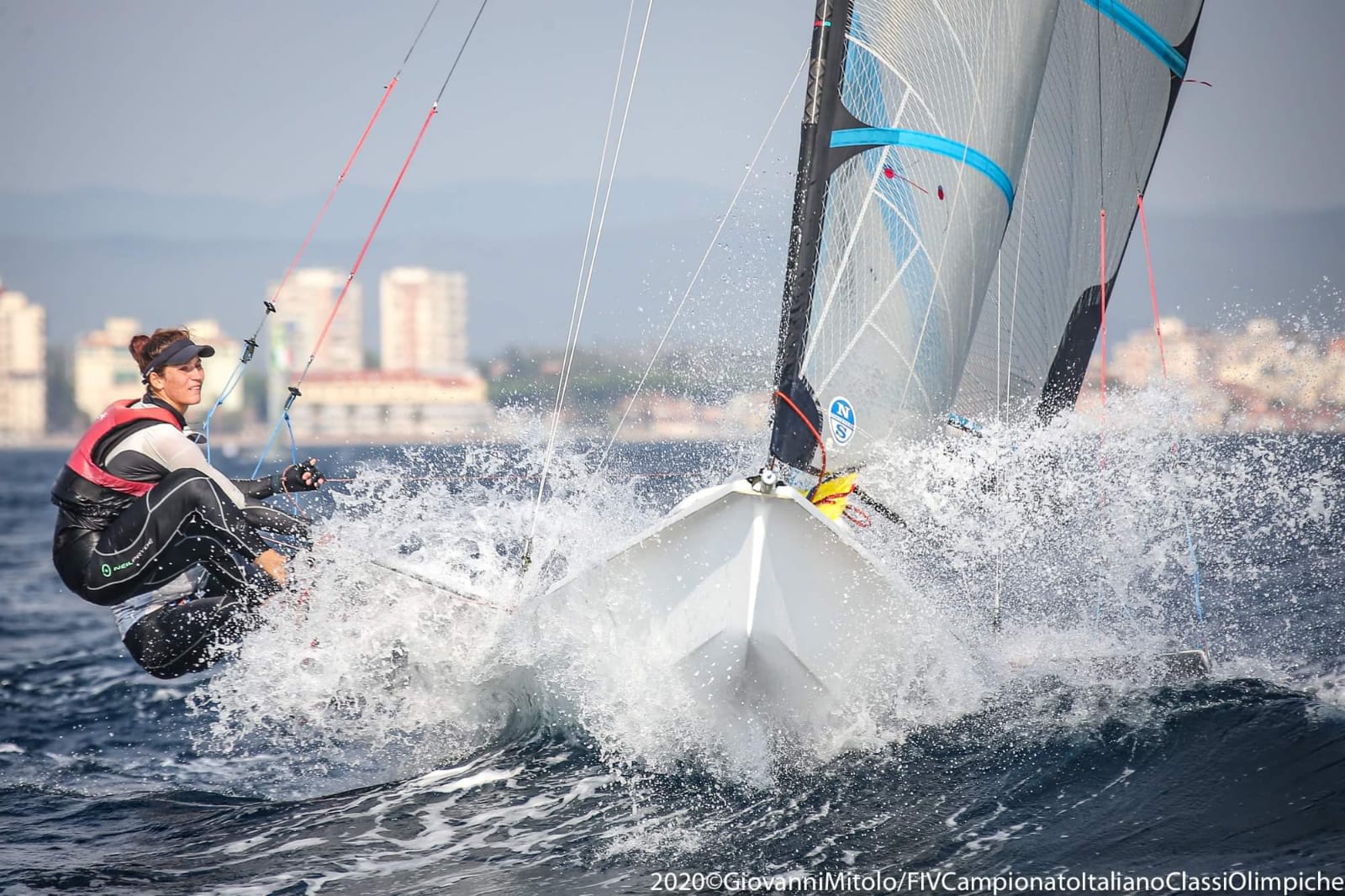
ENIA I MIHAELA, SREBRENE NA PRVENSTVU ITALIJE ZA 49ERFX
Enia i Mihaela, srebrene na Prvenstvu Italije za 49erFX
FOTO: GIOVANNI MITOLO
Od 17. do 20. rujna na zapadnoj Talijanskoj obali u mjestu Follonica, malo južnije od Toscane, jedrilo se Prvenstvo Italije za olimpijske klase. Na njemu je sudjelovala i naša najbolja ženska posada u klasi 49erFX, Enia Ninčević i Mihaela de Micheli Vitturi.
Dok su im se kolege iz JK Sv.Krševan vraćale s regate u Kielu, ove dvije članice JK Uskok otišle su na ovu nešto bližu lokaciju i zajedrile s talijankama. Nakon dugog perioda bez regata u ovoj klasi i njima je ovo bio dugo očekivani povratak na regatna polja s ipak nešto brojnijom i ozbiljnijom konkurencijom nego što su je imale na treninzima tijekom ljeta.
Ukupno je sudjelovalo 8 posada. Osim naših djevojaka sve ostalo su bile posade s ITA registracijama na jedrima. Među njima najviše se isticala posada Jana Germani i Giorgia Bertuzzi koje su prije ovog prvenstva sudjelovale i na regati u Kielu, tako da su stigle na start svog nacionalnog prvenstva već dobro zagrijane i u visokom natjecateljskom modu.
Naše djevojke su unatoč izostanku s regate u Njemačkoj bile na visini i u skladu sa svojim statusom na međunarodnoj sceni, a više o tome saznat ćemo od Enie koju smo uhvatili za vrijeme opremanja jedrilice u Austriji u koju je naša posada otputovala direktno na Europsko prvenstvo:
Za odlazak u Italiju smo se odlučili u posljednji tren. Jedrilo se na moru i uvjeti su bili stvarno izvrsni.
Prva dva dana puhalo je iz otprilike 225°, nekakav njihov maestral... sea breeze od 16 do 20 čvorova. Imali smo po četiri plova svaki dan... prekrasni uvjeti! Šteta što nije tamo Europsko :)
Tako da su ta prva dva dana bilo ono pravo "muška". Tih dana smo uglavnom završavale kao druge. Ispred nas je bila samo Jana Germani koja je u Kielu osvojila 6. mjesto. Tako da samo je tih dana uglavnom hvatali.
Treći dan nismo jedrili, pokušali smo startati dva puta, ali je svaki put bilo prekinuto.
A zadnji dan smo odjedrili dva plova po nekom južiniću. Na početku su bili srednji uvjeti, ali je kasnije vjetar pao.
Nakon deset odjedrenih plovova, nakon dva odbacivanja koja su se kalkulirala nakon 9 plovova, Jana i Giorgia bile su ispred nas za dva boda, ali i s jednim odbacivanjem su bile bolje jer su imale više prvih mjesta. Tako da je bilo napeto od početka do kraja i stvarno se svaka greška naplaćivala.
Enia Ninčević, JK Uskok
FOTO: GIOVANNI MITOLO
Što se tiče prvih mjesta koja je Enia spomenula, naše djevojke su četiri puta pobijedile, dok su talijanke to uspjele napraviti 5 puta, a u generalnu sumu nakon odbacivanja ušla su im još tri druga mjesta i jedno treće, a talijankama samo druga.
Tako da se može reći da je u regati presudno bilo otvaranje po jakom vjetru, odnosno prvi dan jedrenja kad se domaća posada mnogo bolje snašla.
Kompletne rezultate možete pronaći na ovom linku.
Iz Follonice je naš kombi za Austriju otputovao preko Milana, gdje je u tvornici obavljeno popunjavanje opreme. U Austriju su stigle u ponedjeljak navečer i do srijede ujutro su morale vrijeme provesti zatvorene u apartmanu jer su čekale rezultate testa na Koronu koji su obavile u utorak ujutro. Rezultati su dobri i sad su u tijeku posljednje pripreme za predstojeće Europsko prvenstvo na kojem će još jedriti i braća Fantela, te posada Igor Marenić - Anđela de Micheli Vitturi u floti Nacri 17.
READ MORE
READ MORE
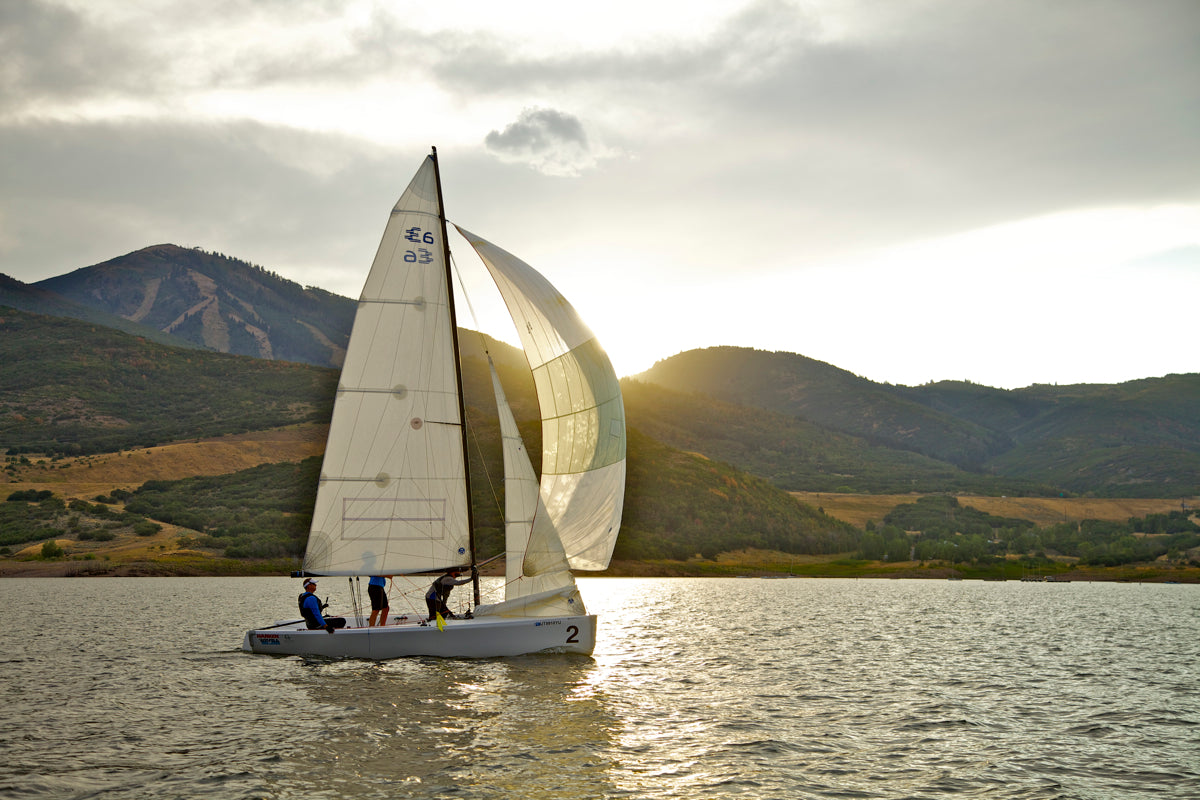
SPOTLIGHT ON PARK CITY SAILING
SPOTLIGHT ON PARK CITY SAILING
At Park City Sailing, an Empty Boat is a Wasted Opportunity
In the Wasatch Mountain Range, the team at Park City Sailing has created a sailing haven, where people from all backgrounds, in all stages of life, have experiences and make memories on the water that stretch beyond the sport.
Park City generally brings to mind winter Olympic games, extreme snow sports, and high-end resorts, but nestled under the slopes of Deer Valley Ski Resort is the Jordanelle Reservoir, 6,200 feet above sea-level where Executive Director Scott VerMerris conducts socially impactful sailing programs from May to October. VerMerris studied human development and family studies and has an extensive background in alternative forms of education and therapy.
The adaptive program accommodates people of all abilities, adapting their fleet to handle sailors with visual impairment, amputation, cognition, autism, muscular dystrophy, cerebral palsy, hearing impairment among others.
Similarly, the therapeutic program is a space for those whose impairments may not be visible to those around them. Park City Sailing is an innovator in the utilization of mindfulness as a component of the sailing experience. Participants include veterans with post-traumatic stress disorder and traumatic brain injury, struggling with addiction, children, and families supporting a family member with mental or chronic illness.
The program is a recipient of the Robbie Pierce Award for outstanding adaptive programming.
The idea began with Ken Block, former Vice President director of Park City Sailing. Block is retired now, but his passion for the programs is still a major part of his life, and he is involved with countless organizations that promote accessibility in sailing.
Block did not enter the sport of sailing in a typical way. He did not come from a family of sailors, but he knew he had an emotional connection to the sport, so he worked his way onto several Swans competing offshore and eventually he campaigned 3 International Etchells.
Initially, Park City Sailing started as a Tuesday night around-the-cans Laser sailing, but with Block’s passion, it grew into the program it is today. A turning point was when the SEAS program in Sheboygan put out a notice that they were looking to donate their fleet of eight Elliot 6 Meters. Park City Sailing worked very hard to get the boats, calling upon now retired North Sails expert Tom McLaughlin to help them close the deal. McLaughlin was one of the program’s first and best volunteers.
“It’s a very positive experience,” says McLaughlin. “We did a lot of sailing with wounded warriors, special needs people of all ages, people with learning disabilities, and so on. To really see their sort of joy or freedom when they’re on the water was really heartening because a lot of these people were beaten down, or told they can’t do things. We put them behind the tiller and encouraged them, ‘you can do this!'” He continues, “the beauty of being on a big open lake is that you chart your own course. You go where you want to go. You don’t have to stay on a path, there is symbolic freedom in that.”
“Our way of introducing the boats to the community was a partnership with the National Ability Center based in Park City,” says Block. “They brought 24 wounded women warriors, to our program and we took them out sailing. The impact on us was palpable, that while sailing is a lot more than taking two turns off the lower to see if we can get a little more power to go through the lump on the next beat. We actually made a difference in people’s lives.”
Park City Sailing continued to strengthen its relationship with The National Ability Center to create their own programs. Those programs have grown into the current work done at Park City Sailing. The program works with groups and individuals, like Big Brother, Big Sister, to specific requests, like one terminal patient named George, whose final wish was to go sailing one last time.
When sailors ask about the program, Block says, “There’s a reason why you’re still sailing after 30, 40, in my case, 60 years.” And it’s not, ‘Hey, how can I induce a little bit more prebend today?’ No, that’s not what it’s all about. Something happened the first time you got on a sailboat that made you continue to get on a sailboat decade after decade.”
The stories that Scott VerMerris and Ken Block share about the sailors in the program are hopeful, powerful stories about inclusivity and the positive effect that participation in sport and being outside can have on our lives. One participant, Dani, had recently lost her husband to suicide when she went on the water with Park City Sailing. Dani started to open herself up to share her story and talk to others about her experience.
Another sailor, Sarah, was in a mountain bike crash that left her paralyzed. After the accident, she felt hopeless but learning to sail made her feel proud to be disabled.
“I always have this limiting thing going on in my head and can’t fully have fun. For the first time, I completely let everything go and I was so happy and laughing and cackling and having the time of my life,” said Sarah of the experience.
Another is Shane, an improvised explosive device specialist in Afghanistan who was suffering from severe anxiety and PTSD, who shared after a day on the water, “Today, I found a place where I feel safe.” Now, Shane continues his recovery and has gone back to school to become a recreational therapist himself.
These benefits have strong enough data behind them that Block and VerMerris have co-authored two scientific papers on their experiences under the guidance of Dr. William Marchand of the Salt Lake VA hospital. on their experiences. They encourage other programs to expand their horizons to work with a more diverse audience.
VerMerris says, “We can all benefit from good mental health, and sailing can contribute to well being. We’ve become fascinated with the effects that combining mindfulness, meditation, being outdoors, learning about sailing, a new skill that involves physics, and nature, and science, and all these different things, as well as comradery, can treat post-traumatic stress disorder.”
“The more you spend time in a cockpit of a J/22 with three or four people in recovery, you’re like, “Wow, these are amazing stories,” says Block.
Tom McLaughlin, who was hired by Lowell North in 1967, and has been involved with countless high-performance programs, attests that his hours spend volunteering with Park City Sailing strengthened his love of the sport. “I will reach out and I’ll help others because it not only is it rewarding, but it regenerates your love for sailing. And I think no matter how good of a sailor you are, even on the professional level, if you don’t really love it, you’re not going to do it as well.
“When you sail, like for an America’s Cup program and you’re working six and a half days a week, and your focus is on incremental improvement. It’s easy to lose sight of the original joy that brought you into it. Volunteerism is something that allows you to work with people that have never been exposed to sailing or are struggling with real-life problems, and to see them leave those problems onshore and have some real joy, that takes the competitor and harkens back to that happy place. That gets you through another week of the grind of going out and sail testing and boat testing.”
Block makes himself a resource for those who want to share their time on the water, and encourages people in the sport to lean-in to adaptive inclusivity, even if they might feel uncomfortable at first.
VerMerris adds, “I think that’s why any member joins. It’s so that they can escape the stresses of whatever lives onshore and get out on the water as we all do. Our program also focuses specifically on how we can use our boats to offer people experiences that have different physical abilities, or different cognitive abilities, or the two combined.”
The team attests that starting a socially-impactful sailing program begins locally, partnering with groups like adaptive sports centers, any therapeutic treatment center, or their local VA.
“Be fearless in reaching out to the community,” says Block.
Sending instructors to US Sailing’s adaptive sailing course adds to their confidence levels. Block raises his hand to speak at as many events as he can, and also offers his personal cell phone number up as a resource (you can email us for it.)
The work done at Park City Sailing is proof that sailing is good for our well-being, giving participants transferable skills that relate when you get home and the stresses of real life. No matter the walk of life, we can all benefit from more time spent under sail.
READ MORE
READ MORE
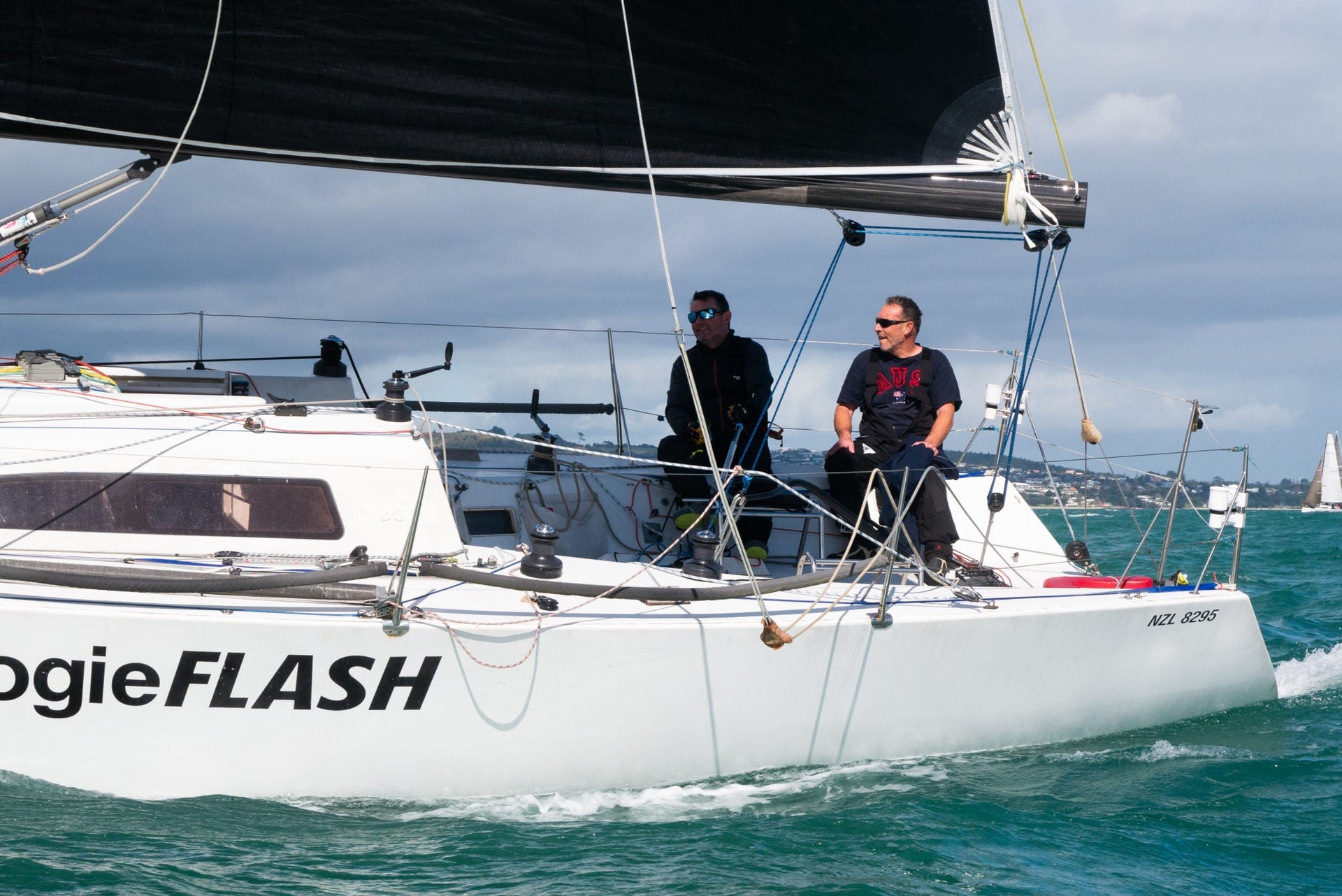
CLIENTS GIVE NEW LIFE TO AN OLD BOAT
CLIENTS GIVE NEW LIFE TO AN OLD BOAT
The Rebuild & Sail Inventory Upgrade on Mumm 36 Boogie Flash
📸 Lissa Reyden / Live Sail Die
Local sailors and longtime friends David Wyeth and Vaughan Hunt rehab racing boats as a hobby. The pair spend a lot of time together, participating in weeknight sailing around Auckland and an occasional doublehanded race throughout the season. But what they love most about co-owning a boat is the rebuilding process. “If the boat is perfect, where’s the fun in that,” David remarked.“Most of our enjoyment of this co-ownership is the journey to get her back on track,” said David. “Reinventing systems, changing hardware–it’s about building something and seeing the project come to life. Our conversations aren’t about how we win races; rather, we can focus on keeping the boat moving forward and going quicker.”
What about Boogie Flash drew David and Vaughan’s attention?
David and Vaughan owned a few boats together, most recently, Moving Violation, an Elliot 5.9, which they had for 15 years. Once they ran out of things they could do, they were ready to tackle a new project. “We found this old Mumm 36, called Boogie Flash,” said David. “She needed some work, but it’s been a fun challenge, and we have both enjoyed our time figuring out how to improve every aspect of the boat.”
“There was nothing particularly attractive about her,” David explained. “But she had potential. We were most attracted to the fact that she looked like she needed saving.”
David and Vaughan race the Boogie Flash in the Rum Series on Friday nights and the partake in the summer series on Wednesday’s which will go through January. “There’s a few two-handed races in there that we try to fit in as well,” said Vaughan. “The Mumm 36 wasn’t designed to be two-handed, but we’ve got her in great shape for it these days, and boy, is she fun!”
New sails made a difference.
Talking to our team at North Sails, new sails bring life to older boats. Coming up with a new sail plan, changing the deck layout, seeing how things go, that’s what we like most. It’s about the whole process, not just about the racing.”
Sail expert Andrew Wills and sail designer Mickey Ickert at North Sails in Auckland were hands-on to help David and Vaughan design a sail package to get Boogie Flash back in action.
“We decided to go with a full 3Di RAW upwind inventory. Boogie Flash now has a square-top main and a new #1 & #2 jib. We cut a hole in the bow and installed a retractable pole, allowing us to add a brand new, huge symmetric kite. At the moment, the hull looks like a stolen and recovered car, but our sails are gorgeous,” David remarked.
Mickey Ickert designed sails for David in the 90s, so he knew Mickey would be the right choice for this new project. “We talked about what we were looking for in new sails, how we could optimize the rig, and fine-tune our settings to make her faster,” said David. “He designed a big symmetrical kite with broad shoulders, and it amped up our off-wind sailing. We also got a new #1 jib, which trims block to block like a dream.”
📸 Lissa Reyden / Live Sail Die
The duo modified the boat from its original factory settings, which made it more of a challenge. David commented, “Working with Andrew and Mickey made the sail part easy. When we hoisted our jib for the first time–it was perfect.”
“Every day we put the sails up, you could feel the difference,” said Vaughan. “The boat just lit up. It was effortless. The sails and rig are now balanced, and the boat builds speed constantly. Boogie Flash is so much faster and points four degrees higher compared to where she was when we bought her.”
North sail designer Mickey Ickert enjoyed working with David and Vaughan on their new project. “The most interesting part about projects like these is that an existing hull can be upgraded and still be competitive with the right sail inventory. The Mumm 36 is a great platform and a fast boat. The communication between David, Vaughan, Andrew, and myself was vital in this project’s success. The guys encouraged us to get larger sails on the rig and looked for solutions that were not driven by rule constraints.”
“Andrew was helpful because of his excellent knowledge of the racing format and was the perfect facilitator in this project’s communication,” said Mickey. “Once we had the ideas, I shared visuals with David and Vaughan using North Design Suite, which is a great way to show boat owners what we envision. By the end of the day, everyone was on the same page.”
What do David and Vaughan enjoy most about working with their local North Sails team?
“What we like about the support we’ve received from the North team is that they understand us and the boat. They know what we are looking for and understand what type of sailing we do. North has the best advice and the right sail options. Being fast out of the box is the bonus.
We haven’t looked back since,” said Vaughan. “It was like night and day. You could instantly feel the difference. Having a straight mast, new sails and wide spreaders swept back 20 degrees; we don’t need to use the runners all the time; thanks to Andrew and Mickey, we found the sweet spot for headsail trim.”
📸 Lissa Reyden / Live Sail Die
READ MORE
READ MORE
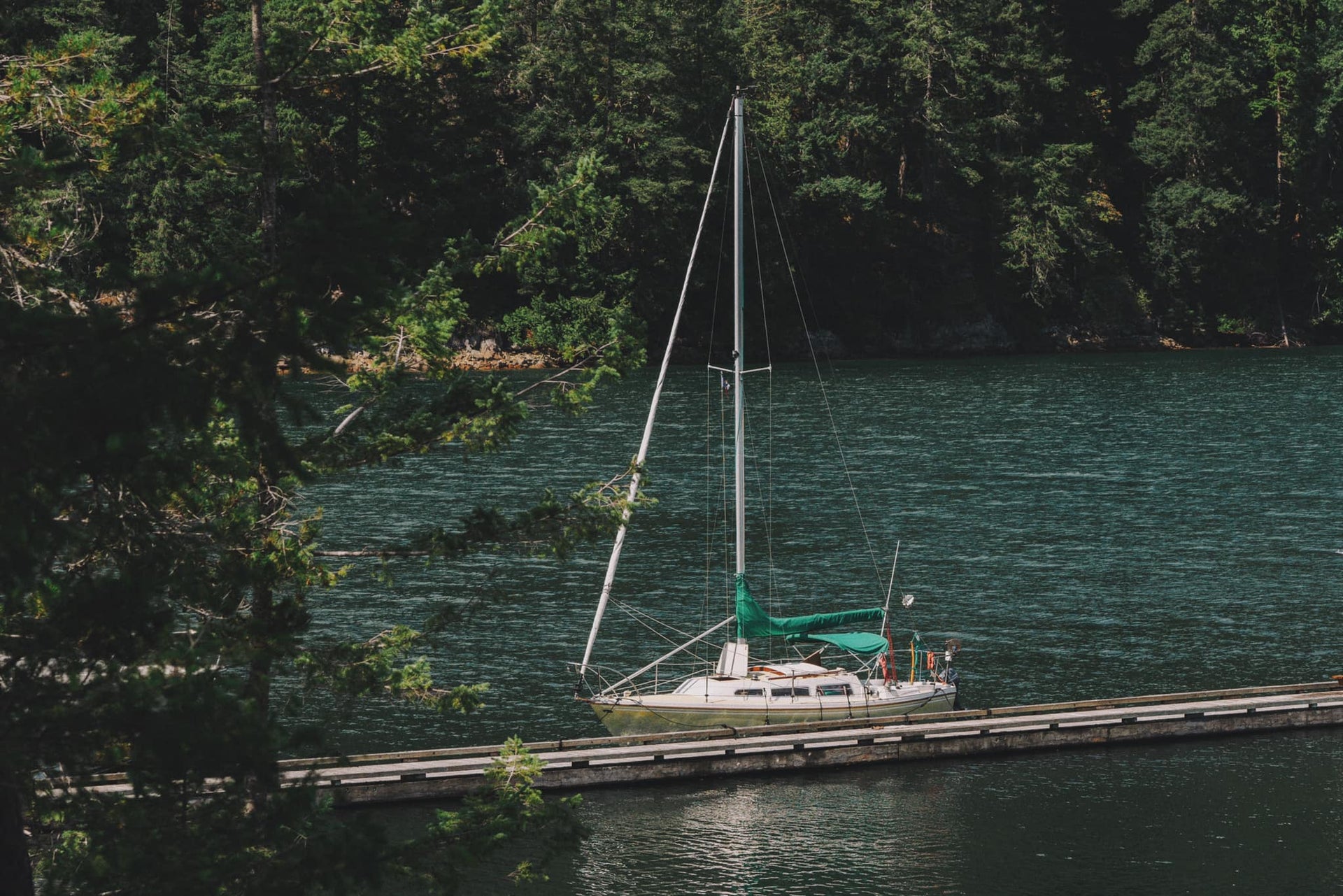
LIFELONG WATER LOVE LEADS TO SAILING ADVENTURE
LIFELONG WATER LOVE LEADS TO SAILING ADVENTURE
New Life To 1976 Catalina 27 Tall Rig
Krizia Marban and Doug Hampton share a glimpse into their sailing adventure aboard their 1976 Catalina 27 Tall Rig with their two pups in Vancouver.
How Did You Get Into Sailing?
Krizia was born and raised in the desert, but always knew that she loved the water! The very first time she got into a dinghy was a high school field trip to Jericho Sailing Club. A few years later she was invited to race on Thursday Nights with a rowdy crew on a Schock 35, named Fancy Free, skippered by the legendary Ian Lloyd. Doug grew up on Vancouver Island, and has always grown up by the water and boating. This year is his first year of sailboat ownership.
Word around RVYC is there is a real nice-looking Catalina 27 getting a big refit on the West Walk, when did you purchase it?
Doug and I purchased the boat August 1, 2019, so we are still reeling from that boat ownership high. The conversation of owning a boat only amounted to window shopping in January that year, until a friend made an offer we could not resist. When all documents were signed, we went down to celebrate on the boat, only to find that the lock on the hatch was seized! So, we literally had to break into “our” boat on day one. The hull and deck is a faded banana yellow hull, with green accessories, so the boat stands out a bit.
Why did you choose the Catalina 27 design?
The influence of purchasing a Catalina 27 was mainly due to the popularity of the boat and the 4KSB lifestyle. I’ve raced, shared, and leased a few Catalinas around the bay. They are the perfect starter cruiser, easy weeknight racer and have very comfortable accommodations. The supplier of parts and the online owner forums are also all very active. There is nothing like racing in a regatta with the BBQ on.
Since the purchase of the boat what are some of the projects that you have completed?
Even though the boat is 44 years old and has had 3 previous owners, it was well kept and dry inside. The first week of owning the boat though, we gave it a deep clean inside and out. We also wanted a boat survey completed to have a sense of expectations to what we really got ourselves into. The list of recommendations was expected, so it was a great base to prioritize which project we wanted to tackle first. There was some struggle with planning and organizing with the global pandemic shutting the city down in the spring, but we just patiently worked on some minor tasks, like bringing a few pieces of teak home to strip, sand and varnish. Some of the major tasks we have accomplished the last 7 months include a haul-out to power wash the buckets of mussels at GIBY; contracted Skookum Yacht Services to repaint the bottom, replace through-hulls, and keel bolts inspection; and rewiring of all electrical by A-Sea Marine Electrical Ltd. One major unplanned upgrade was the gutting of the galley.
What is the next project on the list?
Each project is a mushroom project, so there’s always something new. We replaced the halyards and sheets recently, so we are looking forward to purchasing/replacing deck hardware… to have her race ready, haha. We held off on replacing the interior upholstery, since we’ve always been fascinated with the grooviest decade! We are currently loving the original yellow retro wool in the cabin. We also scrubbed the mildew green Dacron jib and main sails, a true test to any relationship. The sails work okay for the cruising we do but purchasing new North Sails is on the horizon.
Have you ran into any issues with the boat since having it?
Since replacing the old, oversized halyards and not having a halyard restrainer, we had issues with the jib halyard wrapping around the forestay, which could potentially be a very serious problem out on the water. Luckily, we had Chris Walter from the Vancouver loft of North Sails as a boat neighbor at the yacht club most of the summer. He assessed our issue, added a strop at the tack to raise the sail, and get it dialed to furl, it worked wonderfully! Shout out to Chris! He knows there's always a beer or more for him on the Gidddy Up.
I’ve noticed you go cruising with two smaller dogs. How do you accommodate them when on the water and what are their names ?
Dude (white/fawn), he’s 8 and the swimmer, and Opie (white/black), he just turned 6, he’s the sinker. We may look into getting lifeline netting since Opie’s a bit of an explorer on the deck. They both wear lifejackets, and instantly go to nap mode under sail. At first, Opie wasn’t really into the motion of the ocean being down below in the cabin, but it sucks down there on a choppy day. “Boat” is a now trigger word, so it only means beach, boat rides, treats, sun, and good times!
Your partner Doug is fairly new to sailing. How is he enjoying it?
Doug is loving it! Doug went on his first cruising trip to Gambier Island; summer of 2017 and he loved every bit of it. We live downtown, so it always makes sense to wanting to be elsewhere on the weekends. We have spent almost all our weekends taking the boat out, tinkering and or having dinner out in the bay this past year. We do a lot of land camping, so cruising is just another way for us to go camping, this time on the water. Thinking back to our first test sail out in the bay, hoisting the mildew sails for the first time. I had him on the tiller, so he could watch what to do in the cockpit. There wasn’t much breeze at first, but we turned off and lifted the motor, I told him to ease his gorilla grip on the tiller, let the sails flop and fill and just feel the wind in his hair. Once he got the hang of it and we were heeled over and moving, he smiles and says, “Where do you wanna go?”, to which I responded, “Ahhh, we forgot to bring in the fenders!”…Phew, no one was around to see that!
Doug’s a professional photographer, other than taking surreal pictures while cruising, what else does he enjoy about being on the water?
Doug’s got a busy work schedule, so time spent on the water is always peaceful, but can also be stressful for him. He’s mastering taking the boat in and out of our slip and I’m very proud of how quickly he’s learning it all. At the same time he’s been burning through film with a few of his cameras, and so keeping with the retro theme, he’s managed to develop and process film by turning the cabin into a dark room!
What type of cruising did you get up to this summer?
To celebrate finishing some of the projects and our first anniversary owning the boat, we booked the last week of August for our first family cruise around Howe Sound. The plan was to stop over on Bowen, Gibsons, and Keats but with pandemic restrictions in mind, we decided to just spend 6 days on Alexandra Island (RVYC Outstation). Alexandra is a small but quaint island located in Centre Bay of Gambier Island. By the 6th day, all the ice had melted in our cooler, so we decided to sail home, it was a nice slow reach to Jericho.
Do you have any plans to go cruising this fall? If so, where do you plan to explore?
Fall is surprisingly our favourite season! Crisp sunny fall days, foggy mornings, rain, as some would detest! We’ve re-attached the windows on the dodger and patched up the vinyl with clear sail repair tape, so it’s ready for one more season. We are monitoring the pandemic restrictions this fall, and hoping to be able to do some weekend trips to Bowen, and to Wigwam Inn (another RVYC outstation) at the end of the Indian Arm. The previous owner installed an oversized Dickinson propane heater on the boat, so just firing that up to warm up the cabin and ready to dunk some cookies in some tea will be top notch.
READ MORE
READ MORE
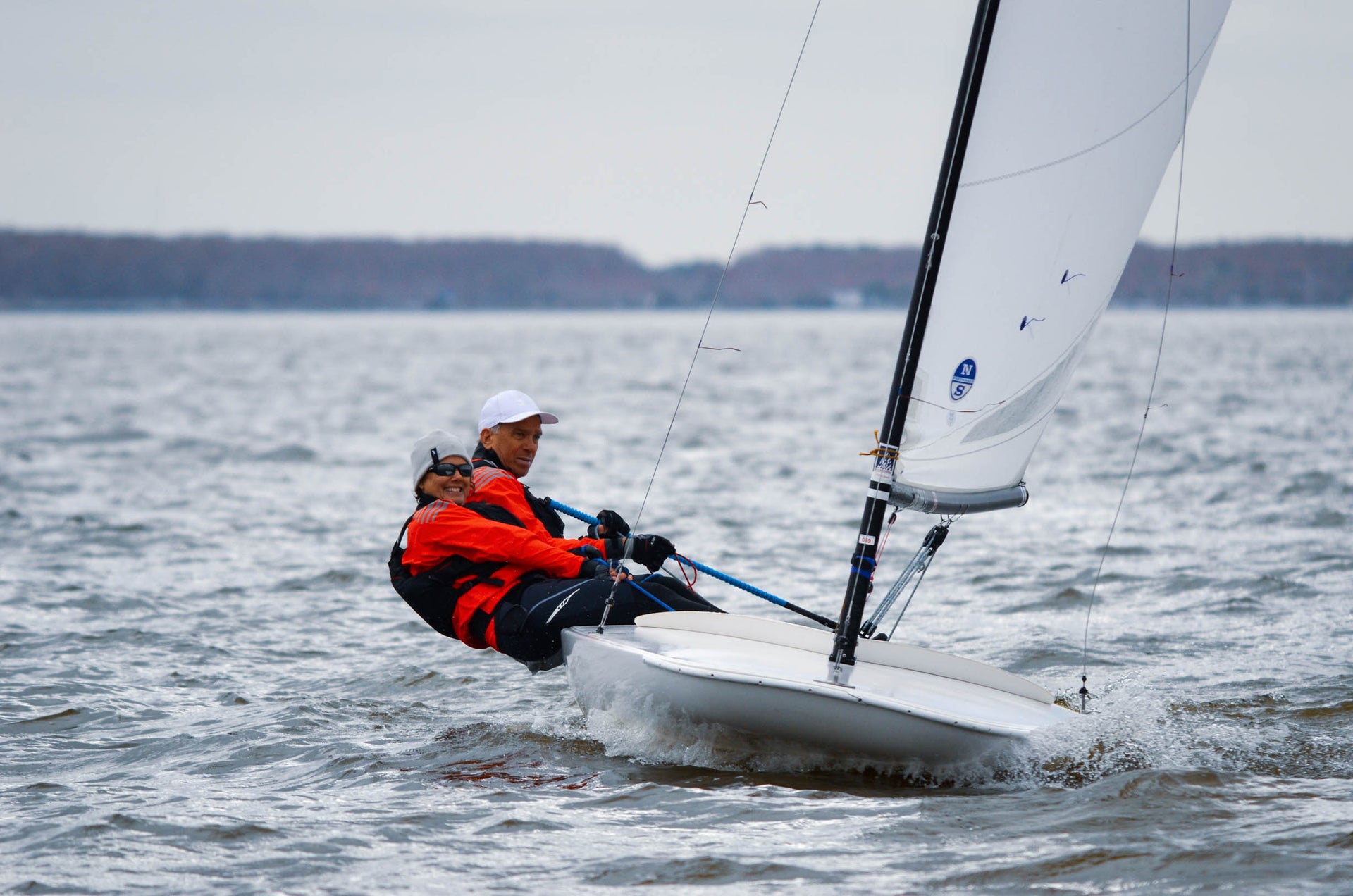
#NSVICTORYLIST: MC SCOW MASTERS
#NSVICTORYLIST: MC SCOW MASTERS
Q & A With Overall Winner, Matt Fisher
Congratulations to 2020 MC Scow Masters Champions Matt & Lisa Fisher! 📸 Regatta Girl Photography
We spoke to 2020 MC Scow Masters Champion, Matt Fisher, to get the full download what has helped him raise the bar to be even more competitive in the MC Scow fleet.
NS: Where and when did it all start for you?
Matt: I have been sailing MC Scows for 12 years out of Hoover Sailing Club, Fleet 54. We have about 25 boats in the fleet and get about 10-15 on the line every Wednesday and Friday. It is a tenacious fleet. I sailed quite a bit this summer and am in 4th place in local fleet standings. I grew up at Buckeye Lake YC about 30 miles east of Columbus, sailing the Lightning and Thistle. We moved to Hoover about 35 years ago.
NS: How did you prepare for the MC Masters under the current sailing conditions?
Matt: Hoover Sailing Club has been very active this summer. We have not had social activities at the club, but 2020 has been one of the healthiest years of participation that I can remember. Between sailing the MC Scow, the Laser, and crewing for my son Stu on the Thistle, I have sailed more in 2020 than I have since college. I sailed at least 35 races with the MC Scow fleet this summer and had a lot of time to practice. As I mentioned, we have a highly competitive fleet, and one of our fleet members, Ted Keller, is one of the top 2 or 3 in the class. He won the MC Scow Blue Chip five times and is considered one of the fastest MC sailors in the class. Ted and I did one-on-one tuning – or sometimes maybe 3 or 4 boats came out – 20 + times since April.
I am retired, so going out on a Tuesday morning when conditions are right was easy to organize. During our practices, we focused on straight-line speed, boat handling, gear changing, and more. I did this with Ted before the Nationals in 2014, where we gook 2n and 4th overall. We practiced last year before the 2019 Masters, where we placed 1st and 2nd overall. Ted is a great coach and has brought me along. I spent a lot of time in the boat this summer working on boat handling.
When comparing notes with other folks at the Master’s Nationals, this past week, a lot of fleets in the MC class had a strong year despite, or really because of COVID.
NS: You have used the Z- Max Sail for some time. Can you give us a few tips on set up and trim? And why do you prefer this model?
Matt: The Z – Max mainsail is the only sail I have used since I have been sailing MCs. I follow the North Sails tuning guide and have been much more conscious of knowing the tune numbers than in previous years. The week before the regatta, we knew we would get some big breeze at Clear Lake. We had a light day Friday and two medium to heavy days Saturday and Sunday. I tightened the forestay on Friday night a few turns. The Z-Max is easy to use, but if I have any issues, its because I am over trimming. I am getting better at using the telltale in reference to the top batten, which has helped a ton.
NS: You started off the regatta with a 1-1 on Friday. You must have been fast. What can you tell us about this?
Matt: Going from Thistles and Lightnings to an MC Scow has always been a big adjustment for me, and I think it is more challenging to make a new boat go well in lighter air than in a breeze. I have always been impressed with people like Allan Terhune, my brother Greg, and Skip Dieball, who would go to three different class midwinters three weeks in a row. Most of the tuning that Ted and I did was in lighter wind speeds, under 10 knots. Most of our club races were in light air also.
With a scow, keeping a constant angle of heel and having the ability to change gears quickly is the key to having the best speed in the softer conditions. Keeping the boat going through the lulls and making the 2-3 adjustments to weight and trim make a huge difference. On Friday, I was able to get good starts and clear lanes so I could go where I wanted. The conditions changed drastically, from blowing about 10-12 in the morning on Friday to less than 5 knots by the end of the second race. We went from sailing the shifts to sailing for pressure and were able to keep the boat moving. I was very fortunate and borderline lucky on Friday to get off the line clean and then have a good lane on the first tack. But changing gears and staying in the breeze was essential for getting out in front of the fleet.
NS: When it’s windy, you sail with your wife, Lisa. It must be great to share the racing aspect with her. What does she do onboard to help in windier conditions?
Matt: That is one of the neat things about sailing scows. We can take on crew up until the 5-minute gun. I am in the “middleweight” category, and its an advantage to take on an additional crew with its blowing 12+. At the masters, it seemed like 80% of the boats took an additional crew on Saturday and Sunday. I think some of the big guys don’t like the rule, and I understand why. But it does help allow kids and spouses to sail. I like it when so many boats bring on an additional crew because everyone sails a similar lane.
I will say that Lisa and I only went out to practice a couple of times before the event, and it showed on Saturday. We weren’t quite as good at holding our lanes; I started trimming a little looser on Sunday, and we were going much better.
What is kind of funny is that now the only time that Lisa sails with me is when conditions are over 12mph. We sailed Snipes together for a long time and Lightnings and Thistles, so it’s very relatable. She is a great crew. Lisa also has the best, high-tech gear to keep her warm and dry, which is perfect because when it’s windy, it’s chilly, which is when I need her. It has made the Christmas season much easier to navigate too. A couple of years ago, I got her a drysuit. She tried it on and looked good in it. But she then realized she would only need it during cold and windy conditions. She sent it back because she didn’t want to sail in those conditions, but it has been fun to sail together, and it has allowed us both to get more involved in the class.
NS: What are your future MC Regattas on the schedule?
Matt: I am hoping that the Florida circuit will take place. There are three regattas at Lake Eustis, one in November, another in early February, and then the Midwinters. It is an excellent break from the winter months up north, and we have enjoyed being able to go south to sail regattas in February and March. We expect a crazy winter, so we have not made plans yet, but I hear that regattas will happen. We hope to go, but I will admit we are more on the cautious side of COVID.
Looking for race-winning sails? You can now order directly from your North Sails expert. Call or email us today for the same quality, consistency, and expertise. We look forward to helping you make the most of your next event.
Ask an Expert Tuning Guide Shop Sails MC Scow Class News
READ MORE
READ MORE
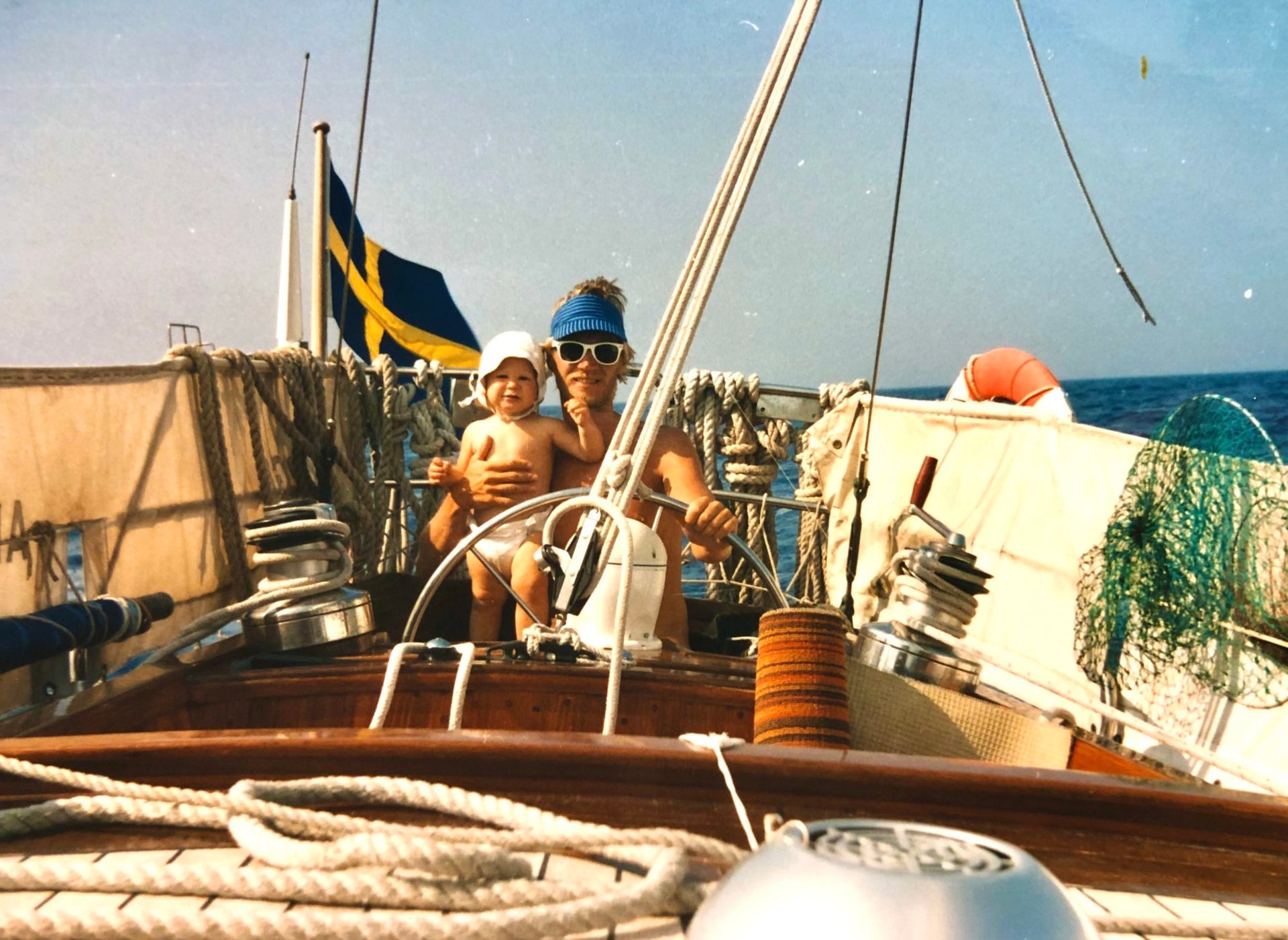
THE STORY OF ARGO: PART III
THE STORY OF ARGO: PART III
A New Adventure on the Mediterranean
Read Part I and Part II.
Ingvar Ravelius had a dream when he was 24-years-old that he wanted to build his Opal 46, Argo, and sail around the world. 10 years later, in 1984, he had sailed across the Atlantic ocean and around the Caribbean. When he was ready to take off, he met his future wife Leena, sold everything, and sailed away, departing from Sweden then on to the Mediterranean with no plans to return.
Ingvar and Leena sailed from Gibraltar, east along the Spanish coast, then to Ibiza to visit their friends. They stayed in Ibiza a couple of weeks to pull Argo out of the water for maintenance. While Argo was on the hard, they flew home to Stockholm for a couple of weeks. After sailing for 6 months straight, flying home in just four hours felt strange for the couple. When they returned to Ibiza, they sailed east, deeper into the Mediterranean. Their adventures the following year took them to Mallorca, Menorca, Sardegna, Malta, and Greece.
One sunny day in Lavrion, Greece, Argo was docked and Ingvar was working on deck. He was sanding the varnished surfaces to get the boat to shine, taking great care of each detail.
The tender to Argo was tied to the side of the hull when Ingvar was working. He was so concentrated on his work that he did not notice that his tender had floated away, and the only thing left was the short end of the line, tied to Argo. Ingvar was frustrated that it could’ve been stolen, and was convinced that someone swam out and cut the rope.
Dismayed, Ingvar and Leena decided to pull Argo for maintenance once again and spend their winter at home in Sweden. They made friends with a fellow Swede, who was driving back to Sweden after a road trip to Greece. They joined him for the return trip back home.
Upon their return, they planned to sail through the Mediterranean and across the Atlantic Ocean down to the Caribbean.
But that plan changed soon after they came home to Sweden.
In December of 1985, shortly after they arrived in Stockholm. Leena and Ingvar found out that Leena was pregnant. They couldn’t go back to their adventure as soon as they planned. Leena stayed home in Stockholm until I, John, was born in August of 1986. Ingvar went back and forth to Argo to check up on her. In March of 1987, they returned to Greece with me as a newborn to set off once again. I was 7 months old when I saw Argo for the first time. She was on land in Olympic Marina, in Lavrion, Greece.
Ingvar had bought a new tender. He wrote with big letters on it: TENDER to ARGO and then put a lot of layers of varnish on it. My father is extremely picky and careful with all the things when it comes to the boat. The red inflatable tender is now over 34 years old and is still the Tender to Argo today, it has been with the boat as long as I have.
We sailed away through the islands of Greece and into Turkey. By my first birthday in August of 1987, we had docked in Bodrum. A man selling fruits at a market started talking to my parents about my blond hair. They told him that it was my first birthday and he gave me a watermelon as a gift, which started a tradition. Since that day, I have enjoyed watermelon on all of my birthdays.
It was on this adventure, I took my first steps, onboard Argo.
READ MORE
READ MORE
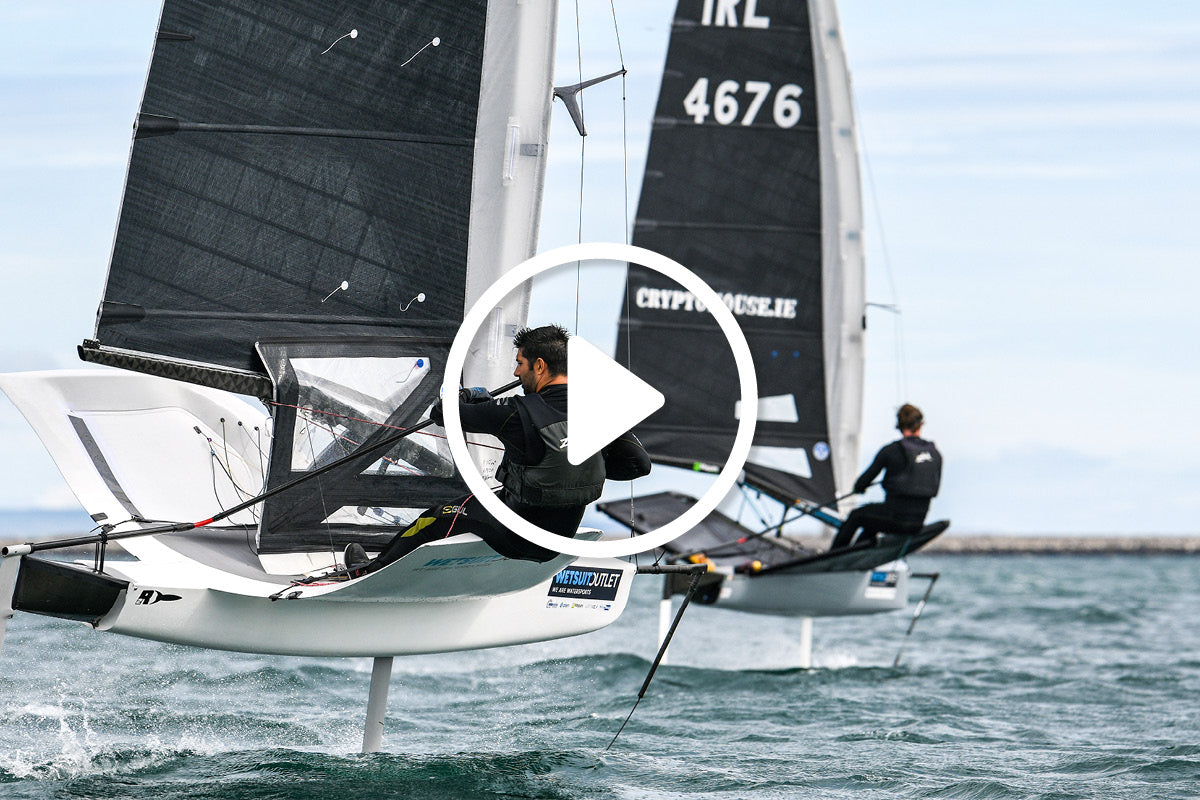
TUNING TIPS FROM THE TOP
TUNING TIPS FROM THE TOP
North 9DSX Moth Sail
Pros at the top of the fleet share how the North 9DSX Moth sail takes them through the range of conditions and their personal tuning tips.
Shop Moth Sails
READ MORE
READ MORE

TOP-LEVEL FOILING: TF35
TF35: FLIGHT CONTROL
A New Class Launches on Lake Geneva
📸 Loris Von Siebenthal
Their take off was a bit delayed but the newly developed foiling TF35 fleet recently met on Lake Geneva for the first of two training weekends. The sessions provide sailors, class organizers and the development team an opportunity to see their vision in action, and trial a format for future regattas. For North Sails, these early training days serve as a chance to analyze the performance of the new TF35 sails.
The TF35 is built on an ambitious design brief; bringing top-level foiling to a wider range of sailors. While the idea of an accessible, high-performance foiler sounds like a strange pairing, a big focus of the training weekend was testing out and then dialing in the boat’s flight control system, which makes the platform more stable and safe. A mere 6 knots of TWS downwind are needed for take-off and the TF35 gets foiling upwind in 8 knots TWS. The flight control system brings stability and safety to the platform, addressing the class’s wish to make a high-performance foiling experience available to more owners.
📸 Loris Von Siebenthal
Lake Geneva is known for varying conditions, but the weekend presented ideal weather for dialing in the TF35. Arnaud Psarofaghis, sail designer and Alinghi co-helmsman said: “Our specific wind conditions on the lake are really challenging in terms of sail range, boat can accelerate quickly, boat speed can vary from 12 to 20 knots within 2 knots of TWS.”
The much anticipated training session saw dream conditions on Lake Geneva, allowing the race committee to complete nine races in winds ranging from 4 – 12 knots. It was a unique opportunity for each of the seven TF35 crews to assess their level and progress within the fleet after training independently over the summer months.
📸 Loris Von Siebenthal
Summarizing the weekend, North Sails Suisse director Pierre Yves Jorand said, “It was a very rewarding weekend we were able to test the TF35 in different sail configurations. The objective of the series is to have boats that offer the great experience of foiling in the typical Lake Geneva conditions. It’s now up to us to optimize the sail combination and boat set up to maximize the level of fun and performance of the boat in the lead up the 2021 TF35 Trophy Championship.”
North Sails has been deeply involved in the development of this new class and our lofts in Switzerland and France worked together to outfit teams with North 3Di.
📸 Loris Von Siebenthal
Patrick Mazuay, North sail designer, member of TF35 Class design team responsible for sail development explains: “We have seen a great improvement already in just one weekend from all of the crews. As one of the sail suppliers, all of us at North Sails are thrilled to see the positive development of everyone on the water. We now have the advantage of the October training session to improve and tweak the sail configuration.”
The overall feeling on sails from everyone involved at the end of the three days training is of great satisfaction, both performance and robustness wise.
Coming up next on October 9-12 is test event #2. Learn more about the class here.
📸 Loris Von Siebenthal
READ MORE
READ MORE
ETNZ AMERICA'S CUP TALK: RSVP
JOIN US FOR A SPECIAL EVENT
An Evening with North Sails & Emirates Team New Zealand
READ MORE
READ MORE
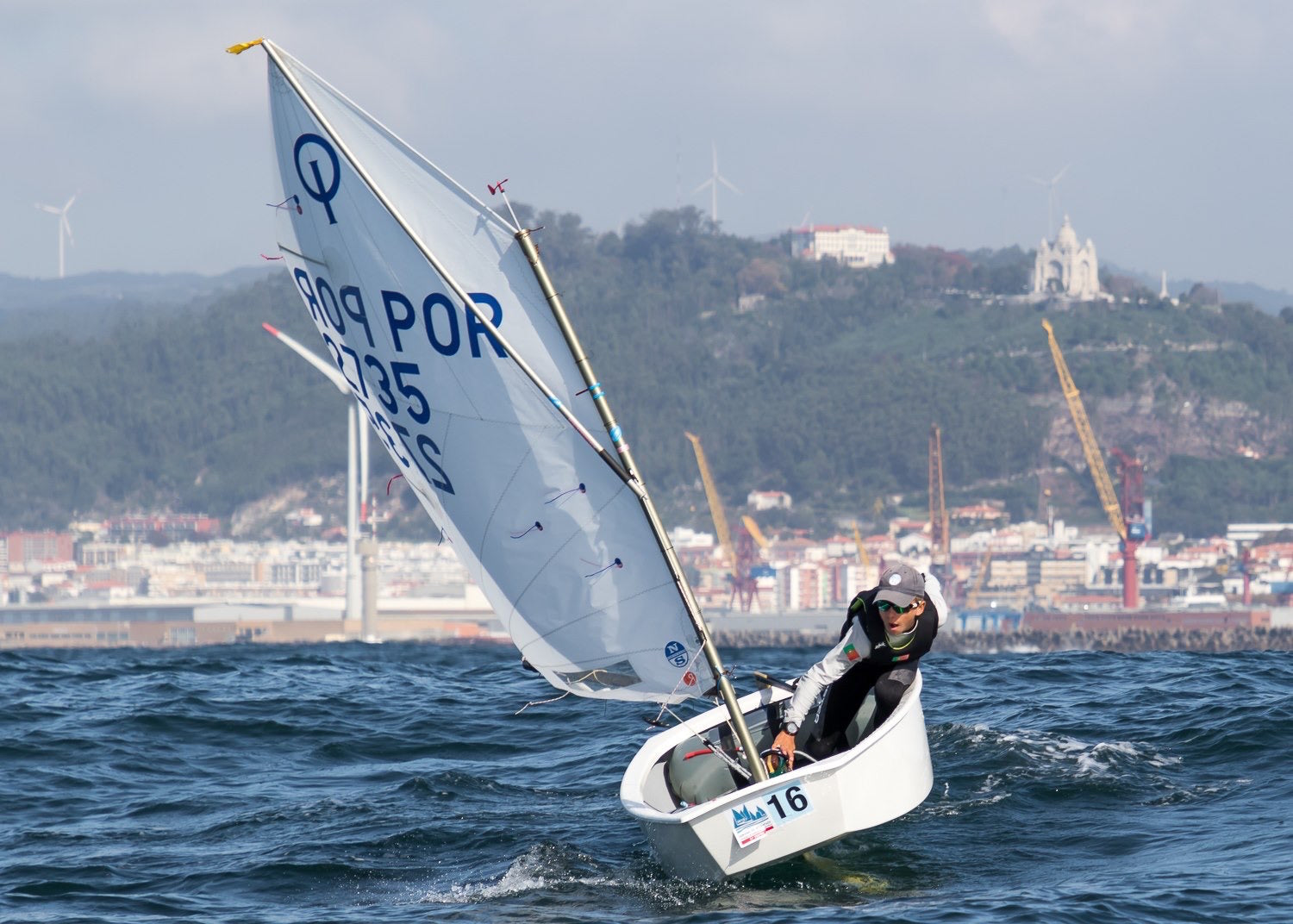
FRANCISCO UVA SAGRA-SE CAMPEÃO NACIONAL DE OPTIMIST
FRANCISCO UVA SAGRA-SE CAMPEÃO NACIONAL DE OPTIMIST
Brilhante prestação do velejador Francisco Uva, o novo Campeão Nacional da Classe Optimist! Muitos Parabéns Francisco!
Francisco Uva 📸 Luis Fráguas
Terminou, ontem, o Campeonato Nacional de Optimist com o velejador Francisco Uva a alcançar o título de Campeão Nacional.
Os velejadores Francisco Uva (Por 2735) e Júlia Cardoso (POR 2651) lutaram taco-a-taco pelo primeiro lugar, durante o decorrer do campeonato, ambos a utilizarem velas R-2.
No Top 6 da Classificação Geral são quatro os velejadores NorthSails. Utilizaram a vela R-2 (Francisco Uva , Júlia Cardoso, Augusto Castelo-Branco) e a vela R-4 (Salvador Baptista-Fernandes). A todos, os nossos Parabéns pelo desempenho e resultados na regata!
Apurados para o Campeonato Europeu estão o Francisco Uva (1ºgeral, 1ºmasculino), a Júlia Cardoso (3º geral, 2º feminino), o Augusto Castelo-Branco (4ºgeral, 2ºmasculino) e o Salvador Baptista-Fernandes (6ºgeral, 4º masculino).
Parabéns a todos os velejadores que participaram no Campeonato, numa época tão particular como esta!
Para qualquer dúvida ou informação sobre a gama de Velas North Sails contactem o Class Expert, Vicente Pinheiro .
Júlia Cardoso 📸 Gonçalo Melo
Augusto Castelo Branco 📸 cedida por Augusto Castelo Branco
Salvador Baptista-Fernandes 📸 cedida por Laura Artiaga
READ MORE
READ MORE
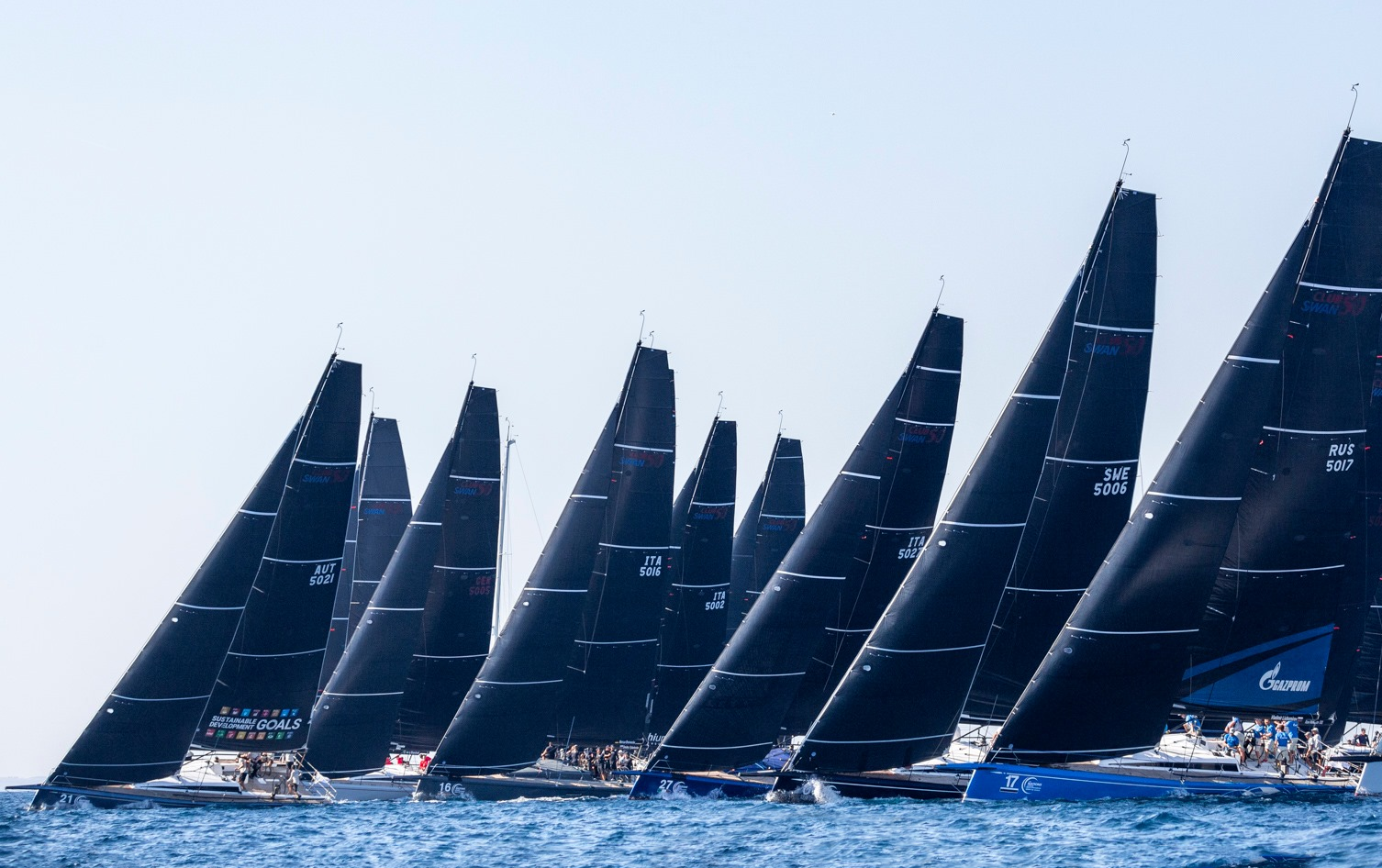
SWAN TUSCANY CHALLENGE
SWAN TUSCANY CHALLENGE
Successful Worlds Warm-Up For ClubSwan 50 Clients
📸 Nautor Swan / Studio Borlenghi
Days before the Swan Tuscany challenge began, owners were rallying their teams as organizers pulled together to put on a successful event. Yachting, in the midst of coronavirus, hasn’t been easy, but members of the class were eager to make the first real event of the season happen, on short notice.
With scheduled events canceled for the class across the calendar this summer, one of those events, the Rolex Swan Cup in Porto Cervo, the Swan Tuscany Challenge was a late addition to the schedule and brought 13 ClubSwan 50 teams to the starting line to battle for a podium finish. The racecourse served as a preview for the extremely close competition ahead of Swan One Design Worlds in Scarlino, Italy in October.
The success of the last-minute event is, no doubt, a testament to the strength of the Swan class and the owner’s dedication to the fleet.
The North Sails ClubSwan 50 Class Expert Arnd Howar on EarlyBird, was thrilled to be back out on the water. He commented, “The biggest highlight was this event coming together in such short notice. For teams to act fast shows the true strength of the ClubSwan 50 class. It is a testament of commitment from each program to get a fleet of 13 boats to the event, and pull off a successful regatta.”
“It was great to see teams spending more time preparing and tuning at the dock to be ready for the Worlds in a few weeks,” said Howar. “The racing was unbelievably close, which shows just how competitive the Worlds will be,” he commented.
Hatari leading the ClubSwan 50 fleet around the offset 📸 Nautor Swan / Studio Borlenghi
“After seeing the fleet together last week, it shows that anyone has a chance, and each team will bring everything they’ve got to win this Worlds,” North Sails Expert Daniele Cassinari onboard Cuordileone commented.
The team had not sailed together for nearly a year, and it was vital for the group racing Cuordileone to get the rig tuned properly and gauge their performance in the fleet ahead of the world’s event.
There were only about 20 sailing days this year for the class, and not all, but most teams were able to take advantage of that, which helped create a cohesive dynamic amongst the fleet.
Howar commented, “I think it shows how strong the class is and how good communication among the owners makes the bond that much stronger. Setting up fleet practices and clinics are unique for the ClubSwan 50 class. The Class wouldn’t have been as successful without Nautor Swan, the boat owners, and crews for their communication that helped keep us together this season.”
Marcus Brennecke’s Hatari, overall winners of the 2020 Swan Tuscany Challenge, Club Swan 50 📸 Nautor Swan / Studio Borlenghi
Tactician Markus Wieser on winning ClubSwan 50, Hatari, is elated with how well the fleet performed in Tuscany. Wieser is a familiar face around the sailing scene. He is involved in many classes, from the J/70 to the Superyacht range. The core team on Hatari sails TP52’s and also together on Maxi 72, Momo.
“Being part of the Swan family for the first time– we felt very welcome. To race in this fleet with 13 boats on the starting line was extraordinary. That’s one design sailing at its best!”
Once August came around, the Hatari team trained together with other teams at clinics, which was vital once Copa del Rey got canceled. Wieser commented, “We were building confidence while sailing in Palma, and so were the other teams. That time in the boat helped us win this first event in Tuscany, and was a great feeling of accomplishment. Things were on point for us. Our crew work, our set up. Our skipper, Marcus Brennecke, did an excellent job driving the boat, too.”
Well matched, highly competitive one design racing for the ClubSwan 50 fleet. 📸 Nautor Swan / Studio Borlenghi
“The competition was very tough,” said Wieser. “We didn’t have it easy. We were always fighting to be in the top-end of the fleet each race.” The ClubSwan 50 fleet is unbelievably tight. Any mistakes made would push you back. Once you lost that one-up, it was tough to get back into range with the race leaders,” said Wieser. “In one-design classes, the boats are practically identical, so everyone is very closely matched. “That’s the best part about this type of racing. It’s an even playing field.”
The Worlds are currently scheduled for October 13-17th, and Hatari plans to be there. Racing location means everything, and the class goes above and beyond when choosing venues that will give sailors the best possible racing conditions. “Scarlino was a superb host for all of us,” said Wieser. “Especially considering they had very little time to prepare for this event.”
North Sails Grand Prix expert Ignacio Braquehais (Nacho) onboard second-place finisher, Stefan Heidenreich’s OneGroup is honored to be a part of the ClubSwan 50 Project, “It’s not only about increasing the number of boats on the line,” said Nacho, “but also to make sure that each team is optimized and at the highest level of competition. We want to share our experiences and help each team evolve, not only in technical ways but also in trimming and tuning.”
“The 2020 Swan Tuscany Challenge was the perfect warm-up after this last COVID lockdown in Italy,” Braquehais explained. “It was apparent that all teams are grateful for the support they’ve received from both the class and North Sails.”
📸 Nautor Swan / Studio Borlenghi
Full Results
READ MORE
READ MORE

3Di POWER FOR THE COBH TO BLACKROCK RACE
3Di POWER FOR THE COBH TO BLACKROCK RACE
Winners of Each Class Set New Race Record
Frank Caul's Prince of Tides, overall winner of White Sails class 📸 Robert Bateman
North Sails clients demonstrated the power of 3Di last weekend in the Cobh to Blackrock Race taking a clean sweep across all the classes. The top two boats in each class used 3Di upwind sails, which drove the leaders to set a new race record. Congratulations to all the winners; we are very proud to be your sail suppliers:
IRC Spinnaker 1
1st: Nieulargo - Denis & Annamarie Murphy 2nd: Miss Whiplash - Ronan Downing
IRC Spinnaker 2
1st: Cracker - Denis Byrne 2nd: Luas - Sean Hanley
White Sails
1st: Prince of Tides - Frank Caul 2nd: Magnet - Kieran O'Brien North Sails Ireland Loft Manager, Nigel Young, took part in the Blackrock Race this year for the first time, so we got his account of the race: "This year's race was a really quick one. It was my first ever Blackrock Race and I was lucky enough to be sailing with Frank Caul and John Molloy on Prince of Tides, the Grand Soleil 37 from the RCYC. Prince of Tides had the fastest elapsed time of all the classes at just 57 minutes and 18 seconds, although hard to compare with Spin 1 as we started 10 minutes after them, but even so, a great performance from the team. North Sails got involved with the Prince of Tides team in November 2019, helping them with a few key bits and pieces over the winter. Then in the spring of 2020, we added two 3Di Endurance 760 sails with a third one on the way. The old sails were very tired and it was really hard to keep the boat in the groove upwind - flat at the front and round in the back is not a great combination. The new sails mixed with the boat modifications over the winter have resulted in a complete change of performance from the boat. It is like sailing a different boat thanks to Mark Mills for his help and advice, as well as the new North sails. Back in Spinnaker 1 Class Nieulargo stuck to their winning ways and it was great to see the family sailing together and sharing the helm between sisters Molly and Mia. There is nothing better than family sailing and it's very nice to be a part of it. Congratulations to the Murphy family for another Trophy race win. Keep up the good work. Nieulargo also uses 3Di Endurance 760 sails for their upwind inventory and the race-winning sail for them this year was the Helix Xi Aramid Code Zero. Talking to Denis after the race, he said the new Zero had won the race for them. They flew the sail from the start of the Foaty Channel almost right up to the Blackrock Castle. It's one of those sails when the wind angle is right, they are unbeatable. I could not finish the report without a shout out for Denis Byrne and the mighty Trapper TS250 Cracker. Denis has been getting faster and faster in that little boat and although he could be a long way back on the water, you can never write him off from the podium! The Blackrock Race was no different this year and Denis won both Spinnaker Class 2 overall as well as the coveted Moonduster Trophy. Congratulations Denis; great work from you and your crew. For more information about North Sails unique 3Di product, please get in touch. See you on the race track!''
Denis & Annamarie Murphy's Nieulargo crossing the finish line, overall winners of IRC Spinnaker 1 class 📸 Robert Bateman
Denis Byrne's Cracker, overall winners of IRC Spinnaker 2 class 📸 Robert Bateman
READ MORE
READ MORE
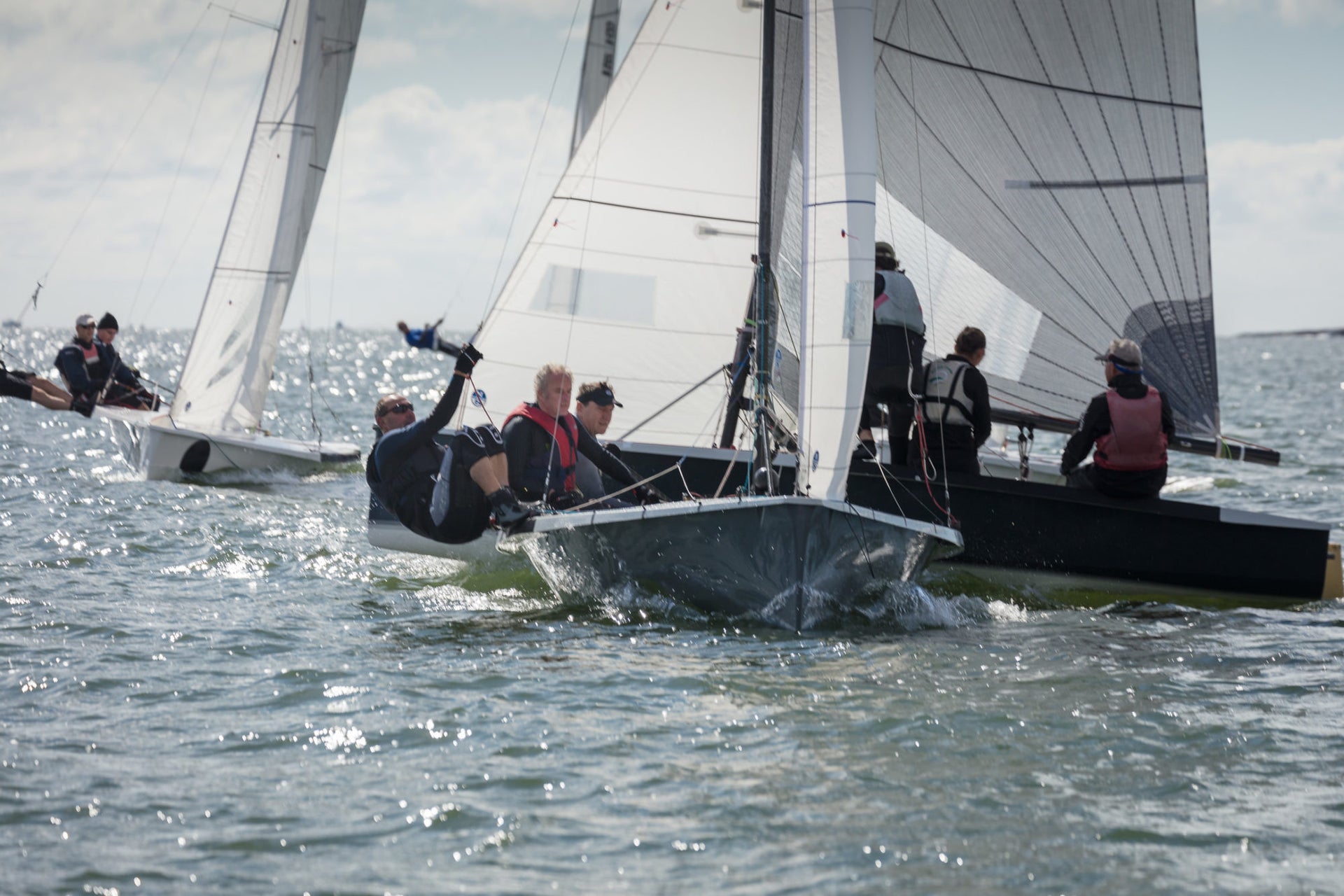
NORTH CLIENTS LEAD THE NATIONAL 18 FLEET
#NSVICTORYLIST: NATIONAL 18's
Clients Sweep The Podium at the 2020 Irish Nationals
Nick Walsh, Rob Brownlow and Eddie Rice, 1st place Irish Nationals
Whilst we were all heading up to Blackrock on Saturday the National 18 Class were holding the Irish Nationals from the RCYC. Reduced numbers this year due to our friend C-19 but no let up in the racing. Talking to some of the sailors after the event on Sunday this was one of the hardest fought Championships in many years.
North Sails have been heavily involved in the class since 2004 and we had a very intense period again in 2015/16 with the development work on the new Morrison Ultra 18. That was great fun out in the freezing conditions with Colin Chapman and many of the other sailors trialing the new designs and working out the new class rules for the sails with my old friend David Chivers.
Out at Roches Point the fleet enjoyed some lovely racing on Saturday under the leadership of the one and only John Crotty. Lots of compliments were coming his way after sailing inside the harbour on Sunday. Well done John for taking such good care of the fleet on the water.
After the eight race series I was delighted to learn that North Sails clients had taken the top three spots overall in the 2020 Irish Nationals.
Congratulations to all the winners:
1st Overall: Nick Walsh, Rob Brownlow and Eddie Rice on 13 points.
2nd Overall: Alex Barry, Andrew Woodward and Grattan Roberts on 19 points.
3rd Overall: Colin Chapman, Eric Lyons and Morgan O'Sullivan on 22 points.
Colin Chapman, Eric Lyons and Morgan O'Sullivan finish 2nd Place Irish Nationals
2020 South Coast Champs
Back at the end of August the class enjoyed their Southern areas and North Sails customers had another clean sweep of the podium.
Congratulations to Alex Barry, Sandy Remington and Richard Leonard for taking the win. 2nd overall this time was Ewen Barry, Stanley Brown and Dion Barrett and third overall Nick Walsh, Rob Brownlow and Eddie Rice. Very close racing again which is one of the big draws for the National 18 class.
Congratulations again to all the North clients performing so well with our sails. We are proud to be a part of your success.
Our 2020 Autumn Savings Deal is currently running so now is a great time to buy your new One Design Sails ready for 2021.
Ready to get the most of your National 18 sailing? Contact us today. We look forward to working with you.
Sail Fast!
Contact the Loft
Colin Chapman, Eric Lyons and Morgan O'Sullivan 3rd Place Irish Nationals
READ MORE
READ MORE

FRANCISCO UVA CROWNED OPTIMIST PORTUGUESE NATIONAL CHAMPION
FRANCISCO UVA CROWNED OPTIMIST PORTUGUESE NATIONAL CHAMPION
After A Fantastic Performance in Vilamoura
Francisco Uva 📸 Luis Fráguas
The Portuguese National Championships finished last weekend in Vilamoura. Francisco Uva (POR 2735) and Júlia Cardoso (POR 2651) fought very closely for first place, with Uva taking home the title. Alongside four of the top six finishers, both Uva and Cardoso were powered by North, using the R-2 (Francisco Uva , Júlia Cardoso, Augusto Castelo-Branco) or R-4 (Salvador Baptista-Fernandes) designs.
Congratulations to all sailors who took part in the Championship! Talk to your local Optimist class expert for more information on the North Sails Optimist range.
Júlia Cardoso 📸 Gonçalo Melo
Augusto Castelo Branco 📸 cedida por Augusto Castelo Branco
Salvador Baptista-Fernandes 📸 cedida por Laura Artiaga
READ MORE
READ MORE

#NSVICTORYLIST: ELLIOTT 5.9 NATIONALS
NORTH CLIENTS DOMINATE 2020 ELLIOTT 5.9 NATIONALS
3Di Sweeps the Top Three in New Zealand
Rough & Reddy to windward, Smak in the middle, Slam Dunk to leeward. 📸 NZ Elliott 5.9 Class Association
North Sails filled the top podium at the New Zealand Elliott 5.9 Nationals last weekend. All three teams used 3Di OCEAN 330 mainsails and jibs.
This was one of the closest finishes the class has seen in many years. Congratulations to clients Crag Satterhwaite and team on Rough and Reddy, edging out Kevin Peet's Smak to win the regatta on count back. Only a few points behind in third was Stu Clarke's team Slam Dunk. Congratulations to all on great sailing!
Have questions about upping your game at the next event? Contact your local Elliott 5.9 expert Derek Scott and make the most of your time on the water.
READ MORE
READ MORE

CUSTOMER SPOTLIGHT: HAVOC
CUSTOMER SPOTLIGHT: HAVOC
Finding Balance Between Cruising and Racing
Local North Sails expert Drew Mitchell catches up with Joey Drake, owner of Havoc, a C&C SR 33 out of Vancouver.
Joey you have just upgraded sailing vessels. What was the decision maker on upgrading and purchasing Havoc ?
I've always wanted a more serious race boat of my own, one that was large enough for a crew, and something I could spend the night on. I had been saving up and when I saw Havoc for sale, it checked all the boxes. She was well cared for, fast, and came with a ton of gear and a huge quiver of sails. Despite COVID starting up, it was actually good timing for me financially as well. When I met the previous owner, I could tell he was as passionate about sailing as I am and knew he had treated the boat right.
You purchased this boat during a global pandemic. I know you bought it locally but did you have any issues with the purchase due to the state of pandemic ?
I was curious to see if COVID would hinder or help the process at all, but it didn't seem to be a factor. I had some warnings that I might not be able to get a survey or that we wouldn't be able to have a proper sea trial, but it all worked out with pretty minimal headache. The only real bummer about buying a race boat in the middle of a pandemic has been all the regattas being canceled!
Havoc is a pure racer but with many local races and regattas not happening this summer did you decide to take her cruising? If so where and what did you get up too ?
The silver lining to having fewer regattas this summer has been all the exploring of BC's many cruising destinations. We have capitalized on all the free weekends and sailed to many beautiful spots that I have only talked about going to before. I owned the boat for less than a week and we were already setting a course to the Gulf Islands, our first cruising spot. We spent some time anchored in Galiano Island, then over to Wallace Island. Since then we've made our way up the Sunshine Coast, spending a long weekend in Smuggler Cove, meandered around Bowen Island, cruised up to Gambier Island for an SSYC event, and just returned from a long weekend in Gibsons. Along the way, we always take the opportunity to get to know the boat and practice maneuvers.
With Havoc being a racer obviously cruising is a bit different. Tell us some ways/things you may have done to set up Havoc so you could get away cruising with her ?
My girlfriend grew up in New Zealand cruising her family's yacht around. She loves her time relaxing in a cove somewhere, and I am convinced she would live her whole life at anchor (or sailing to the next anchorage) if possible. My passion however, is racing, so we figured it was easier to cruise a race boat than it would be to try and race a cruiser. I like to heel without hearing half my belongings tumbling around down below. She set to work "cruising" up the boat immediately. She starting planning the new cushions and cookware sets before I even purchased the boat. Although there isn't much space down below for lounging or cooking, there's a ton of deck space, so we have focused on making that area comfortable while cruising. We got a BBQ that can easily dismount when we want to feel less cruisey, a new stereo system, some outdoor pillows to make seating more reasonable, and figured out a way to stow multiple bicycles below. It still feels a bit like camping, but it's more than fine with us!
This spring/summer you took charge and ran some competitive cruises around Vancouver through the online Sea Sloth Yacht Club. Can you tell us a little about how this all came about and what the Sea Sloth Yacht Club mission is?
We Sea Sloths have always focused on inclusivity when it comes to sailing. Since most regattas and sailing events were being canceled this year, it ended up being a great way to get the word out about the group. We first came up with the idea for "Competitive Cruising" when the Martin Marine Round Bowen Race date came up. We wanted to sail, and we knew others did as well, so we just picked a couple marks on opposite shores as a start line and put the word out on Facebook. We wrote some very relaxed "sailing instructions", but with only four days' notice, we didn't know if anyone would show up. We ended up with 18 boats on the start line! People seemed to have a lot of fun, so we ran with it and put together some more events, but with more organization and planning. The whole idea has always been to get people on the water, and help erase some of the perceived barriers into the sport. It's low-stakes racing where everyone is invited, no matter what kind of boat or experience you have. The events are designed to give people space, and make the courses as user-friendly as possible to encourage sailors who might be new to racing.
Do you have any Sea Sloth YC competitive cruises planned for the near future and how do people get involved ?
Absolutely! We are currently planning another cruise with an overnight anchor, as well as something a tad more spicy for those round-the-can types. With some of the local clubs starting to host actual events again, we took a short break, but the Sea Sloths are here to stay! The goal of including new sailors and new boat-owners hasn't changed, so we will continue to find new ways to encourage folks to cast off the dock. You can find out more about the club on the website, seaslothyachtclub.com, or on the facebook group. There's also a club-wide WhatsApp group where everyone is free to share cruising ideas.
Once sanctioned racing and regattas gets going again where and what events do you plan to race Havoc in?
Everything! One of the reasons I wanted my own boat was so that I could really attack the schedule and get out there often. I want to improve my skills as a sailor and especially as a skipper. My girlfriend and I managed to compete double-handed in the Jack and Jill regatta recently, which is no small task with running backstays. We have another double-handed race coming up, the Ken & Barbie regatta, and I just entered the boat in the Howe Sound Regatta later on in the month. As soon as weeknight racing picks up again, you'll see Havoc ripping around the course.
After a full summer with the new boat do you have any current projects or upgrades you plan to do with her ?
Havoc is beautiful and in great shape, but she's still 25 years old, so that of course comes with some projects. First items on the list are some new paint on the bottom, some new runners and halyards, and a bit of a "re-branding." Havoc has a long history racing in the area, so we wanted to keep the name, but my girlfriend is a graphic designer and she designed a new graphic for the name to spruce things up a bit. We are both pretty excited about that.
What was your favourite memory so far with Havoc?
The first time I ever touched the helm after buying the boat was for a practice race in English Bay. Vancouver is generally a light-air venue, but this day it was blasting 28-30 kts with steep wind waves. The whole crew was a bit nervous, having never sailed the boat before and half were new to sailing altogether. People kept asking "Should we do this?" We stuck it out and had an absolutely amazing day. We were late to the start while we fiddled with reefing the 3Di main, but rejoined the fleet quickly. On the way upwind, we decided not to attempt the kite, but once we rounded the windward mark, we couldn't help ourselves. Up went the fractional asym, and we rocketed downhill at a steady 13kts while surfing waves. My face hurt from smiling so much. We were all soaked from water spraying up over the deck, and we were all happy as could be. I am sure there will be higher speeds and many more memories down the road on Havoc, but that moment will be one of my favorites for years, I imagine.
READ MORE
READ MORE
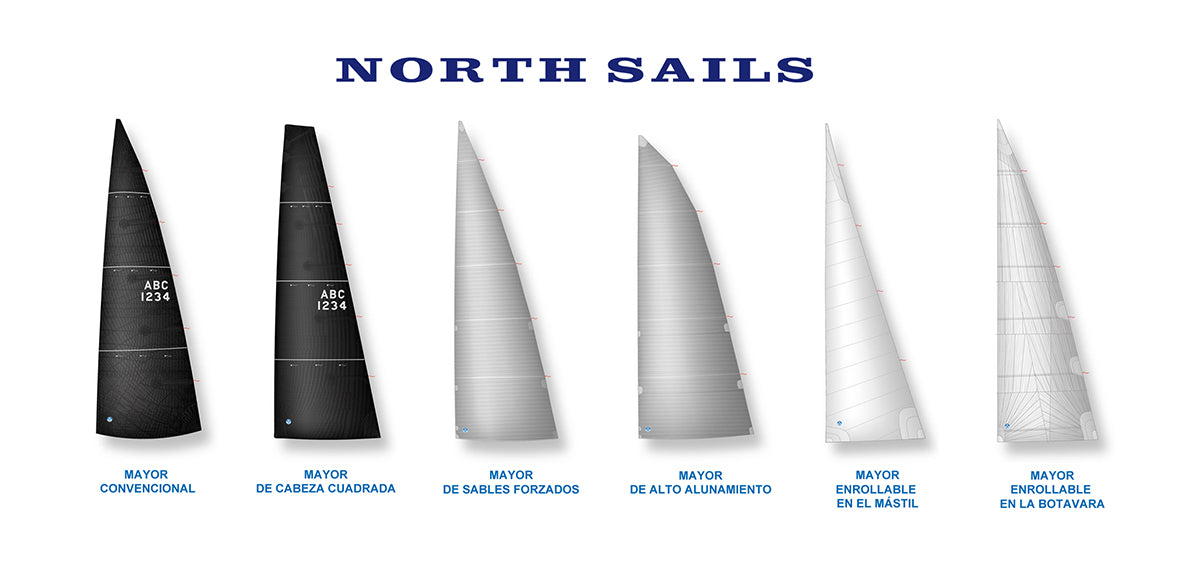
Consejo North Sails
CONSEJO NORTH SAILS
Hoy hablamos de mayores
La vela principal de cualquier velero, tanto de crucero como de competición, puede combinarse con diferentes diseños, materiales o sistemas de izado en función del uso, las características del barco o las preferencias de su armador.
Mayor convencional
Cuenta con uno o dos sables altos forzados y sables bajos de baluma.
Mayor de cabeza cuadrada
La vela de elección en regatas grand prix. Su área superior cuadrada permite un twist progresivo altamente eficiente, un arrastre inducido menor y una distribución optimizada del área de la vela.
Mayor de sables forzados
Los sables cubren desde la baluma hasta el grátil, mejorando el control de la forma y reduciendo el flameo, lo que redunda en una mayor durabilidad.
Mayor de alto alunamiento
Su perfil se encuentra entre el de una mayor convencional y una de cabeza cuadrada, y es la vela de elección para multicascos. Ofrece buenas prestaciones en brisas ligeras y navegación de través.
Mayor enrollable en el mástil
Requiere un diseño personalizado, con o sin sables verticales y un sistema de enrollado que garantice su perfecto ajuste dentro de la cavidad del mástil.
Mayor enrollable en la botavara
Requiere un diseño personalizado y un sistema de enrollado que garantice su perfecto ajuste dentro de la cavidad de la botavara.
Las mayores North Sails están disponibles en diferentes materiales en función de su uso: NPL, NPC y 3Di.
Contacta con nuestros expertos para que te asesoren sobre la mejor elección para tu barco.
READ MORE
READ MORE
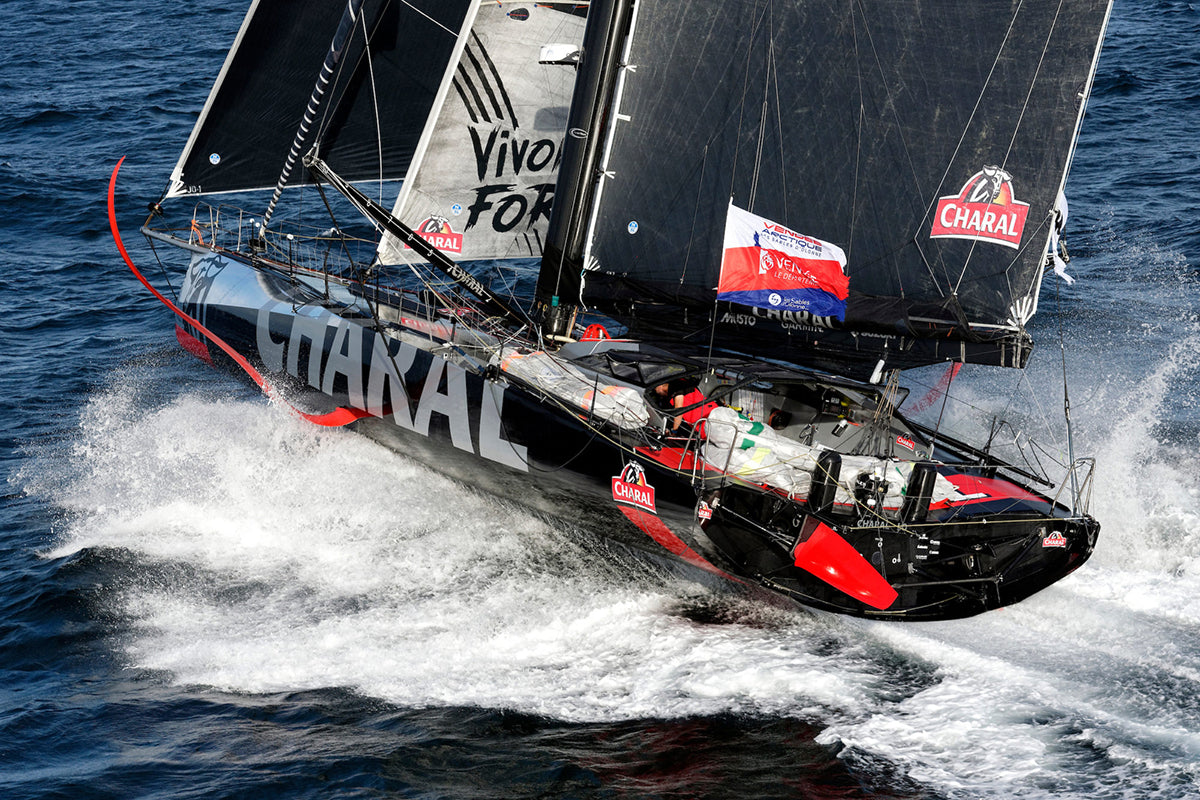
LAS VELAS DE LA FLOTA IMOCA
LAS VELAS DE LA FLOTA IMOCA
El próximo 8 de noviembre partirá de Les Sables d’Olonne la BB edición de la Vendée Globe
© Jeremie leCaudey
North Sails es la velería elegida por tres cuartos de la flota IMOCA: 17 equipos equipan inventarios completos de la velería y otros siete cuentan con inventarios parciales. La regla de clase IMOCA limita a ocho el número de velas en competición, y cada equipo decide el diseño y particularidades de cada una de ellas en función del diseño y configuración del barco y su aparejo, las preferencias del patrón y su estrategia para afrontar la vuelta al mundo en solitario. North Sails diseña las velas a medida para cada equipo, fabrica su estructura 3Di en la velería de Minden (Nevada, Estados Unidos) y las finaliza en la velería de Vannes (Francia).
READ MORE
READ MORE
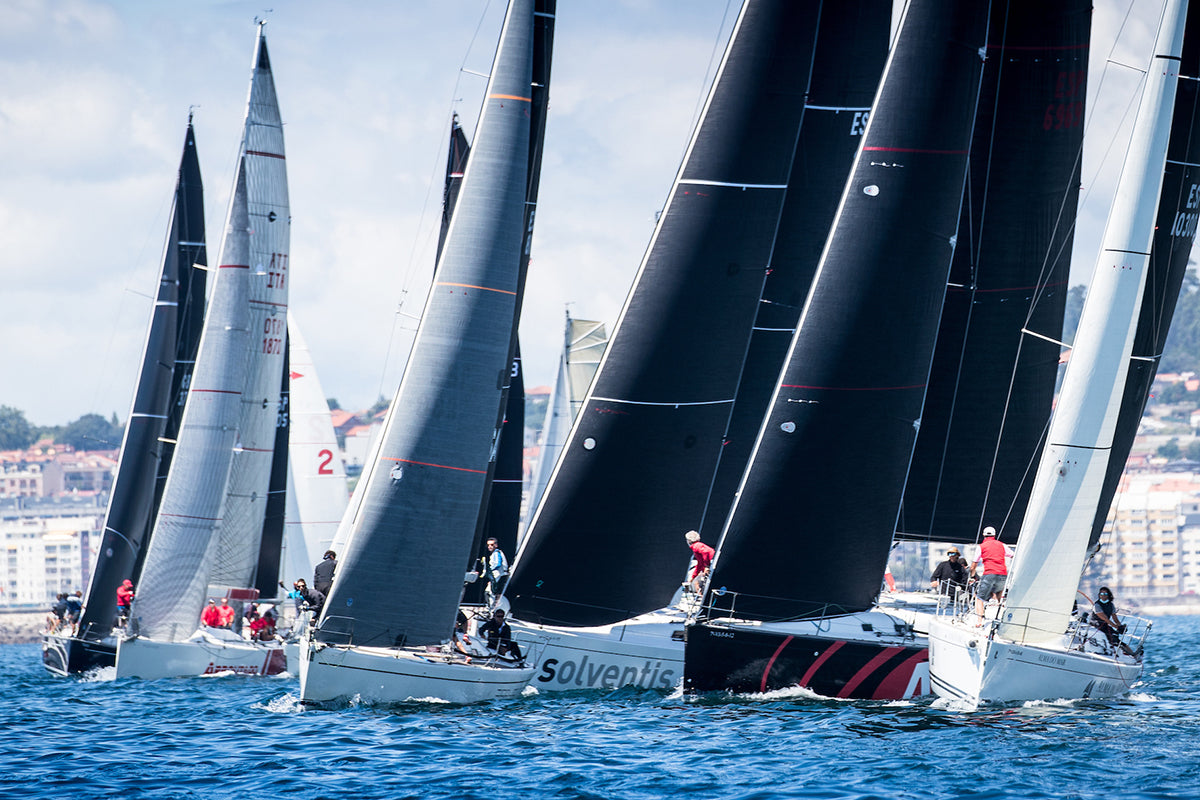
NORTH SAILS COPA EL PODIO DE LA MAR DE MAELOC RÍAS BAIXAS
NORTH SAILS COPA EL PODIO
Barcos equipados con inventarios North Sails dominaron la regata Mar de Maeloc Rías Baixas, una prueba de cuatro etapas disputada entre el 12 y el 15 de agosto en la costa sur de Galicia.
© María Muiña
La clasificación combinada erigió campeón absoluto al First 44.7 Aceites Abril de Jorge y Luis Pérez Canal, por delante del Elan 37 Bosch Service Solutions patroneado por Ramón Ojea y el Grand Soleil 37 B Antílope de José Luis Alonso con Jorge Martínez Doreste de táctico, todos ellos equipados con velas North Sails.
¡Enhorabuena a todos y gracias por confiar en North Sails!
READ MORE
READ MORE

DOMINIO EN MODO ULTIME
DOMINIO EN MODO ULTIME
El trimarán de 32 metros de eslora Maxi Edmond de Rothschild se impuso en la batalla de titanes en la Drheam Cup, regata de 750 millas náuticas entre las localidades francesas de Cherbourg-en-Cotentin y La Trinité-sur-Mer.
© E. Stichelbaut / polaRYSE / Gitana
El barco del equipo Gitana copatroneado por Franck Cammas y Charles Caudrelier fue el más rápido de los diseños Ultime, completando el recorrido en 21 horas, 30 minutos y 33 segundos, dos horas por delante de su inmediato perseguidor, el Sodebo.
Tercero finalizó el Actual, completando un podio copado por inventarios North Sails. La Drheam Cup es la única regata programada por Gitana como preparación para su asalto al Jules Verne Trophy, la circunnavegación del planeta cuyo récord actual de 40 días, 23 horas y 30 segundos estableció en 2017 el IDEC de Francis Joyon con velas North Sails.
READ MORE
READ MORE
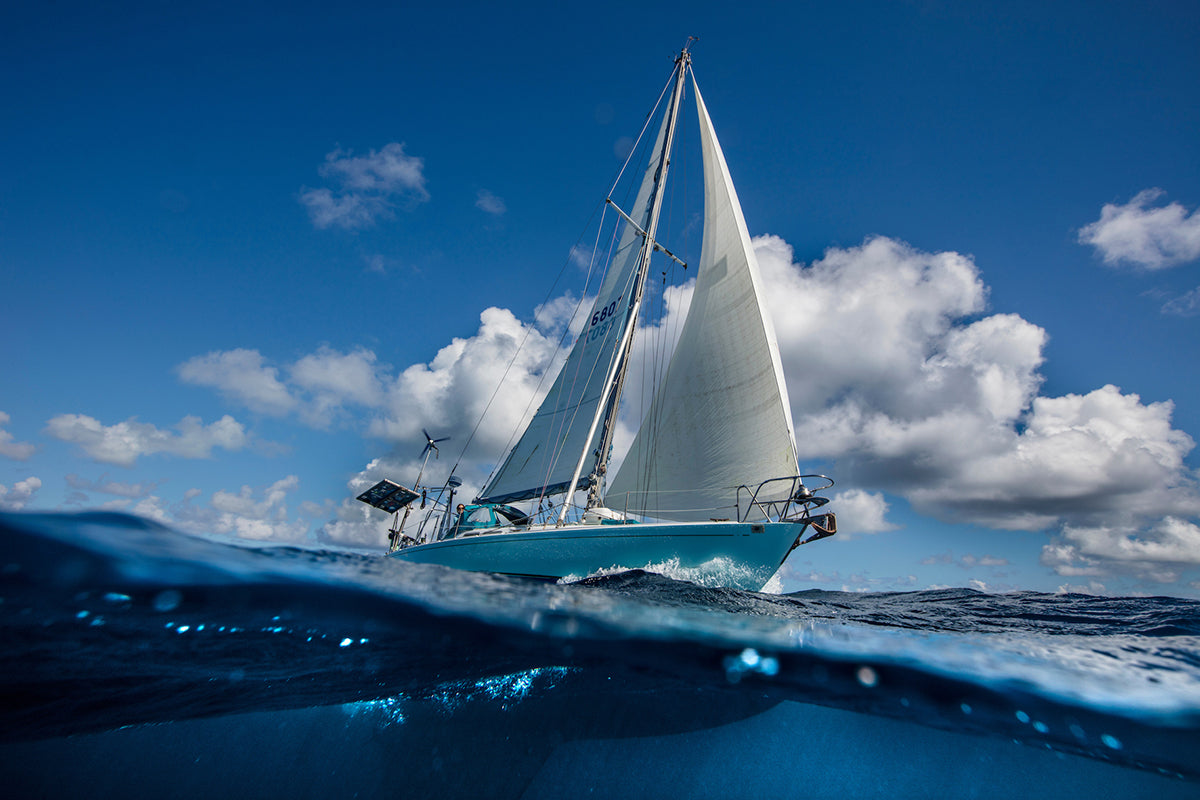
VELAS NACIDAS PARA EL CRUCERO
VELAS NACIDAS PARA EL CRUCERO
La navegación de crucero requiere velas específicas que aporten fiabilidad, durabilidad y facilidad de uso.
El catálogo de la velería North Sails ofrece su gama específica Cruising con soluciones a medida para cada barco y las preferencias de cada armador, siempre con la garantía de una navegación rápida, con menor escora, menor carga de timón, menor abatimiento, gran facilidad de trimado y una prolongada vida útil. Seis décadas de experiencia en diseño, ingeniería y fabricación de velas permiten a North Sails contar con un extenso catálogo que abarca en eslora desde pequeñas embarcaciones de vela ligera hasta los más colosales superyates y en utilización desde embarcaciones de recreo hasta trimaranes voladores de competición oceánica. Dentro de este denso y extenso universo de referencias, la velería propone su gama Cruising específica para navegación de crucero, una familia de productos que combina diseños a medida con los mejores materiales de la factoría North Sails, desde el tradicional poliéster hasta el revolucionario 3Di. Literalmente, una respuesta a cada necesidad. La gama Cruising se caracteriza por su compromiso entre durabilidad, polivalencia y prestaciones. Un extenso dosier que cuenta con una amplia oferta de mayores (estándar, de sables forzados, con alto alunamiento, enrollable en el mástil y enrollable en la botavara), génovas/foques (preferiblemente enrollables para navegación de crucero) y velas de rumbos abiertos (especialmente Gennaker, un spinnaker asimétrico fijado a la proa o al botalón que no requiere tangón ni aparejos especiales), con la posibilidad añadida de adaptar el diseño de las velas a las preferencias de cada armador, una capacidad de personalización que garantiza la satisfacción del cliente. La importancia del material Para elegir la vela adecuada a nuestro barco, resulta clave identificar qué material responde mejor a nuestras necesidades. En navegación de crucero priman factores como durabilidad, fiabilidad, polivalencia y capacidad de adaptación a un amplio rango de condiciones de viento y mar con ajustes de trimado fáciles y menos frecuentes. La gama North Sails Cruising basa su oferta en tres materiales: NPC, NPL y 3Di. NPC es el acrónimo de North Panel Cloth, y agrupa a la familia de productos de tejido de poliéster North Sails. Las velas NPC se dividen en Cross-Cut (confeccionadas con tejido NorDac Fill de trama de poliéster de alta tenacidad), Radian (que ofrece menor estiramiento y mayor rendimiento que cualquier otro tejido de poliéster no laminado, exceptuando la 3Di Nordac) y Downwind (específica para portantes). NPL, o North Panel Laminate, engloba a las velas laminadas de crucero. En función de las necesidades del armador, la gama ofrece versiones TOUR (construcción en sándwich de aramida negra de corte radial con laminado Xi Cruise), TOUR ULTRA (construcción en sandwich de dyneema o de dyneema/carbono para barcos de mediana y gran eslora respectivamente) y Downwind (laminados de poliéster o de aramida, recomendados para velas portantes de rumbos cerrados tipo G-Zero). 3Di son las siglas mágicas que lucen las velas de los más avanzados barcos de competición, pero que también están disponibles en versión crucero bajo la denominación 3Di OCEAN. La 3Di OCEAN 330 es un producto revolucionario que reinventa la vela de dacron, combinando las propiedades únicas de las velas de composite 3Di con la conocida fibra de poliéster, resultando en una innovadora vela de crucero sin costuras, con una forma aerodinámica más suave y estable que ofrece una mejora en el control, la comodidad y la velocidad; un compromiso nunca antes visto entre coste, prestaciones y durabilidad. La 3Di OCEAN 370 es un híbrido de poliéster y Ultra PE, creada para satisfacer las necesidades únicas de los barcos de crucero en el rango de 35 a 60 pies, tanto para monocascos como para la creciente comunidad de cruceros multicascos. La 3Di OCEAN 700 utiliza la proporción más alta de Ultra PE de toda la gama 3Di (Ultra PE cuenta con mayor grado de elasticidad que el carbono o la aramida, ofreciendo un mayor margen de seguridad frente al flameo, los roces y el plegado), lo que le confiere una imbatible combinación entre facilidad de uso y manejo al reducir volumen, peso y rigidez, pero sin comprometer los altos niveles de robustez y fiabilidad característicos de las velas de composite moldeado 3Di. Como importante valor añadido, el equipo de expertos de North Sails España ofrece su asesoramiento a la hora de elegir el inventario idóneo para nuestro barco, aportando su experiencia en elección de materiales y diseños, y proponiéndonos la configuración más adecuada a nuestras necesidades para conseguir la mejor experiencia en navegación de crucero. Todos los detalles sobre la gama North Sails Cruising están disponibles en North Sails.
READ MORE
READ MORE

THE LAST WARM-UP BEFORE THE VENDÉE GLOBE
THE LAST WARM-UP BEFORE THE VENDEE GLOBE
Less Than Two Months To Go!
With less than two months to go before the start of the Vendée Globe, the IMOCA skippers are taking one last chance to measure themselves in the warm-up finale, the Défi Azimut.
The Défi Azimut is a competition born in the heart of the Lorient Sailing Valley (based in Brittany, France), the cradle of offshore racing and technology, and “a breeding ground for skills”, as Jean-Marie Corteville, creator of the Défi Azimut and President of Azimut, points out.
Created at the initiative of the IMOCA class, the Défi Azimut brings together the skippers of the Vendée Globe, and the Lorient based company Azimut, with the mission of combining performance, innovation, and strategy, in the image of what the Sailing Valley conveys. Since its launch in 2011, it has not denied its success and has brought together more than 70 sailors, including the winners of major competitions.
It serves as a dress rehearsal before the major transatlantic races that punctuate the nautical calendar from year to year, the Transat Jacques Vabre and the Route du Rhum, and the prestigious quadrennial Vendée Globe set to begin on November 8, 2020.
20 IMOCAs, with 15 foilers, are participating in the 2020 edition of the race. The race began on September 9th with the speed run, a pure speed trial along a 1.5-mile course. A spectacle to view from the shore, these runs are a chance for the teams to push their boats, sails, and spectators’ heartbeats to the limit.
Jérémie Beyou (Charal, defending champion), Thomas Ruyant (LinkedOut), Kevin Escoffier (PRB), Clarisse Crémer (Banque Populaire), Sébastien Simon (Arkea-Paprec), Charlie Dalin (Apivia), Isabelle Joschke (MACSF), Armel Tripon (L’Occitane en Provence), Alan Roura (La Fabrique), Romain Attanasio (Pure – Best Western), Fabrice Amedeo (Newsrest Arts & Fenêtres) and Giancarlo Pedote (Prysmian Group) are among the competitors of the 10th edition of the Défi Azimut and are equipped with North sails.
📸: Ronan Lafaix – L’Occitane en Provence / Défi Azimut
Whether aboard their latest generation foiling monohull or older boats, the IMOCA skippers look forward to this post-summer challenges as they resume their regular training schedules, The Défi Azimut is comprised of three major events over five days:
The Speed Run: Crewed speed trials to try and set the best time. Several possible attempts (between 2 and 4) for each of the crews composed of a maximum of eight people.
48H Azimut: The flagship race within the event, the 48 hour, 500-mile single-handed race allows for a media man/woman on board to allow the public to experience the daily life of the sailors.
Chrono Tour du Groux: The record of the round the island of Groix with a reduced crew. The record is held by French sailor Vincent Riou in 2015, who covered 17 miles in 1 hr 8 min 10 seconds.
This varied and intense race format will allow the performance of the boats to be evaluated and serves as a showcase to measure the technological differences. For 2020, the technology challenge is paying attention to the foils, and how they interact with the daggerboards, which continue to prove their worth. All eyes will also be on the skipper’s choice of sails which is just as important as the adjustment of the foils, especially when reaching and downwind.
Such a high-caliber race offers the competing teams the opportunity to carry out final equipment checks, make the final adjustments, and validate their choices before the big show. It will also allow sailors who were unable to compete in the Arctic Vendée last July to put their cards on the table and assess their level.
“Every time the Kiwis, Australians, or English pass through here, they are impressed. The Défi Azimut is equal to Lorient, which has become the world center of ocean racing,” commented Malouin skipper Kevin Escoffier (PRB), 2nd in the 48-hour race in 2019.
Sanitary measures will be put in place to ensure the smooth running of the event. Fans can stay up-to-date on the action here.
📸: Yann Riou / PRB
READ MORE
READ MORE
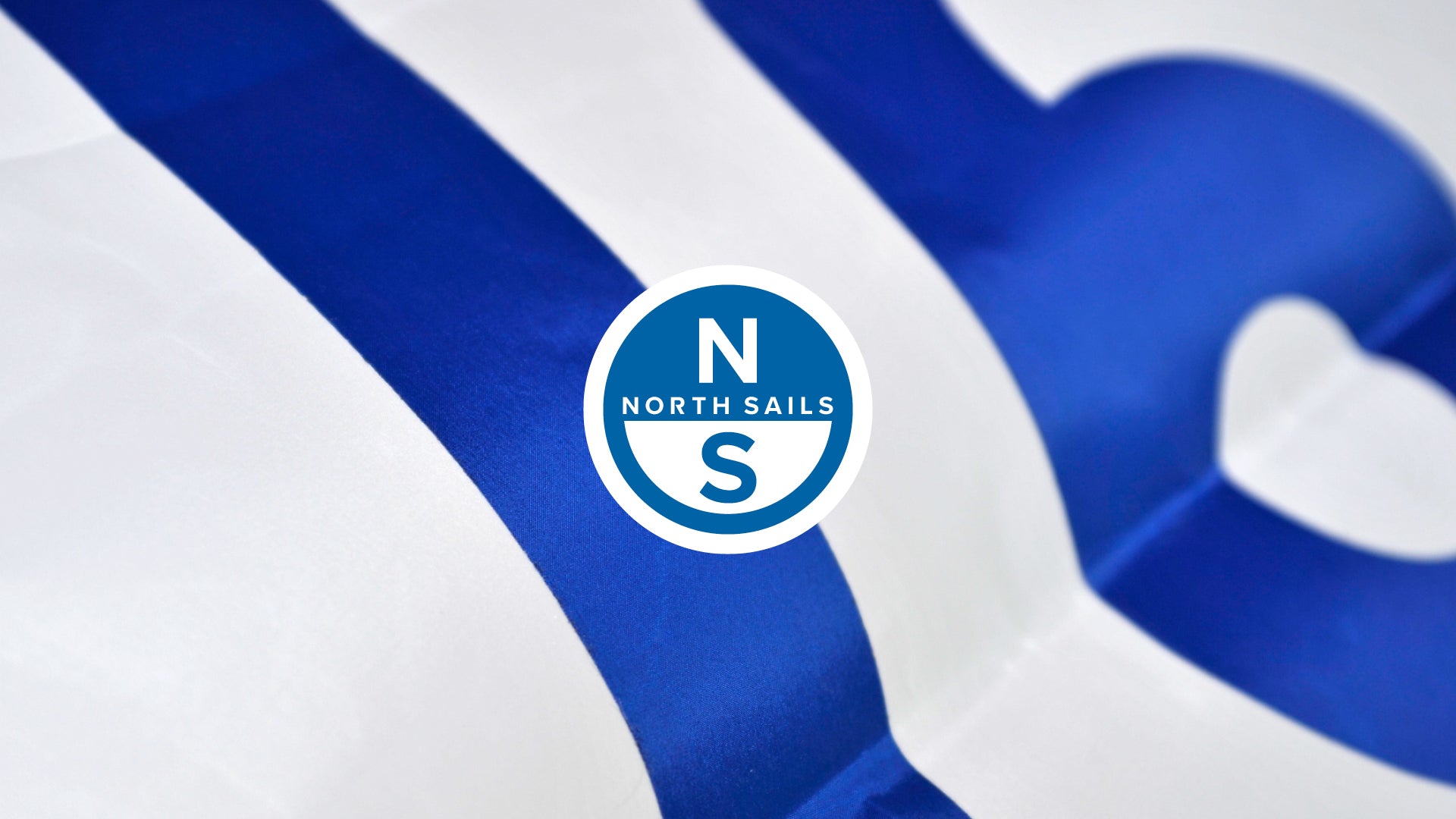
NEW VIPER 640 TUNING GUIDE RELEASED
Experts Share Fastest Numbers for the Vipers
North Sails Viper 640 experts, led by reigning World Champion Jackson Benvenutti and former World Champion Zeke Horowitz with help from Annapolis NOOD Champion Austin Powers, have been hard at work updating your Viper 640 North Sails Tuning Guide. This guide features key updates to make sure your speed stays consistent with the fastest teams in the world.
What’s New?
You will find a new measurement for a shorter headstay, an update on mast butt placement, and hear about new techniques for using your mast blocks and lower shrouds to control headstay tension. You will also discover updated guides for weather jib sheeting as well as how that relates to the vang and cunningham settings. As always, this guide serves to get everyone in the ballpark for world championship caliber speed. Your North Sails experts are eager to help you dial-in and fine tune so you and your team can be set up for success.
Contact us any time! We look forward to helping you achieve your goals.
Contact Your Class Expert Open Tuning Guide
READ MORE
READ MORE
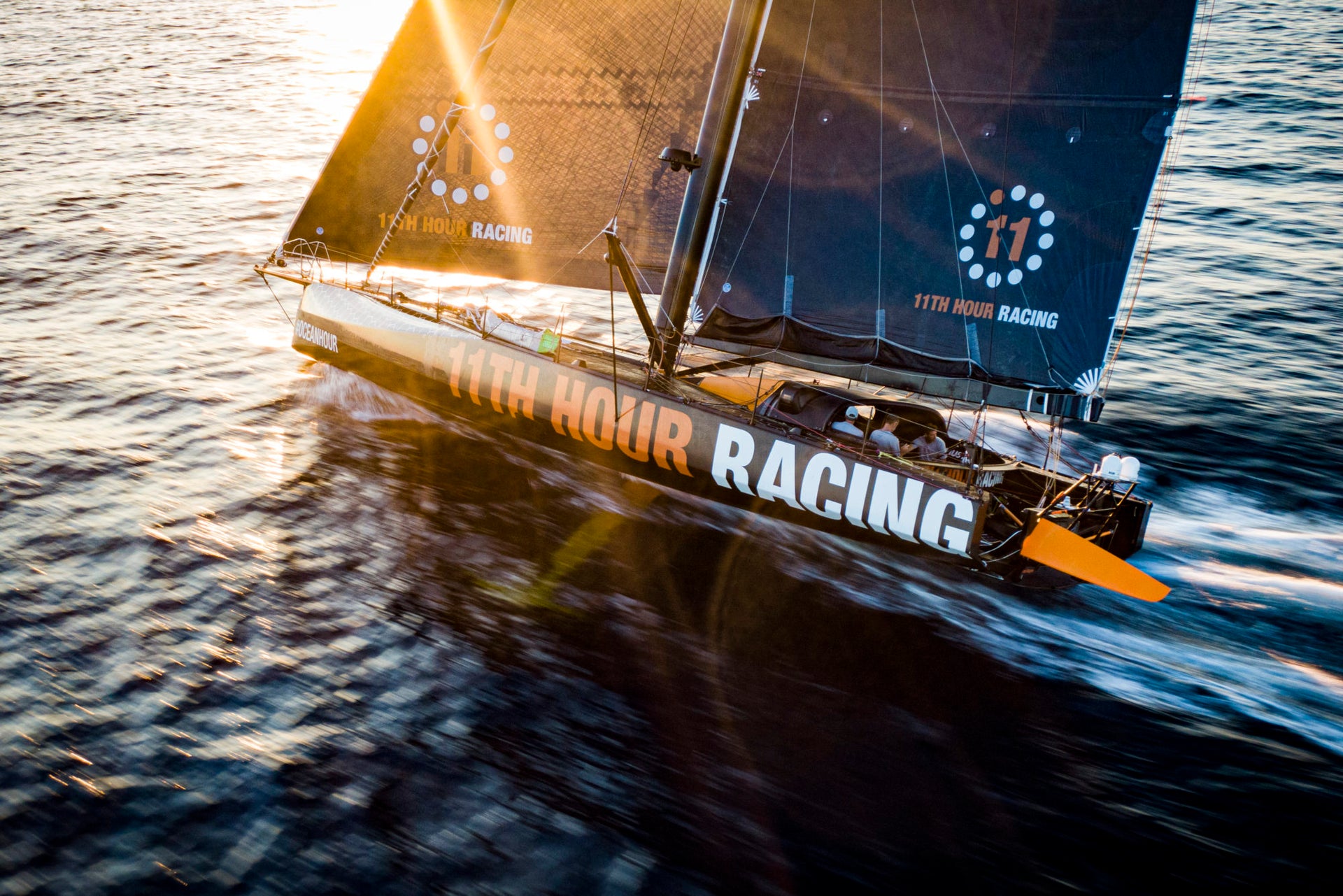
KEEPING UP WITH CHARLIE ENRIGHT
KEEPING UP WITH CHARLIE ENRIGHT
North Sails Caught Up With the 11th Hour Racing Skipper on His Transat Delivery and Prepping for The Ocean Race Summit in Newport, RI.
📸: Amory Ross | 11th Hour Racing.
Charlie Enright is a busy guy if he’s not gearing up for The Ocean Race learning his new IMOCA platform, he’s spearheading a sustainability campaign or collaborating with his team. North Sails managed to secure a few minutes with the 11th Hour Skipper ahead of The Ocean Summit in Newport and training on Narragansett Bay.
North Sails: Tell us about delivering the boat to Newport.
It was an eventful delivery with a new foil: it was wet, it was wild, it was upwind. It felt like a totally new boat with the new foil. Life onboard was tough, too – there were six of us, and there’s not much room down below! It’s a wild beast and it will take a while to tame. When you are down below, you feel like you are in a torture chamber, but up on deck, it’s a bit better than that. The living arrangements are something we need to work on, particularly on long trips.
You’ve gone around the world several times now. You’re learning a new boat. How has that been for you? Stepping away from the Volvo 65 and jumping into the IMOCA Class?
In our last two trips around the planet, we were racing in one-design boats so the IMOCA brings a level of development that we’re not familiar with. The design and the technological aspect is certainly a big step up, but one that we’re embracing and immersing ourselves int. The journey so far has been really rewarding.
📸: Amory Ross | 11th Hour Racing.
As far as being hands-on with designing the boat and the sails, what have you picked up that’s different from your last two campaigns?
Well, it’s always a fine line between science, naval architecture, engineering, and then feedback from onboard. So I think managing that relationship is key. Making sure that everyone is getting the information they need to make the best decisions. From there, we test and ratify those decisions on the water, essentially in the form of boat speed.
What is an example of a project you’ve worked on with North sail designers? What kind of adjustments are made in the typical sail design process?
Whether it’s sail shapes or sail sizes, there’s the science that goes into it. Then you have to construct it and then go out there and do the work. So I’d say that right now, we’re more in the geometry phase opposed to the finer details. We’re painting with a broad brush right now before we jump into the nitty-gritty because there’s just so much that you can explore with tack locations, heights, areas, overlaps, LPs. We’re going big in these beginning stages as the race start is two years away.
You’ve been a team leader during this entire process. How have you stepped up in a different way from a one-design platform with the rest of your group to getting your team on the same page while you’re also learning too?
The depth of what we’re doing is much, much greater. At this point, it’s not about, do we go left or do we go right, it’s about when going left or going right what kind of foils are we going to have? What kind of sails are we going to have? The number of decisions that need to be made has increased probably 100-fold, so managing that process has certainly been challenging at times and definitely a step up from where we’ve been in the past.
📸: Amory Ross | 11th Hour Racing.
A popular question from our audience: During the TransAt, did you have the opportunity to do any speed testing? What was the top speed you’ve seen on the boat so far?
Because we were upwind all the way over, we didn’t see the speeds that we’d seen in other conditions at other times, but we’ve easily seen 36 knots, no question. With the new foil the percentage increase in speed at the angles at which we were sailing was quite noticeable too.
With the Ocean Race Summit quickly approaching on September 16th, tell us about your role as Newport local, and being able to experience this in your hometown.
We don’t take for granted the fact that we live in a very active maritime coastal community and being able to contribute to that in the form of The Ocean Race Summit is a really important milestone in our campaign. It’s important to us to be entrenched in the community and to support and work with local marine businesses sharing what we have learned on our sustainability journey. So, there’s definitely a hometown aspect to it – to be developing these innovations and strategies together while also bringing back everything we’ve learned from afar to our hometown.
We follow what a team like 11th Hour Racing is doing when you have sustainability absolutely embedded in the core of your offering, but what can marine businesses and sailors be doing in their communities?
What’s really important to remember is that none of us are perfect, but we are all citizens and we can all play a role in supporting ocean regeneration.
The first time I sailed around the world, my eyes were opened to the global problem our oceans were facing; the second time I started to consider what solutions we could be putting in place to mitigate the impact, and this time we want to be showcasing the solutions that are available and influencing change right from within the heart of the sailing industry. It’s not realistic to expect the entire sailing industry to end in order to contribute to slowing down or stopping climate change, so our task is to promote and influence change from within the marine industry by working with boat builders and manufacturers to encourage a change in mindset and processes to make systemic changes for the future.
📸: Amory Ross | 11th Hour Racing.
Can you give an example of this?
One example is how we have worked with your designers at North Sails to understand the digital footprint of our sail production process. It turns out that this is a measurable percentage of the overall manufacturing footprint, which makes sense when you consider the importance of design and analysis in the innovation development of our campaign. Now we understand what this footprint is, we can work together and look at how we can improve these processes and also consider what we can be doing to restore and regenerate where we have had the impact. This is our ultimate team goal: to be net positive. We are working with all our suppliers and partners to identify areas that can be improved and how we can innovate new solutions to create that change. Thanks to the support we have from our partner at 11th Hour Racing, we can share our learnings with other teams, businesses, and events.
What’s next? I know you guys are sailing around Jamestown this weekend in the Sail for Hope Regatta, but as far as preparing for the Ocean Race, getting the boat ready, and getting the team comfortable, can you tell us any of the goalposts that you’ve set?
We’ll be sailing out of here for the next six weeks and at the end of that six week period, we’re up against some pretty big design decisions. We’re trying to gather as much data as possible while training so we’re as educated as we can be when we have to make those final calls.
Coming from the Volvo 65 full-send into the IMOCA, are you nervous?
No, not really. Last summer in some ways was a bit intimidating because it was a new class and a new race format. I sailed doublehanded from France to Brazil, which is something I wouldn’t have dreamed of doing five years ago, but I think now that we’ve got some more bodies on the boat, it feels a little bit more natural and more like the sailing that we’ve all done in the past.
READ MORE
READ MORE
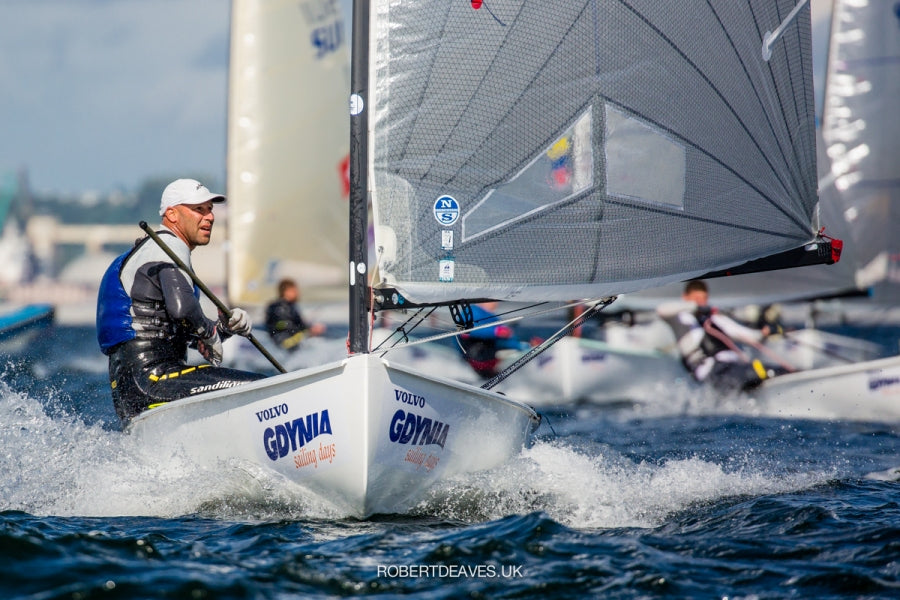
MILAN VUJASINOVIĆ & NS NA TRONU EUROPE
Milan Vujasinović & NS na tronu Europe
FOTO: ROBERT DEAVES
Osim Milana, člana JK Val iz Šibenika, na regati su sudjelovala još dva Hrvatska jedriličara. Obojica su iz Splitskog JK Labud i obojica su ostvarila finalni plasman među najboljih deset Europskih jedriličara! Riječ je o Josipu Olujiću koji je regatu završio na 8. mjestu i o Nenadu Bugarinu koji je na kraju bio 9.
Organizacije Prvenstva ove godine su se prihvatili Poljaci koji su ga smjestili u njihovoj vrlo aktivnoj jedriličarskoj lokaciji u gradu Gdynia. Uvjeti na moru su bili pravi sjevernjački... mnogo oblaka, kiše, niskih temperatura (u odnosu na naše ljetne uvjete).
Ukupno je sudjelovalo 70 jedriličara, uglavnom Europljana. Jedini koji su bili s drugih kontinenata su po jedan jedriličar s Novog Zelanda, Meksika, Venezuele i Argentine. Od njih, najozbiljniji u svojim namjerama bio je Argentinac koji je na kraju završio na sedmom mjestu, dok su se ostali smjestili u donjem dijelu rezultatske ljestvice.
Inače je uobičajeno da se na raznim EP otvorenog karaktera prijavljuju i jedriličari s drugih kontinenata u mnogo većem broju, pogotovo oni koji su u olimpijskim programima i ovakve regate im izvrsno dolaze za brušenje forme, međutim aktualna situacija s Koronom smanjila je broj "stranaca" na minimum. Najviše se osjetio izostanak jedriličara iz Australije i Novog Zelanda, pa je i to jedan od razloga zašto su ove godine zajedno na regati jedrili mladići u naponu snage, zajedno sa svim ostalim mlađim i starijim kategorijama. Tako je u kategoriji natjecatelja mlađih od 23 godine bilo osmero, mastera je bilo deset, grand mastera sedam i great grand mastera čak jedanaest.
Naši predstavnici su u Poljsku otputovali tjedan dana ranije da bi se akomodirali na uvjete, a i da bi napravili što više treninga u većim skupinama, jer ako se zanemari nedavno odjedreno Prvenstvo Hrvatske za klasu Finn, nije bilo niti jednog pravog treninga ili regate u dosta dugom vremenskom periodu.
Event je započeo službenim premjeravanjem u nedjelju 30. kolovoza i za te aktivnosti bila su predviđena tri dana. Prvi natjecateljski dan bio je srijeda 2. rujna i u ritmu od po dva plova dnevno jedrilo se do nedjelje 6. Program regate je ispunjen u maksimalnom obimu i rezultati su se dobili nakon deset jedrenja i sa samo jednim odbacivanjem.
Naš jedriličar koji je Gdyniu napustio sa zlatnim odličjem u svojoj kategoriji je Milan Vujasinović. On je bio i dosta dobar u generalnom plasmanu u kojem je osvojio 13. mjesto. Da je još uvijek ozbiljan kandidat i za puno bolje rezultate pokazuje to da je od deset mogućih rezultata imao tri jednoznamenkasta finiša, od čega je najbolji rezultat bio 2. mjesto u osmom plovu. Ostali rezultati su bili nešto lošiji i najveći broj bodova koji su mu ušli u konačnu kalkulaciju bio je 28.
Ovako velike oscilacije u rezultatima vjerojatno su nastale zbog dosta velikih oscilacija u smjeru vjetra koje su se javljale u drugom dijelu svakog dana jedrenja. U tim trenucima ako ste se nalazili na pogrešnoj strani regatnog polja našli bi se u stvarno nepovoljnoj poziciji iz koje više nije bilo moguće razmišljati o boljem plasmanu. Više o tim detaljima nismo saznali od Milana, koji je odmah nakon završetka regate otputovao u Kiel na Kieler Woche, ali zato su za razgovor bili na raspolaganju druga dva Hrvatska jedriličara.
Gdynia, Baltik... onako, hladniji uvjeti nego ovdje od kuda smo otišli s 30+ stupnjeva. Gore je u prosjeku bilo dvadesetak stupnjeva, a često i niže. Bilo je dosta oblačno, puno kiše... najlakše je to opisati s "Englesko vrijeme". Išli smo desetak dana ranije, jer od ožujka nije bilo pravog treninga. Tako da smo dosta trenirali i imali nekih malih trening regata.
Nekih šest dana prije regate stisnula su me leđa, pa sam morao i jedno vrijeme provesti u mirovanju i ići na masaže da se to opusti. To me je pustilo dan dva prije EP i tada sam izašao na more da vidim da li su leđa u redu.
U jednoj viri to me je opet stisnulo, pa sam zadnji dan pred početak Prvenstva morao provesti na masažama. Tako da sam u regatu ušao malo ukočen, jer nisam bio siguran hoće li se opet u nekoj viri nešto dogoditi. Srećom sve dalje je prošlo u redu, ali na početku se ipak nisam mogao opustiti i to mi je bila mentalna kočnica tog prvog dana. Kad sam se uvjerio da tijelo sluša i da mogu bez straha čupati i u krmu i u orcu opustio sam se i nastavio normalno jedriti.
Što se tiče vremena, imali smo tri različita uvjeta jedrenja. Samo prvog dana je puhalo s mora, a sve ostale dane s kraja. U svim uvjetima bila je zajednička karakteristika značajnih oscilacija u smjeru vjetra od po 20-30°. Tako da se puno toga događalo, mijenjalo... lako se moglo biti naprijed, lako se moglo biti nazad. Ali na kraju se opet pokazalo da su oni koji su imali pravu brzinu sigurno izbijali naprijed.
Za sebe mogu reći da sam odjedrio jednu konstantnu regatu. Imao sam i svojih prilika, a i lako izgubljenih bodova tokom svih dana, ali vozio sam konstantno. Moram reći da mi je to i bio cilj, da održavam visok prosjek... da ne zabrazdim negdje u floti, a i da ne napravim samo povremeni bljesak.
Spomenuti veliki dricevi su me sigurno koštali značajnih bodova u dva plova, npr. u zadnjoj regati gdje sam s petog mjesta pao na dvadeseto. Ali s druge strane ne bi sve ni pripisao tim promjenama, poštenije bi bilo reći da u tim trenucima nisam bio 100% u regati... da nisam bio koncentriran i da nisam pratio što se dešava po polju. Ali svejedno... u zadnju regatu predzadnjeg dana sam ušao kao petoplasirani i kao peti sam i okrenuo gate, u tom trenutku bio sam ispred svih direktnih konkurenata. Nažalost, tada sam se uspavao na minutu i nisam pratio što se događa pa sam odabrao krivu stranu, odnosno okrenuo lijevi gate, a vjetar je otišao u desno tridesetak stupnjeva. Posljedica je bila da sam na bovu od orce došao kao 25. pa sam morao u posljednjoj krmi spašavati što se spasiti može. Tada sam finiširao na osmom mjestu, što isto nije loše, ali...
Josip Olujić, JK Labud
Analizom Josipovih rezultata vidi se da je stvarno održavao dobar prosjek, a imao je čak i pobjedu u 7. plovu. Na kraju je razlika iza trećeplasiranog bila 22 boda. Da je bilo malo više koncentracije i sreće u dva spomenuta jedrenja možda bi bio i u konkurenciji za postolje...
Ovako je s 83 boda završio na osmom mjestu, a da bi cijela priča bila neizvjesnija pobrinuo se drugi Labudaš, Nenad Bugarin, koji je Europsko prvenstvo završio samo jednom mjesto iza Josipa sa samo jednim bodom razlike!
FOTO: ROBERT DEAVES
Sve skupa je moglo i malo bolje završiti, a moglo je i lošije, ipak su uvjeti bili zahtjevni. Trebalo je držati konstantu, što nije bilo ni malo lako, pogotovo zadnjih dana kad smo imali vjetar s kopna koji je mijenjao smjer i po više od 30°. Tako da to nije bilo lako za predvidjeti i oni koji su uspjeli imati konstantne rezultate na kraju su osvojili medalje. Za razliku od Prvenstva Hrvatske ovog puta sam jedrio sa svojom opremom. Tada mi je bila još uvijek na Palmi gdje sam trenirao uoči Korone, ali za Europsko prvenstvo smo je uspjeli prebaciti do Poljske.
Inače, na regati je sve manje više bilo uredno, brzina je bila korektna, ali moram ponoviti da su uvjeti bili toliko promjenljivi da ta brzina, iako je ona uvijek bitna, ipak nije toliko dolazila do izražaja. Tako da su stalno svi bili u konkurenciji za dobar plasman i samo su strategija i taktika donosile prevagu i osiguravale rezultat.
A te promjene vjetra nisu išle po šabloni, inače bi se to moglo lako predvidjeti i postaviti se na moru na pravi način. Ono što se jedino moglo donekle reći da je šablona je to da su se te promjene dešavale u drugom dijelu dana. Krajem dana vjetar bi odlazio u desno, samo što nije bilo lako predvidjeti kad će se dogoditi taj trenutak. S druge strane dešavalo bi se da vjetar ode u desno, pa se vrati, a u nekim drugim slučajevima ode u desno i ne vrati se više... to se npr. desilo zadnju regatu.
Nenad Bugarin, JK Labud
Neno se jednako kao i Josip može pohvaliti jednom pobjedom, a u prvih 10 je imao još četiri finiša!
Oni koji žele napraviti malo detaljniju analizu učinka naših jedriličara mogu to napraviti pomoću službenih rezultata koji se nalaze na ovom linku.
Regatno polje na kojem se jedrilo EP bilo je u obliku štapa s ciljem postavljenim desno od posljednjeg gatea, a ciljano vrijeme jedrenja je bilo 75 minuta.
Nakon ove regate pred Finnistima je duža pauza koja bi se trebala prekinuti na iduće proljeće, jer su trenutno sve ozbiljnije regate otkazane. Kulminacija sezone, ako se izuzmu Olimpijske igre koje su prebačene na iduće ljeto, trebala bi biti u Portugalu na svjetskom prvenstvu koje će se jedriti u Portu, jer će se tada podijeliti posljednja slobodna mjesta za Tokio, a naši predstavnici još nisu osigurali normu koja bi ih trebala jednog od njih tamo i odvesti.
READ MORE
READ MORE

TRUSTING IN NORTH
TRUSTING IN NORTH
3Di Powered Vento Solare is Making the Most of Their Summer Sailing
Bill Kneller is passionate about getting on the water. For the past 17 years, he has been working hard to optimize his sailing programs and working closely with his sail experts and designers at North Sails in Portsmouth, RI to make sure he’s got the right sails for the job and the right set up to help him achieve his sailing goals. 3Di has played a role in his local sailing success onboard his J/109, providing him with a competitive sail plan, which has helped his team of sailing friends perform at their full potential. From weeknight PHRF racing on Narragansett Bay to weekend regattas in the New England area, Vento Solare is a familiar face on the race course, battling in the top of the fleet in all conditions she’s up against.
We caught up with Bill and the team at the dock just after they finished the (Jamestown) Around the Island Race, hosted by Conanicut Yacht Club, to find out what this program is all about. Vento Solare took 17th out of 78 in one of the largest and competitive PHRF events in Newport, RI. He introduced us to his team, explained what positions they fill on the boat, and how they’ve built a great relationship with their skipper and friend –which is what this program is all about. Hear more about Bill’s corinthian team, Vento Solare, why he loves sailing, and how his local North Sails network has been supporting his programs over the years, helping him reach his goals and be successful on the water doing what he loves most.
From us at North Sails, we want to wish Bill and the team the best of luck in the remainder of the 2020 season!
READ MORE
READ MORE

TWICE ON TOP
TWICE ON TOP
Argo Racing Breaks Two Records in a Doubleheader Week of Racing
📸: Rick Bannerot
First, it was the Around Jamestown record, then it was the Vineyard Race, a mix of excellent conditions and determined crew gave Jason Caroll’s MOD70 Argo the opportunity to break, not one, but two records this week on New England waters. Is the team excited? Yes. Are they satisfied? No. North Sails sat down with Project Manager Chad Corning to talk about their titles, and what they are aiming for next.
NS: What a week! Tell us about the sailing.
Chad Corning: The first one was the around Jamestown record, which is a cool local record here in Newport. It’s about 19 miles around Conanicut Island in Narragansett Bay. We had been doing laps around Jamestown as a training exercise. In the MOD 70, it gives us a focused training session. It was probably been the fourth or fifth time that we had contemplating doing a lap of the island this summer.
We got out on Tuesday, the wind was easterly, southeasterly, it was an okay direction for going around because you want an easterly or westerly to reach the whole time. So we got out and we got the boat ready to go, the sails up, and by the time we opted to start, the wind had become even more easterly, which made it even better. We were able to fetch out to Beavertail, have a nice fast Gennaker run down the backside of Jamestown, and then just have to do one tack on the way back up to the bridge. As it goes with records, everything needs to be perfect and it was a perfect day on Tuesday.
The Vineyard Race was quite different, you look at the weather and you download it into the computer and it spits out a route and there’s a lot of modeling. Hypothetically, the record was possible, but the conditions in the forecast didn’t quite meet up. By the time we got back into the sound, it looked to be impossible because of light winds between the tower and Block Island and the entrance to the sound that was not really expected.
Then things looked up, there was much more wind than forecast for the next leg, from the entrance to the sound to the finish. So all of a sudden we started ripping and started doing the math and made the decision to keep pushing the team. From the navigator’s desk, I knew it would be kind of five minutes either way with a couple of hours to go. It was an exciting few hours, the boat was lit and everyone was just kind of pushing as hard as we could. Which makes it very satisfying after an intense effort like that to get it that was really cool. It was just by a few minutes and it was kind of breaking the record that we set in 2018, but a record of a record and it was cool.
With no other boats to race against, in a race like the Vineyard Race, it’s really the only way to kind of stay focused. So it was great to get it.
📸: Sharon Green / Ultimate Sailing
NS: How did the sails and equipment affect the decision to keep pushing for the record in changing and building conditions? How was the performance of the boat?
Corning: Our relationship with North Sails, starts with our sailmaker Fuzz Foster and Steve Calder our sail designer, it’s a great collaborative process with those guys and that sets us up to be very confident. We didn’t think twice about anything with the sails and we had a mixed sort of mixed inventory age-wise. We had our original 3Di main, we have a newer one, but didn’t use it. We had our original Gennaker which is two-plus years old. It’s been around the block, it’s been to Hawaii and we pushed that sail very hard and didn’t even think about it.
We know that even if it’s older stuff, we can be confident in pushing just as hard as we want. We’ve had zero trouble and the sails have been perfect. In terms of North, I can’t give enough credit to Fuzz and Steve, in terms of how they set us up on all this, that’s the secret sauce.
NS: Because of travel restrictions, your crew is mostly Americans, right?
Corning: We have a great team of sailors. Some guys from the UK and France that we would normally have weren’t here because of travel restrictions, but that’s okay. We’ve got good people here in Newport and here in the US that we tap into. Seven out of eight onboard were American, other than Brian Thompson who came from the UK, who’s a multi-hull sort of God and he helps us sort of stay out of trouble.
Charlie Ogletree has the same sort of status in terms of experience as Brian, so those two guys gave us sort of the depth of experience on the boat and then the rest of the team, it was Jason Carroll , myself, some guys here from Newport, and US sailors, all who have a lot of experience on the boat. It’s kind of a low drama, good chemistry team and that just makes everything very easy. Everyone’s got each other’s back and everyone knows what to do instinctually without … there’s very little verbal communication. It’s a bit of a machine.
📸: Rick Bannerot
NS: What’s next for the Argo crew?
Corning: A record that we really want is the Caribbean 600 record, which has been elusive, although we’ve tried a couple of times, so we are reconfiguring the boat with new foils and new rudders for this winter campaign and the campaign next year. We have a very focused program to start that race on the very best possible foot. So, hopefully, the conditions are such where that’s possible.
Then next year we’ll be in Europe with the boat, for the Fastnet and Middle Sea Races. It’ll be cool to do the Fastnet on the new course for the first time and I suspect many of the hundred footers will race, so a record or anything line honors might be impossible for that race, but perhaps the Middle Sea race record is in our sights.
Then maybe the last thing we have in the longterm plan is to perhaps try for the Route of Discovery record which is Spain over to the Bahamas in the fall. But that is obviously a pretty far out there and we’ll kind of see what happens with it.
READ MORE
READ MORE
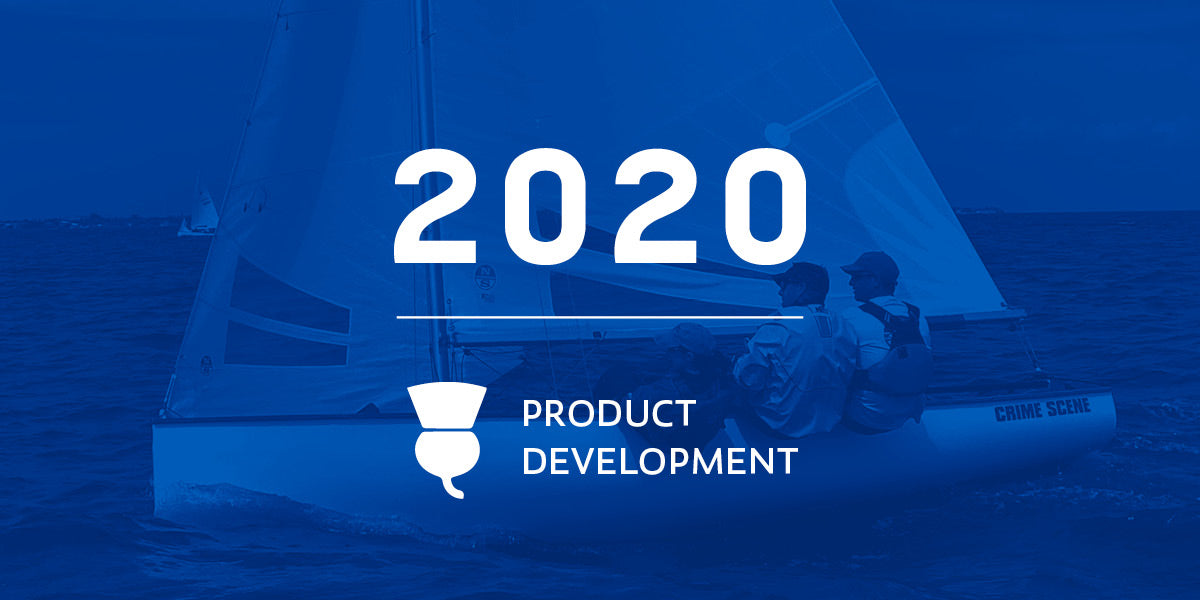
INTRODUCING THE NEW THISTLE DSD+ MAINSAIL
INTRODUCING THE NEW THISTLE DSD+ MAINSAIL
Smoother Sail Plan & More Power Across The Conditions
As the leading sailmaker in the Thistle class, we are proud to introduce a new mainsail to the North Sails Thistle inventory. Class leaders Paul Abdullah, Mike Ingham, and North Sail Designer Mike Marshall have been working hard to make your Thistle sailing even better than before.
The DSD+ mainsail is built out of Dimension/Polyant 165SQ that proves to be very durable, while the finish keeps the leech nice and straight through all conditions. With a radial lower section, the lower leech stays static as the mast bend is adjusted to match the conditions, providing the user with a smoother, flatter sail plan, with less overbend wrinkles. Incorporating a slight luff curve the sail shape is induced, transferring the power down low, opening the leech.
The new DSD+ Mainsail is another step forward in North Sails goal to make the fastest sails possible. This new mainsail is very popular with inland lake sailors who see more flatter water conditions, though it has seen great success and proven its reliability in open water conditions as well. Standard features include battens, sail numbers, class royalties, insignia, vision window, sail bag, and an optional set of battens.
Have questions? We are here to help. Customer service and education on our products is even more important than ever before. Learn more about North Sails new Thistle mainsail and how to achieve maximum power throughout a range of conditions. Watch our webinar, featuring Class experts Paul Abdullah, Mike Ingham, and North Sail Designer Mike Marshall to get the full download on our newest addition to the North Sails Thistle inventory, the DSD+ Mainsail.
Shop Sails Contact Your Expert
READ MORE
READ MORE
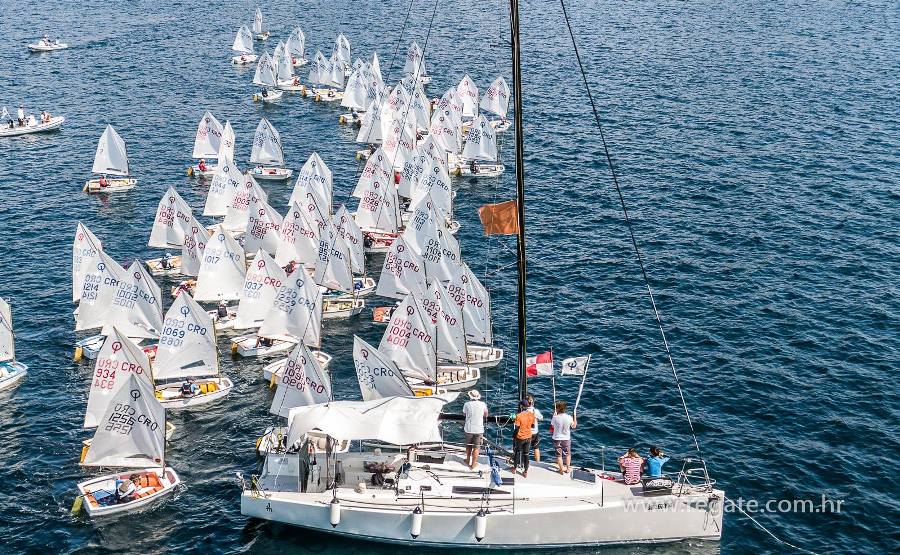
PH KLASE OPTIMIST U12
PH klase Optimist U12
JK Val iz Šibenika organizirao je trodnevnu regatu klase Optimist koja je bila ograničena samo na najmlađe jedriličare i imala je predznak Prvenstva Hrvatske. Jedrili su samo mlađi od 12 godina, a skupilo ih se 71 s cijelog Jadrana.
Vremenski uvjeti u Šibeniku ih nisu baš mazili, jer se jedrilo samo u petak. Subota i nedjelja su protekli samo u kupanju i zabavljanju ispred kluba jer je puhalo vrlo jako, a na udare i olujno jugo.
U petak je flote izašla na more oko 13 sati, a jedrilo se po laganom jugozapadnjaku. S obzirom da se jedrilo u Šibenskoj luci polje je bilo relativno kratko, ali s druge strane vjetar je bio lagan i trajanje jedrenja je bilo baš kako treba. Ukupno su se odjedrila dva plova, odnosno maksimalan broj predviđen za jedan dan u Oglasu regate.
Malene nade hrvatskog jedrenja su bile poprilično disciplinirane na startu i samo četiri UFD-a su zapisana na ploči istaknutoj na brodu Regatnog odbora. Sve četiri kazne bile u u prvom plovu, a u drugom više toga nije bilo jer kako je prognoza nekoliko dana ranije najavljivala jako jugo za vikend, treneri su sigurno savjetovali svojim natjecateljima veću opreznost na startu drugog plova s obzirom da je s takvim razvojem vremenske situacije svaki bod osvojen u petak bio vrlo važan.
Po pitanju bodova na prvom i drugom mjestu s jednakim brojem bodova, kraj dana su dočekali Ema Grabar i Bepo Duplančić. Bepo je bio konstantan i u oba plova je osvojio drugo mjesto, ali Emina pobjeda u prvom plovu osigurala joj je vodeću poziciju unatoč trećem mjestu u drugom plovu. U tom jedrenju najbrži je bio Emin klupski kolega Marko Puljiz, ali bolje od trećeg mjesta nije mogao, jer mu je 7. mjesto u prvom plovu donijelo dosta kaznenih bodova u odnosu na spomenuti dvojac.
Subota je od samog početka bila u znaku vedrog juga koje je konstantno puhalo preko 20 čvorova, a za kategoriju U12 preporuka VZN-a je da ne jedre po vjetru preko 16 čvorova. U jednom trenu je na kratko vjetar oslabio na oko 15 čvorova, ali ubrzo se pokazalo da je u pitanju bio kratki smiraj jer je vjetar otišao malo u desno. Nakon tog prijelaza ponovno je pojačao na prethodne brzine pa je RO morao zaključiti druženje za taj dan.
Da ne bi sve propalo pobrinuli su se domaćini koji su u dogovoru s Nacionalnim parkom Krka osigurali svim sudionicima besplatan ulazak u park i njegov obilazak. Mnogim mališanima je to bio prvi kontakt s krškom ljepoticom i sigurno će im ostati u lijepom sjećanju. Ali i onima koji su odlučili ostati u Šibeniku nije bilo dosadno jer su se klinci pobrinuli da im dan ipak prođe u smijehu i veselju.
Nedjelja je za razliku od subote bila oblačna i dosta vjetrovitija. Jedino kratko zatišje bilo je ujutro oko 11 sati, ali jugo se ubrzo vraća u turbo mod i RO u 14 sati proglašava ovo Prvenstvo Hrvatske završenim.
Rezultati po kojima su se podijelile nagrade su bili oni od petka, a na vrhu ljestvice bila su imena od kojih se i očekivalo da će biti glavni akteri raspleta.
U generalnom poretku mjesto na postolju su osvojili:
EMA GRABAR - JK ULJANIK, PULA
BEPO DUPLANČIĆ - JK ZENTA, SPLIT
MARKO PULJIZ - JK ULJANIK, PULA
U konkurenciji djevojčica raspored je bio slijedeći:
EMA GRABAR - JK ULJANIK, PULA
MARTA LOLIĆ - JK SPLIT, SPLIT
DORA SAMARŽIJA - JK SV.NIKOLA, ZAGREB
A što se tiče dječaka zlato, srebro i broncu osvojili su:
BEPO DUPLANČIĆ - JK ZENTA, SPLIT
MARKO PULJIZ - JK ULJANIK, PULA
TOMA SMIRČIĆ, JK SPLIT, SPLIT
Treba spomenuti i da je u petak navečer u Šibeniku bilo otvaranje Festivala svjetla koji organizira član JK Val, Zoran Lučić. Svečanost je već tradicionalno održana na moru, gdje su izvođačima koji su bili na pontonu ispred rive, kulisu već tradicionalno radile prigodno osvijetljene jedrilice iz Šibenskog jedriličarskog kluba.
READ MORE
READ MORE
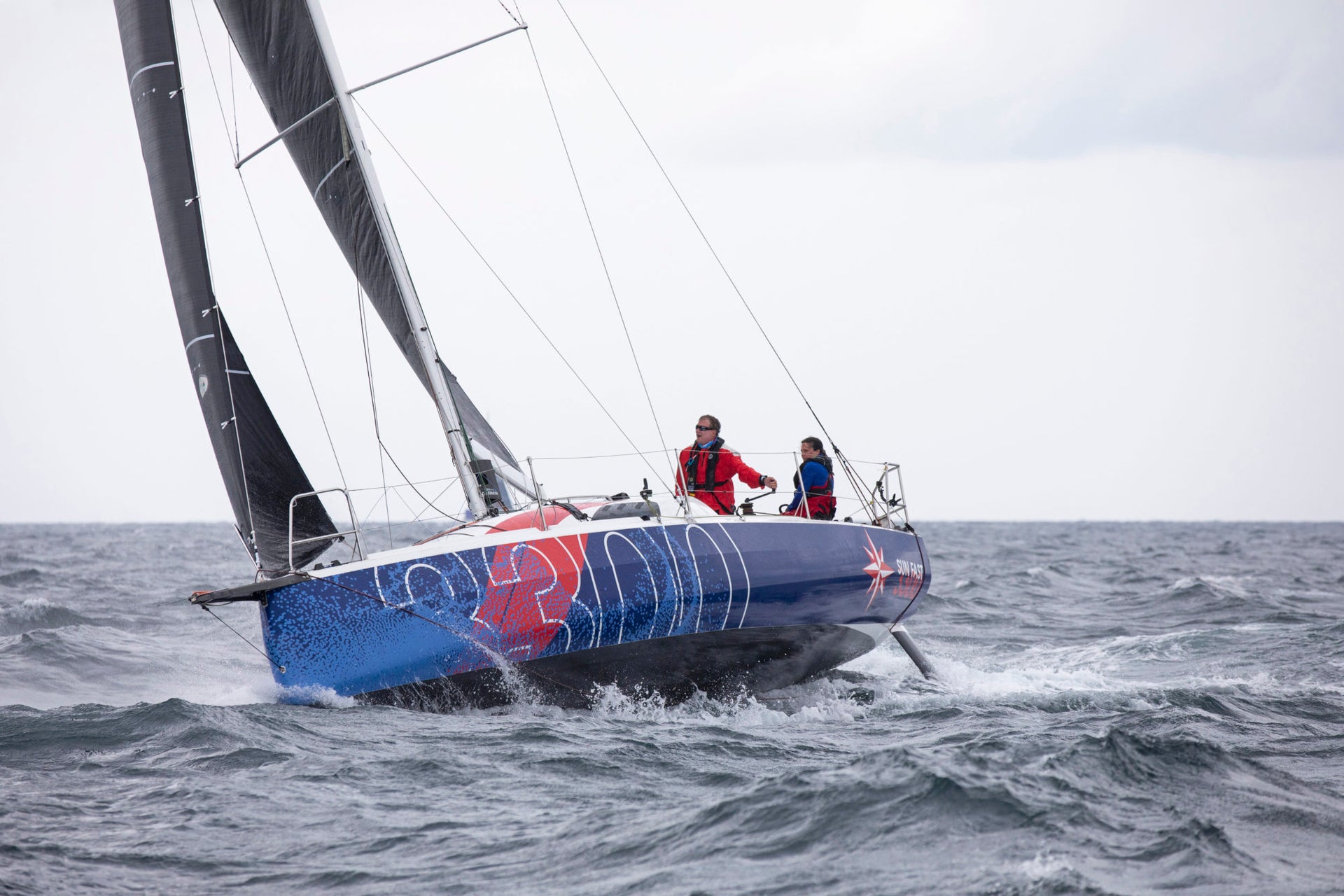
DOUBLEHANDED TEAMWORK
DOUBLEHANDED TEAMWORK
Ken Read and Suzy Leech Share Their Latest Insights
📸: Billy Black
Balancing team members’ strengths is a vital part of taking on double-handed offshore sailing. After days offshore as a pair, with Ken Read as skipper and Suzy Leech as tactician share the secrets that make their partnership a success on the racecourse. Click here to watch the team debrief their summer of racing and win in the Ida Lewis Distance Race.
NS: How do you make navigational decisions as a team?
Leech: Partnership is key- both crew need to know how to navigate. Teach your partner. Each person should do their own homework. Then come together and have a discussion.
Read: We split the macro and micro navigation. I was primarily the question asker for specific micro navigation/tactical questions and Suzy would spend the time pouring through the data looking for the answers. And she was great at making sure we didn’t end up on the beach!
📸: Billy Black
NS: What about race preparation? What are you doing before the start line?
Leech: Preparation is even more important when sailing double-handed, use the season of training data … weeks of weather observations (which model is accurate this season), days of routing… keeps you oriented, especially when you don’t have time to calibrate.
Read: Especially for these 24-hour races, it is imperative to leave the dock with a very clear view of the racecourse and the expected weather and sail choices for the racecourse. Fully crewed, you can pour over data and make decisions on the fly. Often we had some pretty straight forward preconceived notions of what was next and that certainly was a benefit in a 24-hour race.
Leech: Make safe gains… No big flyers.
Read: We thought we would be pretty fast and well prepared and there was really no need to be crazy. No question knowing the area of Rhode Island Sound helped the two races this summer. A lot of tidal features around Block Island for example and it certainly helped having sailed around there for 40 years!
📸: North Sails
NS: How do you deal with something unexpected during the race? How do you prevent mistakes?
Leech: When you are sailing, take the time to check, before the quick answer, especially when tired.
Read: Being tired is the enemy of any race. Any distance. As well as food and water consumption. For sure we have gotten better at making sure we stay hydrated and there is enough food in us. This is key. And prepping with the right clothing. For sure with Suzy and I, we fell into the boat speed vs boat handling/nav roles. Just happens to be what we probably do best. There is no doubt in my mind that we would have to get better at the other person’s role, though as the longer the race the more the other person has to do more.
Leech: Remember to stick to your guns – trust your gut (e.g. on the way home, current around Point Judith was ripping… based on homework done, should have given wider berth).
Read: I think that was tired brains after a long night with zero sleep! These things happen. You have to be prepared and know where you are in the fleet scoring at the time. We thought we were pretty safely ahead on corrected time at that stage so we probably mentally fell asleep for a bit there.
📸: Billy Black
Leech: Look at trends … forecasts may be off, but which one has been closest? What trend does it indicate will happen next?
Read: It’s normal boat racing, really. Know the course, know the anticipated weather per leg, know the competition, know the strengths and weaknesses of your boat and sail inventory, and work within all of the above.
Leech: Stick with the game plan! And know your competition.
READ MORE
READ MORE
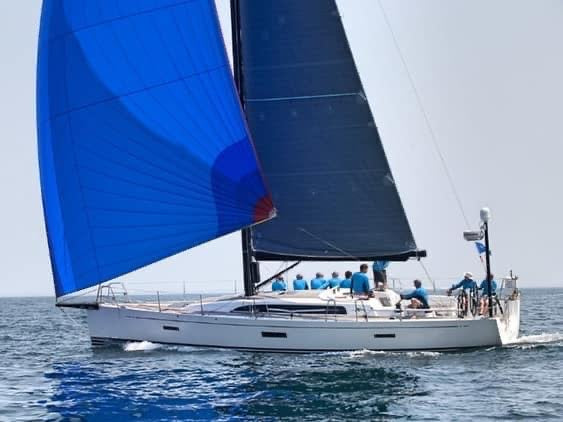
CUSTOMER SPOTLIGHT: GORD WYLIE
CUSTOMER SPOTLIGHT: GORD WYLIE
New Adventure Awaits with XP44 Phoenix
With almost 40 years sailing under his belt, Gord Wylie is a veteran of the new boat ownership club, having four keelboats so far. His favourite? The J/29. It was his first keelboat and chance to be a skipper while being in charge of crew. He got the boat fixed up over time and turned it into a winning boat. His focus now though is his new XP44, which he sails out of Royal Vancouver Yacht Club. North Sails expert Drew Mitchell caught up with Gord to share details of his new vessel.
Gord, the new XP 44 you have brought to Vancouver is quite the machine. What was the decision maker on this specific boat? Is it turbo'd correct?
Analysis, years of looking at boats. We were looking for a boat that can grow with our family as our children are getting older that has the ability for offshore racing and cruising. This boat is a long term boat for our family, 10 years or more. We wanted this boat for Vic Maui 2020.
You purchased and moved this boat to Vancouver during this pandemic, did you run into any issues and where did the boat come from?
We relied on the knowledge of professionals in our sailing community. Ross MacDonald from North Sails and Ian Fraser from Fraser Yachts for transport and boat knowledge.The boat came from Southampton to Tacoma, transport from Tacoma to Vancouver was difficult and in the middle of shutdown. Set up the boat when it arrived was also difficult as we were not able to have assistance from many people.
Once you got the boat to Vancouver the pandemic was in full swing, this obviously changed your racing plans to cruising plans. How does the boat set up differently for two different types of sailing?
We initially set up the boat for cruising but did switch to race mode for a bit, the racer in me needed to test out the boat in race mode. We have scratched the surface on testing the race sails, the boat came with a large inventory. Ross MacDonald has been very helpful with boat knowledge and sail inventory.
When the sail inventory came into the loft I could barely get in the front door. With such a large inventory how do you plan to manage it?
We have about 30 sails for the boat and have cleaned out the kid clutter in the basement and built a sail loft. Ross MacDonald and Dennis Lefeaux North Sails Vancouver> have been and are being very helpful with sorting through the sail inventory.
I saw you out in the WVYC single/double handed race earlier in the year, how did the boat perform? Was it difficult to run such a large boat with only two sailors on board such a new large boat?
We really enjoyed the day, it was our first time in any breeze and give a shout out to Drew Mitchell for hopping on board and helping with some stuck cars not adjusting properly.
Obviously with the racing scene shut down in Vancouver you must be enjoying some cruising, where have you headed and does this boat cruise as well as she races? What are some of the features on the boat that make cruising enjoyable?
We have been cruising in Desolation Sound and Johnson Strait this summer, my favorite stop this year in Desolation Sound was in Wallace Cove. We have some great cruising features on this boat including a cockpit table that recesses into the floor so you can have a wide open cockpit when underway and a dodger that folds down into a garage.
Say that the racing scene comes back in 2021. What events do you plan on attending?
Anything and everything, we are planning on racing offshore and PNW races.
Any recommendations to future boat owners on purchasing sailboats outside of Canada?
Do not underestimate the value of a broker who understands international shipping, a lot of money can be lost if not done correctly. I was fortunate enough to have an excellent broker.
How did the name Phoenix come to fruition?
We needed to come up with a name during the middle of the lock down and pandemic, Phoenix symbolizes a better future, rising from the ashes and seemed fitting for the times we are in and needing to look into a brighter future.
READ MORE
READ MORE
